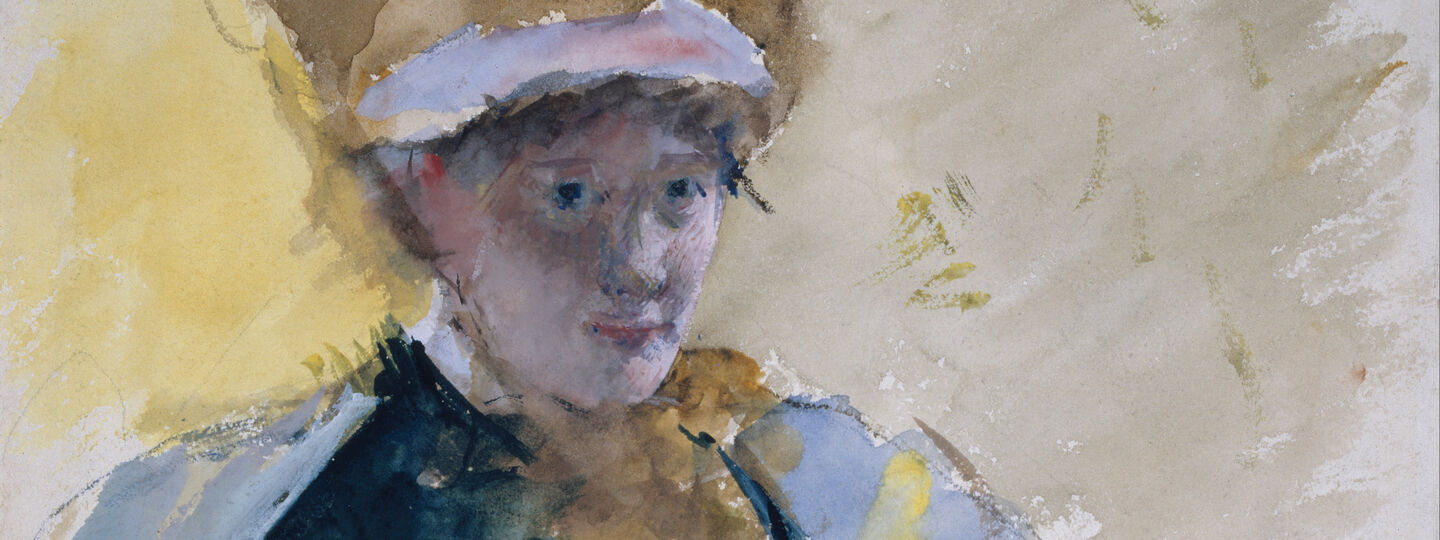
Info
Autorretrato de Mary Cassatt
Mary Cassatt
1880
Smithsonian's National Portrait Gallery

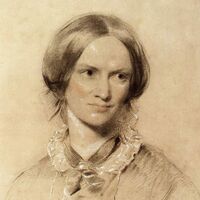
Charlotte Brontë (21 April 1816 – 31 March 1855) was an English novelist and poet, the eldest of the three Brontë sisters who survived into adulthood, whose novels are English literature standards. She wrote Jane Eyre under the pen name Currer Bell. Early life and education Charlotte was born in Thornton, Yorkshire in 1816, the third of six children, to Maria (née Branwell) and her husband Patrick Brontë (formerly surnamed Brunty or Prunty), an Irish Anglican clergyman. In 1820, the family moved a few miles to the village of Haworth, where Patrick had been appointed Perpetual Curate of St Michael and All Angels Church. Charlotte's mother died of cancer on 15 September 1821, leaving five daughters and a son to be taken care of by her sister Elizabeth Branwell. In August 1824, Charlotte was sent with three of her sisters, Emily, Maria, and Elizabeth, to the Clergy Daughters' School at Cowan Bridge in Lancashire (She used the school as the basis for Lowood School in Jane Eyre). The school's poor conditions, Charlotte maintained, permanently affected her health and physical development and hastened the deaths of her two elder sisters, Maria (born 1814) and Elizabeth (born 1815), who died of tuberculosis in June 1825. Soon after their deaths, her father removed Charlotte and Emily from the school. At home in Haworth Parsonage Charlotte acted as "the motherly friend and guardian of her younger sisters". She and her surviving siblings — Branwell, Emily, and Anne – created their own literary fictional worlds, and began chronicling the lives and struggles of the inhabitants of these imaginary kingdoms. Charlotte and Branwell wrote Byronic stories about their imagined country, "Angria", and Emily and Anne wrote articles and poems about "Gondal". The sagas they created were elaborate and convoluted (and still exist in partial manuscripts) and provided them with an obsessive interest during childhood and early adolescence, which prepared them for their literary vocations in adulthood. Charlotte continued her education at Roe Head in Mirfield, from 1831 to 1832, where she met her lifelong friends and correspondents, Ellen Nussey and Mary Taylor. Shortly after she wrote the novella The Green Dwarf (1833) using the name Wellesley. Charlotte returned to Roe Head as a teacher from 1835 to 1838. In 1839, she took up the first of many positions as governess to families in Yorkshire, a career she pursued until 1841. Politically a Tory, she preached tolerance rather than revolution. She held high moral principles, and, despite her shyness in company, was always prepared to argue her beliefs. Brussels In 1842 Charlotte and Emily travelled to Brussels to enrol in a boarding school run by Constantin Heger (1809–96) and his wife Claire Zoé Parent Heger (1804–87). In return for board and tuition, Charlotte taught English and Emily taught music. Their time at the boarding school was cut short when Elizabeth Branwell, their aunt who joined the family after the death of their mother to look after the children, died of internal obstruction in October 1842. Charlotte returned alone to Brussels in January 1843 to take up a teaching post at the school. Her second stay was not a happy one; she became lonely, homesick and deeply attached to Constantin Heger. She returned to Haworth in January 1844 and used her time at the boarding school as the inspiration for some experiences in The Professor and Villette. First publication In May 1846, Charlotte, Emily, and Anne self-financed the publication of a joint collection of poetry under the assumed names of Currer, Ellis and Acton Bell. These pseudonyms veiled the sisters' gender whilst preserving their real initials, thus Charlotte was "Currer Bell". "Bell" was the middle name of Haworth's curate, Arthur Bell Nicholls, whom Charlotte later married. On the decision to use noms de plume, Charlotte wrote: Averse to personal publicity, we veiled our own names under those of Currer, Ellis and Acton Bell; the ambiguous choice being dictated by a sort of conscientious scruple at assuming Christian names positively masculine, while we did not like to declare ourselves women, because — without at that time suspecting that our mode of writing and thinking was not what is called 'feminine' – we had a vague impression that authoresses are liable to be looked on with prejudice; we had noticed how critics sometimes use for their chastisement the weapon of personality, and for their reward, a flattery, which is not true praise. Although only two copies of the collection of poetry were sold, the sisters continued writing for publication and began their first novels, continuing to use their noms de plume when sending manuscripts to potential publishers. Jane Eyre Charlotte's first manuscript, The Professor, did not secure a publisher, although she was heartened by an encouraging response from Smith, Elder & Co of Cornhill, who expressed an interest in any longer works which "Currer Bell" might wish to send. Charlotte responded by finishing and sending a second manuscript in August 1847, and six weeks later Jane Eyre: An Autobiography, was published. Jane Eyre was a success, and initially received favourable reviews. There was speculation about the identity of Currer Bell, and whether Bell was a man or a woman. The speculation heightened on the subsequent publication of novels by Charlotte's sisters: Emily's Wuthering Heights by "Ellis Bell" and Anne's Agnes Grey by "Acton Bell". Accompanying the speculation was a change in the critical reaction to Charlotte's work; accusations began to be made that Charlotte's writing was "coarse", a judgement which was made more readily once it was suspected that "Currer Bell" was a woman. However sales of Jane Eyre continued to be strong, and may even have increased due to the novel's developing reputation as an 'improper' book. Shirley and family bereavements Following the success of Jane Eyre, in 1848 Charlotte began work on the manuscript of her second novel, Shirley. The manuscript was only partially completed when the Brontë household suffered a tragic turn of events, experiencing the deaths of three family members within eight months. In September 1848 Charlotte's only brother, Branwell, died of chronic bronchitis and marasmus exacerbated by heavy drinking, although Charlotte believed his death was due to tuberculosis. Branwell was a suspected "opium eater", a laudanum addict. Emily became seriously ill shortly after Branwell's funeral, and died of pulmonary tuberculosis in December 1848. Anne died of the same disease in May 1849. Charlotte was unable to write at this time. After Anne's death Charlotte resumed writing as a way of dealing with her grief, and Shirley was published in October 1849. Shirley deals with the themes of industrial unrest and the role of women in society. Unlike Jane Eyre, which is written from the first-person perspective of the main character, Shirley is written in the third-person and lacks the emotional immediacy of Jane Eyre, and reviewers found it less shocking. In society In view of the success of her novels, particularly Jane Eyre, Charlotte was persuaded by her publisher to visit London occasionally, where she revealed her true identity and began to move in a more exalted social circle, becoming friends with Harriet Martineau and Elizabeth Gaskell, and acquainted with William Makepeace Thackeray and G. H. Lewes. She never left Haworth for more than a few weeks at a time as she did not want to leave her ageing father's side. Thackeray’s daughter, the writer Anne Isabella Thackeray Ritchie recalled a visit to her father by Charlotte: …two gentlemen come in, leading a tiny, delicate, serious, little lady, with fair straight hair, and steady eyes. She may be a little over thirty; she is dressed in a little barège dress with a pattern of faint green moss. She enters in mittens, in silence, in seriousness; our hearts are beating with wild excitement. This then is the authoress, the unknown power whose books have set all London talking, reading, speculating; some people even say our father wrote the books – the wonderful books… The moment is so breathless that dinner comes as a relief to the solemnity of the occasion, and we all smile as my father stoops to offer his arm; for, genius though she may be, Miss Brontë can barely reach his elbow. My own personal impressions are that she is somewhat grave and stern, specially to forward little girls who wish to chatter… Every one waited for the brilliant conversation which never began at all. Miss Brontë retired to the sofa in the study, and murmured a low word now and then to our kind governess… the conversation grew dimmer and more dim, the ladies sat round still expectant, my father was too much perturbed by the gloom and the silence to be able to cope with it at all… after Miss Brontë had left, I was surprised to see my father opening the front door with his hat on. He put his fingers to his lips, walked out into the darkness, and shut the door quietly behind him… long afterwards… Mrs. Procter asked me if I knew what had happened… It was one of the dullest evenings [Mrs Procter] had ever spent in her life… the ladies who had all come expecting so much delightful conversation, and the gloom and the constraint, and how finally, overwhelmed by the situation, my father had quietly left the room, left the house, and gone off to his club. Friendship with Elizabeth Gaskell Charlotte sent copies of Shirley to leading authors of the day, including Elizabeth Gaskell. Gaskell and Charlotte met in August 1850 and began a friendship which, whilst not necessarily close, was significant in that Gaskell wrote Charlotte's biography after her death in 1855. The Life of Charlotte Brontë, was published in 1857 and was unusual at the time in that, rather than analysing its subject's achievements, it concentrated on the private details of Charlotte's life, in particular placing emphasis on aspects which countered the accusations of 'coarseness' which had been levelled at Charlotte's writing. Though frank in places, Gaskell was selective about which details she revealed; for example, she suppressed details of Charlotte's love for Heger, a married man, as being too much of an affront to contemporary morals and as a source of distress to Charlotte's still-living friends, father and husband. Gaskell also provided doubtful and inaccurate information about Patrick Brontë, claiming, for example, that he did not allow his children to eat meat. This is refuted by one of Emily Brontë's diary papers, in which she describes the preparation of meat and potatoes for dinner at the parsonage, as Juliet Barker points out in her biography, The Brontës. It has been argued that the particular approach of Mrs Gaskell transferred the focus of attention away from the 'difficult' novels, not just of Charlotte but all the sisters, and began a process of sanctification of their private lives. Villette Charlotte's third published novel, and the last to be published during her lifetime, was Villette, which came out in 1853. Its main themes include isolation, how such a condition can be borne, and the internal conflict brought about by societal repression of individual desire. Its main character, Lucy Snowe, travels abroad to teach in a boarding school in the fictional town of Villette, where she encounters a culture and religion different to her own, and where she falls in love with a man ('Paul Emanuel') whom she cannot marry. Her experiences result in her having a breakdown, but eventually she achieves independence and fulfilment in running her own school. Villette marked Charlotte's return to writing from a first-person perspective (that of Lucy Snowe), a technique she had used successfully in Jane Eyre. Another similarity to Jane Eyre was Charlotte's use of aspects from her own life as inspiration for fictional events, in particular reworking her time spent at the pensionnat in Brussels into Lucy spending time teaching at the boarding school, and falling in love with Constantin Heger into Lucy falling in love with 'Paul Emanuel'. Villette was acknowledged by the critics of the day as a potent and sophisticated piece of writing, although it was criticised for its 'coarseness' and not suitably 'feminine' in its portrayal of Lucy's desires. Illness and subsequent death In June 1854, Charlotte married Arthur Bell Nicholls, her father's curate and possibly the model for Jane Eyre's St. John Rivers. She became pregnant soon after the marriage. Her health declined rapidly during this time, and according to Gaskell, she was attacked by "sensations of perpetual nausea and ever-recurring faintness." Charlotte died, with her unborn child, on 31 March 1855, at the age of 38. Her death certificate gives the cause of death as phthisis (tuberculosis), but many biographers[who?] suggest she may have died from dehydration and malnourishment, caused by excessive vomiting from severe morning sickness or hyperemesis gravidarum. There is evidence to suggest that Charlotte died from typhus she may have caught from Tabitha Ackroyd, the Brontë household's oldest servant, who died shortly before her. Charlotte was interred in the family vault in the Church of St Michael and All Angels at Haworth. Posthumously, her first-written novel was published in 1857. The fragment she worked on in her last years in 1860 has been twice completed by recent authors, the more famous version being Emma Brown: A Novel from the Unfinished Manuscript by Charlotte Brontë by Clare Boylan in 2003. Much Angria material has appeared in published form since the author's death.
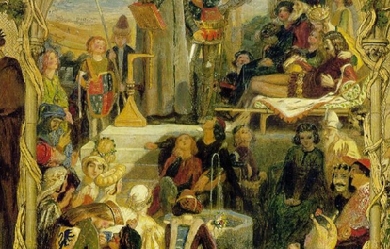
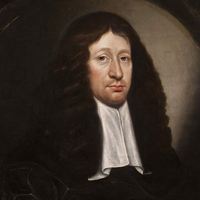
Andrew Marvell (31 March 1621– 16 August 1678) was an English metaphysical poet, satirist and politician who sat in the House of Commons at various times between 1659 and 1678. During the Commonwealth period he was a colleague and friend of John Milton. His poems range from the love-song “To His Coy Mistress”, to evocations of an aristocratic country house and garden in “Upon Appleton House” and “The Garden”, the political address “An Horatian Ode upon Cromwell’s Return from Ireland”, and the later personal and political satires “Flecknoe” and “The Character of Holland”. Early life Marvell was born in Winestead-in-Holderness, East Riding of Yorkshire, near the city of Kingston upon Hull, the son of a Church of England clergyman also named Andrew Marvell. The family moved to Hull when his father was appointed Lecturer at Holy Trinity Church there, and Marvell was educated at Hull Grammar School. A secondary school in the city, the Andrew Marvell Business and Enterprise College, is now named after him. At the age of 13, Marvell attended Trinity College, Cambridge and eventually received a BA degree. A portrait of Marvell attributed to Godfrey Kneller hangs in Trinity College’s collection. Afterwards, from the middle of 1642 onwards, Marvell probably travelled in continental Europe. He may well have served as a tutor for an aristocrat on the Grand Tour, but the facts are not clear on this point. While England was embroiled in the civil war, Marvell seems to have remained on the continent until 1647. It is not known exactly where his travels took him, except that he was in Rome in 1645 and Milton later reported that Marvell had mastered four languages, including French, Italian and Spanish. First poems and Marvell’s time at Nun Appleton Marvell’s first poems, which were written in Latin and Greek and published when he was still at Cambridge, lamented a visitation of the plague and celebrated the birth of a child to King Charles I and Queen Henrietta Maria. He only belatedly became sympathetic to the successive regimes during the Interregnum after Charles I’s execution on 30 January 1649. His “Horatian Ode”, a political poem dated to early 1650, responds with lament to the regicide even as it praises Oliver Cromwell’s return from Ireland. Circa 1650–52, Marvell served as tutor to the daughter of the Lord General Thomas Fairfax, who had recently relinquished command of the Parliamentary army to Cromwell. He lived during that time at Nun Appleton Hall, near York, where he continued to write poetry. One poem, “Upon Appleton House, To My Lord Fairfax”, uses a description of the estate as a way of exploring Fairfax’s and Marvell’s own situation in a time of war and political change. Probably the best-known poem he wrote at this time is “To His Coy Mistress”. Anglo-Dutch War and employment as Latin secretary During the period of increasing tensions leading up to the First Anglo-Dutch War of 1653, Marvell wrote the satirical “Character of Holland,” repeating the then current stereotype of the Dutch as “drunken and profane”: "This indigested vomit of the Sea,/ Fell to the Dutch by Just Propriety.” He became a tutor to Cromwell’s ward, William Dutton, in 1653, and moved to live with his pupil at the house of John Oxenbridge in Eton. Oxenbridge had made two trips to Bermuda, and it is thought that this inspired Marvell to write his poem Bermudas. He also wrote several poems in praise of Cromwell, who was by this time Lord Protector of England. In 1656 Marvell and Dutton travelled to France, to visit the Protestant Academy of Saumur. In 1657, Marvell joined Milton, who by that time had lost his sight, in service as Latin secretary to Cromwell’s Council of State at a salary of £200 a year, which represented financial security at that time. Oliver Cromwell died in 1658. He was succeeded as Lord Protector by his son Richard. In 1659 Marvell was elected Member of Parliament for Kingston-upon-Hull in the Third Protectorate Parliament. He was paid a rate of 6 shillings, 8 pence per day during sittings of parliament, a financial support derived from the contributions of his constituency. He was re-elected MP for Hull in 1660 for the Convention Parliament. After the Restoration The monarchy was restored to Charles II in 1660. Marvell avoided punishment for his own co-operation with republicanism, and he helped convince the government of Charles II not to execute John Milton for his antimonarchical writings and revolutionary activities. The closeness of the relationship between the two former colleagues is indicated by the fact that Marvell contributed an eloquent prefatory poem, entitled “On Mr. Milton’s Paradise Lost”, to the second edition of Milton’s epic Paradise Lost. According to a biographer: “Skilled in the arts of self-preservation, he was not a toady.” In 1661 Marvell was re-elected MP for Hull in the Cavalier Parliament. He eventually came to write several long and bitterly satirical verses against the corruption of the court. Although circulated in manuscript form, some finding anonymous publication in print, they were too politically sensitive and thus dangerous to be published under his name until well after his death. Marvell took up opposition to the 'court party’, and satirised them anonymously. In his longest verse satire, Last Instructions to a Painter, written in 1667, Marvell responded to the political corruption that had contributed to English failures during the Second Anglo-Dutch War. The poem did not find print publication until after the Revolution of 1688–9. The poem instructs an imaginary painter how to picture the state without a proper navy to defend them, led by men without intelligence or courage, a corrupt and dissolute court, and dishonest officials. Of another such satire, Samuel Pepys, himself a government official, commented in his diary, “Here I met with a fourth Advice to a Painter upon the coming in of the Dutch and the End of the War, that made my heart ake to read, it being too sharp and so true.” From 1659 until his death in 1678, Marvell was serving as London agent for the Hull Trinity House, a shipmasters’ guild. He went on two missions to the continent, one to the Dutch Republic and the other encompassing Russia, Sweden, and Denmark. He spent some time living in a cottage on Highgate Hill in north London, where his time in the area is recorded by a bronze plaque that bears the following inscription: Four feet below this spot is the stone step, formerly the entrance to the cottage in which lived Andrew Marvell, poet, wit, and satirist; colleague with John Milton in the foreign or Latin secretaryship during the Commonwealth; and for about twenty years M.P. for Hull. Born at Winestead, Yorkshire, 31st March, 1621, died in London, 18th August, 1678, and buried in the church of St. Giles-in-the-Fields. This memorial is placed here by the London County Council, December, 1898. A floral sundial in the nearby Lauderdale House bears an inscription quoting lines from of his poem “The Garden”. He died suddenly in 1678, while in attendance at a popular meeting of his old constituents at Hull. His health had previously been remarkably good; and it was supposed by many that he was poisoned by some of his political or clerical enemies. Marvell was buried in the church of St Giles in the Fields in central London. His monument, erected by his grateful constituency, bears the following inscription: Near this place lyeth the body of Andrew Marvell, Esq., a man so endowed by Nature, so improved by Education, Study, and Travel, so consummated by Experience, that, joining the peculiar graces of Wit and Learning, with a singular penetration and strength of judgment; and exercising all these in the whole course of his life, with an unutterable steadiness in the ways of Virtue, he became the ornament and example of his age, beloved by good men, feared by bad, admired by all, though imitated by few; and scarce paralleled by any. But a Tombstone can neither contain his character, nor is Marble necessary to transmit it to posterity; it is engraved in the minds of this generation, and will be always legible in his inimitable writings, nevertheless. He having served twenty years successfully in Parliament, and that with such Wisdom, Dexterity, and Courage, as becomes a true Patriot, the town of Kingston-upon-Hull, from whence he was deputed to that Assembly, lamenting in his death the public loss, have erected this Monument of their Grief and their Gratitude, 1688. It may be noted that his epitaph pays more tribute to his political career than his poetry. Prose works Marvell also wrote anonymous prose satires criticizing the monarchy and Catholicism, defending Puritan dissenters, and denouncing censorship. The Rehearsal Transpros’d, an attack on Samuel Parker, was published in two parts in 1672 and 1673. In 1676, Mr. Smirke; or The Divine in Mode, a work critical of intolerance within the Church of England, was published together with a “Short Historical Essay, concerning General Councils, Creeds, and Impositions, in matters of Religion.” Marvell’s pamphlet An Account of the Growth of Popery and Arbitrary Government in England, published in late 1677, alleged that: “There has now for diverse Years, a design been carried on, to change the Lawfull Government of England into an Absolute Tyranny, and to convert the established Protestant Religion into down-right Popery”. John Kenyon described it as “one of the most influential pamphlets of the decade” and G. M. Trevelyan called it: “A fine pamphlet, which throws light on causes provocative of the formation of the Whig party”. A 1678 work published anonymously ("by a Protestant") in defense of John Howe against the attack of his fellow-dissenter, the severe Calvinist Thomas Danson, is also probably by Marvell. Its full title is Remarks upon a late disingenuous discourse, writ by one T.D. under the pretence de causa Dei, and of answering Mr. John Howe’s letter and postscript of God’s prescience, &c., affirming, as the Protestant docrine, that GOd doth by efficacious influence universally move and determine men to all their actions, even to those that are most wicked. Views Although Marvell became a Parliamentarian, he was not a Puritan. He had flirted briefly with Catholicism as a youth, and was described in his thirties (on the Saumur visit) as “a notable English Italo-Machiavellian”. During his lifetime, his prose satires were much better known than his verse. Vincent Palmieri noted that Marvell is sometimes known as the “British Aristides” for his incorruptible integrity in life and poverty at death. Many of his poems were not published until 1681, three years after his death, from a collection owned by Mary Palmer, his housekeeper. After Marvell’s death she laid dubious claim to having been his wife, from the time of a secret marriage in 1667. Marvell’s poetic style T. S. Eliot wrote of Marvell’s style that 'It is more than a technical accomplishment, or the vocabulary and syntax of an epoch; it is, what we have designated tentatively as wit, a tough reasonableness beneath the slight lyric grace’. He also identified Marvell and the metaphysical school with the 'dissociation of sensibility’ that occurred in 17th-century English literature; Eliot described this trend as 'something which... happened to the mind of England... it is the difference between the intellectual poet and the reflective poet’. Poets increasingly developed a self-conscious relationship to tradition, which took the form of a new emphasis on craftsmanship of expression and an idiosyncratic freedom in allusions to Classical and Biblical sources. Marvell’s most celebrated lyric, “To His Coy Mistress”, combines an old poetic conceit (the persuasion of the speaker’s lover by means of a carpe diem philosophy) with Marvell’s typically vibrant imagery and easy command of rhyming couplets. Other works incorporate topical satire and religious themes. References Wikipedia—https://en.wikipedia.org/wiki/Andrew_Marvell
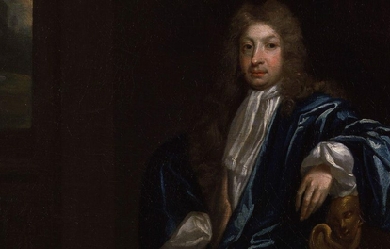
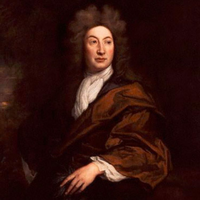
John Dryden (19 August [O.S. 9 August] 1631– 12 May [O.S. 1 May] 1700) was an English poet, literary critic, translator, and playwright who was made Poet Laureate in 1668. He is seen as dominating the literary life of Restoration England to such a point that the period came to be known in literary circles as the Age of Dryden. Walter Scott called him “Glorious John.” Early life Dryden was born in the village rectory of Aldwincle near Thrapston in Northamptonshire, where his maternal grandfather was Rector of All Saints. He was the eldest of fourteen children born to Erasmus Dryden and wife Mary Pickering, paternal grandson of Sir Erasmus Dryden, 1st Baronet (1553–1632) and wife Frances Wilkes, Puritan landowning gentry who supported the Puritan cause and Parliament. He was a second cousin once removed of Jonathan Swift. As a boy Dryden lived in the nearby village of Titchmarsh, Northamptonshire where it is likely that he received his first education. In 1644 he was sent to Westminster School as a King’s Scholar where his headmaster was Dr. Richard Busby, a charismatic teacher and severe disciplinarian. Having recently been re-founded by Elizabeth I, Westminster during this period embraced a very different religious and political spirit encouraging royalism and high Anglicanism. Whatever Dryden’s response to this was, he clearly respected the Headmaster and would later send two of his sons to school at Westminster. As a humanist public school, Westminster maintained a curriculum which trained pupils in the art of rhetoric and the presentation of arguments for both sides of a given issue. This is a skill which would remain with Dryden and influence his later writing and thinking, as much of it displays these dialectical patterns. The Westminster curriculum included weekly translation assignments which developed Dryden’s capacity for assimilation. This was also to be exhibited in his later works. His years at Westminster were not uneventful, and his first published poem, an elegy with a strong royalist feel on the death of his schoolmate Henry, Lord Hastings from smallpox, alludes to the execution of King Charles I, which took place on 30 January 1649, very near the school where Dr. Busby had first prayed for the King and then locked in his schoolboys to prevent their attending the spectacle. In 1650 Dryden went up to Trinity College, Cambridge. Here he would have experienced a return to the religious and political ethos of his childhood: the Master of Trinity was a Puritan preacher by the name of Thomas Hill who had been a rector in Dryden’s home village. Though there is little specific information on Dryden’s undergraduate years, he would most certainly have followed the standard curriculum of classics, rhetoric, and mathematics. In 1654 he obtained his BA, graduating top of the list for Trinity that year. In June of the same year Dryden’s father died, leaving him some land which generated a little income, but not enough to live on. Returning to London during The Protectorate, Dryden obtained work with Cromwell’s Secretary of State, John Thurloe. This appointment may have been the result of influence exercised on his behalf by his cousin the Lord Chamberlain, Sir Gilbert Pickering. At Cromwell’s funeral on 23 November 1658 Dryden processed with the Puritan poets John Milton and Andrew Marvell. Shortly thereafter he published his first important poem, Heroic Stanzas (1658), a eulogy on Cromwell’s death which is cautious and prudent in its emotional display. In 1660 Dryden celebrated the Restoration of the monarchy and the return of Charles II with Astraea Redux, an authentic royalist panegyric. In this work the interregnum is illustrated as a time of anarchy, and Charles is seen as the restorer of peace and order. Later life and career After the Restoration, as Dryden quickly established himself as the leading poet and literary critic of his day, he transferred his allegiances to the new government. Along with Astraea Redux, Dryden welcomed the new regime with two more panegyrics: To His Sacred Majesty: A Panegyric on his Coronation (1662) and To My Lord Chancellor (1662). These poems suggest that Dryden was looking to court a possible patron, but he was to instead make a living in writing for publishers, not for the aristocracy, and thus ultimately for the reading public. These, and his other nondramatic poems, are occasional—that is, they celebrate public events. Thus they are written for the nation rather than the self, and the Poet Laureate (as he would later become) is obliged to write a certain number of these per annum. In November 1662 Dryden was proposed for membership in the Royal Society, and he was elected an early fellow. However, Dryden was inactive in Society affairs and in 1666 was expelled for non-payment of his dues. On 1 December 1663 Dryden married the royalist sister of Sir Robert Howard—Lady Elizabeth. Dryden’s works occasionally contain outbursts against the married state but also celebrations of the same. Thus, little is known of the intimate side of his marriage. Lady Elizabeth bore three sons and outlived her husband. With the reopening of the theatres after the Puritan ban, Dryden wrote plays. His first play, The Wild Gallant, appeared in 1663 and was not successful but was still promising, and from 1668 on he was contracted to produce three plays a year for the King’s Company in which he became a shareholder. During the 1660s and '70s, theatrical writing was his main source of income. He led the way in Restoration comedy, his best-known work being Marriage à la Mode (1672), as well as heroic tragedy and regular tragedy, in which his greatest success was All for Love (1678). Dryden was never satisfied with his theatrical writings and frequently suggested that his talents were wasted on unworthy audiences. He thus was making a bid for poetic fame off-stage. In 1667, around the same time his dramatic career began, he published Annus Mirabilis, a lengthy historical poem which described the English defeat of the Dutch naval fleet and the Great Fire of London in 1666. It was a modern epic in pentameter quatrains that established him as the preeminent poet of his generation, and was crucial in his attaining the posts of Poet Laureate (1668) and historiographer royal (1670). When the Great Plague of London closed the theatres in 1665 Dryden retreated to Wiltshire where he wrote Of Dramatick Poesie (1668), arguably the best of his unsystematic prefaces and essays. Dryden constantly defended his own literary practice, and Of Dramatick Poesie, the longest of his critical works, takes the form of a dialogue in which four characters–each based on a prominent contemporary, with Dryden himself as 'Neander’—debate the merits of classical, French and English drama. The greater part of his critical works introduce problems which he is eager to discuss, and show the work of a writer of independent mind who feels strongly about his own ideas, ideas which demonstrate the breadth of his reading. He felt strongly about the relation of the poet to tradition and the creative process, and his best heroic play Aureng-zebe (1675) has a prologue which denounces the use of rhyme in serious drama. His play All for Love (1678) was written in blank verse, and was to immediately follow Aureng-Zebe. On 18 December 1679 he was attacked in Rose Alley near his home in Covent Garden by thugs hired by John Wilmot, 2nd Earl of Rochester, with whom he had a long-standing conflict. Dryden’s greatest achievements were in satiric verse: the mock-heroic Mac Flecknoe, a more personal product of his Laureate years, was a lampoon circulated in manuscript and an attack on the playwright Thomas Shadwell. Dryden’s main goal in the work is to “satirize Shadwell, ostensibly for his offenses against literature but more immediately we may suppose for his habitual badgering of him on the stage and in print.” It is not a belittling form of satire, but rather one which makes his object great in ways which are unexpected, transferring the ridiculous into poetry. This line of satire continued with Absalom and Achitophel (1681) and The Medal (1682). His other major works from this period are the religious poems Religio Laici (1682), written from the position of a member of the Church of England; his 1683 edition of Plutarch’s Lives Translated From the Greek by Several Hands in which he introduced the word biography to English readers; and The Hind and the Panther, (1687) which celebrates his conversion to Roman Catholicism. He wrote Britannia Rediviva celebrating the birth of a son and heir to the Catholic King and Queen on 10 June 1688. When later in the same year James II was deposed in the Glorious Revolution, Dryden’s refusal to take the oaths of allegiance to the new monarchs, William and Mary, left him out of favour at court. Thomas Shadwell succeeded him as Poet Laureate, and he was forced to give up his public offices and live by the proceeds of his pen. Dryden translated works by Horace, Juvenal, Ovid, Lucretius, and Theocritus, a task which he found far more satisfying than writing for the stage. In 1694 he began work on what would be his most ambitious and defining work as translator, The Works of Virgil (1697), which was published by subscription. The publication of the translation of Virgil was a national event and brought Dryden the sum of £1,400. His final translations appeared in the volume Fables Ancient and Modern (1700), a series of episodes from Homer, Ovid, and Boccaccio, as well as modernised adaptations from Geoffrey Chaucer interspersed with Dryden’s own poems. As a translator, he made great literary works in the older languages available to readers of English. Dryden died on 12 May 1700, and was initially buried in St. Anne’s cemetery in Soho, before being exhumed and reburied in Westminster Abbey ten days later. He was the subject of poetic eulogies, such as Luctus Brittannici: or the Tears of the British Muses; for the Death of John Dryden, Esq. (London, 1700), and The Nine Muses. A Royal Society of Arts blue plaque commemorates Dryden at 43 Gerrard Street in London’s Chinatown. He lived at 137 Long Acre from 1682 to 1686 and at 43 Gerrard Street from 1686 until his death. Reputation and influence Dryden was the dominant literary figure and influence of his age. He established the heroic couplet as a standard form of English poetry by writing successful satires, religious pieces, fables, epigrams, compliments, prologues, and plays with it; he also introduced the alexandrine and triplet into the form. In his poems, translations, and criticism, he established a poetic diction appropriate to the heroic couplet—Auden referred to him as “the master of the middle style”—that was a model for his contemporaries and for much of the 18th century. The considerable loss felt by the English literary community at his death was evident in the elegies written about him. Dryden’s heroic couplet became the dominant poetic form of the 18th century. Alexander Pope was heavily influenced by Dryden and often borrowed from him; other writers were equally influenced by Dryden and Pope. Pope famously praised Dryden’s versification in his imitation of Horace’s Epistle II.i: "Dryden taught to join / The varying pause, the full resounding line, / The long majestic march, and energy divine." Samuel Johnson summed up the general attitude with his remark that “the veneration with which his name is pronounced by every cultivator of English literature, is paid to him as he refined the language, improved the sentiments, and tuned the numbers of English poetry.” His poems were very widely read, and are often quoted, for instance, in Tom Jones and Johnson’s essays. Johnson also noted, however, that “He is, therefore, with all his variety of excellence, not often pathetic; and had so little sensibility of the power of effusions purely natural, that he did not esteem them in others. Simplicity gave him no pleasure.” Readers in the first half of the 18th century did not mind this too much, but later generations considered Dryden’s absence of sensibility a fault. One of the first attacks on Dryden’s reputation was by Wordsworth, who complained that Dryden’s descriptions of natural objects in his translations from Virgil were much inferior to the originals. However, several of Wordsworth’s contemporaries, such as George Crabbe, Lord Byron, and Walter Scott (who edited Dryden’s works), were still keen admirers of Dryden. Besides, Wordsworth did admire many of Dryden’s poems, and his famous “Intimations of Immortality” ode owes something stylistically to Dryden’s “Alexander’s Feast”. John Keats admired the “Fables”, and imitated them in his poem Lamia. Later 19th century writers had little use for verse satire, Pope, or Dryden; Matthew Arnold famously dismissed them as “classics of our prose.” He did have a committed admirer in George Saintsbury, and was a prominent figure in quotation books such as Bartlett’s, but the next major poet to take an interest in Dryden was T. S. Eliot, who wrote that he was 'the ancestor of nearly all that is best in the poetry of the eighteenth century’, and that ‘we cannot fully enjoy or rightly estimate a hundred years of English poetry unless we fully enjoy Dryden.’ However, in the same essay, Eliot accused Dryden of having a “commonplace mind.” Critical interest in Dryden has increased recently, but, as a relatively straightforward writer (William Empson, another modern admirer of Dryden, compared his “flat” use of language with Donne’s interest in the “echoes and recesses of words”) his work has not occasioned as much interest as Andrew Marvell’s or John Donne’s or Pope’s. Dryden is believed to be the first person to posit that English sentences should not end in prepositions because Latin sentences cannot end in prepositions. Dryden created the prescription against preposition stranding in 1672 when he objected to Ben Jonson’s 1611 phrase the bodies that those souls were frighted from, although he did not provide an explanation of the rationale that gave rise to his preference. The phrase “blaze of glory” is believed to have originated in Dryden’s 1686 poem The Hind and the Panther, referring to the throne of God as a “blaze of glory that forbids the sight.” Poetic style What Dryden achieved in his poetry was neither the emotional excitement of the early nineteenth-century romantics nor the intellectual complexities of the metaphysicals. His subject matter was often factual, and he aimed at expressing his thoughts in the most precise and concentrated manner. Although he uses formal structures such as heroic couplets, he tried to recreate the natural rhythm of speech, and he knew that different subjects need different kinds of verse. In his preface to Religio Laici he says that “the expressions of a poem designed purely for instruction ought to be plain and natural, yet majestic... The florid, elevated and figurative way is for the passions; for (these) are begotten in the soul by showing the objects out of their true proportion.... A man is to be cheated into passion, but to be reasoned into truth.” Translation style While Dryden had many admirers, he also had his share of critics, Mark Van Doren among them. Doren complained that in translating Vergil’s Aeneid, Dryden had added “a fund of phrases with which he could expand any passage that seemed to him curt”. Dryden did not feel such expansion was a fault, arguing that as Latin is a naturally concise language it cannot be duly represented by a comparable number of words in English. "He... recognized that Vergil 'had the advantage of a language wherein much may be comprehended in a little space’ (5:329–30). The 'way to please the best Judges... is not to Translate a Poet literally; and Virgil least of any other’ (5:329)" For example, take lines 789–795 of Book 2 when Aeneas sees and receives a message from the ghost of his wife, Creusa. iamque vale et nati serva communis amorem.' haec ubi dicta dedit, lacrimantem et multa volentem dicere deseruit, tenuisque recessit in auras. ter conatus ibi collo dare bracchia circum; ter frustra comprensa manus effugit imago, par levibus ventis volucrique simillima somno. sic demum socios consumpta nocte reviso Dryden translates it like this: I trust our common issue to your care.' She said, and gliding pass'd unseen in air. I strove to speak: but horror tied my tongue; And thrice about her neck my arms I flung, And, thrice deceiv'd, on vain embraces hung. Light as an empty dream at break of day, Or as a blast of wind, she rush'd away. Thus having pass'd the night in fruitless pain, I to my longing friends return again Dryden’s translation is based on presumed authorial intent and smooth English. In line 790 the literal translation of "haec ubi dicta dedit” is "when she gave these words.” But "she said” gets the point across, uses half the words, and makes for better English. A few lines later, with “ter conatus ibi collo dare bracchia circum; ter frustra comprensa manus effugit imago”, he alters the literal translation “Thrice trying to give arms around her neck; thrice the image grasped in vain fled the hands”, in order to fit it into meter and the emotion of the scene. In his own words, The way I have taken, is not so streight as Metaphrase, nor so loose as Paraphrase: Some things too I have omitted, and sometimes added of my own. Yet the omissions I hope, are but of Circumstances, and such as wou'd have no grace in English; and the Addition, I also hope, are easily deduc'd from Virgil's Sense. They will seem (at least I have the Vanity to think so), not struck into him, but growing out of him. (5:529) In a similar vein, Dryden writes in his Preface to the translation anthology Sylvae: Where I have taken away some of [the original authors’] Expressions, and cut them shorter, it may possibly be on this consideration, that what was beautiful in the Greek or Latin, would not appear so shining in the English; and where I have enlarg’d them, I desire the false Criticks would not always think that those thoughts are wholly mine, but that either they are secretly in the Poet, or may be fairly deduc’d from him; or at least, if both those considerations should fail, that my own is of a piece with his, and that if he were living, and an Englishman, they are such as he wou’d probably have written. Family On 1 December 1663 Dryden married Lady Elizabeth Howard (died 1714). The marriage was at St. Swithin’s, London, and the consent of the parents is noted on the license, though Lady Elizabeth was then about twenty-five. She was the object of some scandals, well or ill founded; it was said that Dryden had been bullied into the marriage by her brothers. A small estate in Wiltshire was settled upon them by her father. The lady’s intellect and temper were apparently not good; her husband was treated as an inferior by those of her social status. Both Dryden and his wife were warmly attached to their children. They had three sons: Charles (1666–1704), John (1668–1701), and Erasmus Henry (1669–1710). Lady Elizabeth Dryden survived her husband, but went insane soon after his death. Though some have historically claimed to be from the lineage of John Dryden, his three children had no children themselves. Selected works * Astraea Redux, 1660 * The Wild Gallant (comedy), 1663 * The Indian Emperour (tragedy), 1665 * Annus Mirabilis (poem), 1667 * The Tempest, or The Enchanted Island (comedy), 1667, an adaptation with William D’Avenant of Shakespeare’s The Tempest * Secret Love, or The Maiden Queen, 1667 * An Essay of Dramatick Poesie, 1668 * An Evening’s Love (comedy), 1668 * Tyrannick Love (tragedy), 1669 * The Conquest of Granada, 1670 * The Assignation, or Love in a Nunnery, 1672 * Marriage à la mode, 1672 * Amboyna, or the Cruelties of the Dutch to the English Merchants, 1673 * The Mistaken Husband (comedy), 1674 * Aureng-zebe, 1675 * All for Love, 1678 * Oedipus (heroic drama), 1679, an adaptation with Nathaniel Lee of Sophocles’ Oedipus * Absalom and Achitophel, 1681 * The Spanish Fryar, 1681 * Mac Flecknoe, 1682 * The Medal, 1682 * Religio Laici, 1682 * Threnodia Augustalis, 1685 * The Hind and the Panther, 1687 * A Song for St. Cecilia’s Day, 1687 * Britannia Rediviva, 1688, written to mark the birth of a Prince of Wales. * Epigram on Milton, 1688 * Amphitryon, 1690 * Don Sebastian (play), 1690 * Creator Spirit, by whose aid, 1690. Translation of Rabanus Maurus’ Veni Creator Spiritus * King Arthur, 1691 * Cleomenes, 1692 * Love Triumphant, 1694 * The Works of Virgil, 1697 * Alexander’s Feast, 1697 * Fables, Ancient and Modern, 1700 * The Art of Satire * To the Memory of Mr. Oldham, 1684 References Wikipedia—https://en.wikipedia.org/wiki/John_Dryden
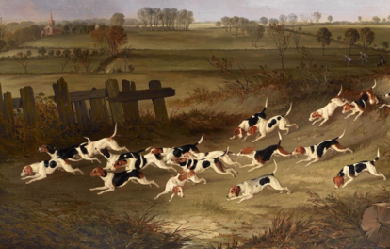
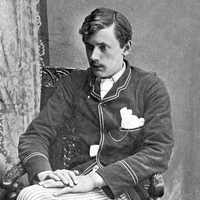
Ernest Christopher Dowson (2 August 1867– 23 February 1900) was an English poet, novelist, and short-story writer, often associated with the Decadent movement. He was born in Lee, London, in 1867. His great-uncle was Alfred Domett, a poet and politician who became Premier of New Zealand and had allegedly been the subject of Robert Browning’s poem “Waring.” Dowson attended The Queen’s College, Oxford, but left in March 1888 before obtaining a degree.

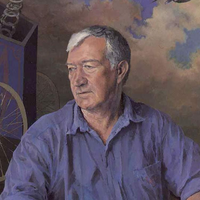
Adrian Mitchell (24 October 1932– 20 December 2008) was an English poet, novelist and playwright. A former journalist, he became a noted figure on the British Left. For almost half a century he was the foremost poet of the country’s anti-Bomb movement. The critic Kenneth Tynan called him “the British Mayakovsky”. Mitchell sought in his work to counteract the implications of his own assertion that, “Most people ignore most poetry because most poetry ignores most people.” In a National Poetry Day poll in 2005 his poem “Human Beings” was voted the one most people would like to see launched into space. In 2002 he was nominated, semi-seriously, Britain’s “Shadow Poet Laureate”. Mitchell was for some years poetry editor of the New Statesman, and was the first to publish an interview with the Beatles. His work for the Royal Shakespeare Company included Peter Brook’s US and the English version of Peter Weiss’s Marat/Sade. Ever inspired by the example of his own favourite poet and precursor William Blake, about whom he wrote the acclaimed Tyger for the National Theatre, his often angry output swirled from anarchistic anti-war satire, through love poetry to, increasingly, stories and poems for children. He also wrote librettos. The Poetry Archive identified his creative yield as hugely prolific. The Times said that Mitchell’s had been a “forthright voice often laced with tenderness.” His poems on such topics as nuclear war, Vietnam, prisons and racism had become “part of the folklore of the Left. His work was often read and sung at demonstrations and rallies.” Biography Early life and career Adrian Mitchell was born near Hampstead Heath, North London. His mother, Kathleen Fabian, was a Fröbel-trained nursery school teacher and his father, Jock Mitchell, a research chemist from Cupar in Fife. He was educated at Monkton Combe School in Bath. He then went to Greenways School, at Ashton Gifford House in Wiltshire, run at the time by a friend of his mother. This, said Mitchell, was “a school in Heaven, where my first play, The Animals’ Brains Trust, was staged when I was nine to my great satisfaction.” His schooling was completed as a boarder at Dauntsey’s School, after which he did his National Service in the RAF. He commented that this “confirmed (his) natural pacificism”. He went on to study English at Christ Church, Oxford, where he was taught by J. R. R. Tolkien’s son. He became chairman of the university’s poetry society and the literary editor of Isis magazine. On graduating Mitchell got a job as a reporter on the Oxford Mail and, later, at the Evening Standard in London. “Inheriting enough money to live on for a year, I wrote my first novel and my first TV play. Soon afterwards I became a freelance journalist, writing about pop music for the Daily Mail and TV for the pre-tabloid Sun and the Sunday Times. I quit journalism in the mid-Sixties and since then have been a free-falling poet, playwright and writer of stories.” Career Mitchell gave frequent public readings, particularly for left-wing causes. Satire was his speciality. Commissioned to write a poem about Prince Charles and his special relationship (as Prince of Wales) with the people of Wales, his measured response was short and to the point: “Royalty is a neurosis. Get well soon.” In “Loose Leaf Poem”, from Ride the Nightmare, he wrote: My brain socialist My heart anarchist My eyes pacifist My blood revolutionary Mitchell was in the habit of stipulating in any preface to his collections: “None of the work in this book is to be used in connection with any examination whatsoever.” His best-known poem, “To Whom It May Concern”, was his bitterly sarcastic reaction to the televised horrors of the Vietnam War. The poem begins: I was run over by the truth one day. Ever since the accident I’ve walked this way So stick my legs in plaster Tell me lies about Vietnam He first read it to thousands of nuclear disarmament protesters who, having marched through central London on CND’s first new format one-day Easter March, finally crammed into Trafalgar Square on the afternoon of Easter Day 1964. As Mitchell delivered his lines from the pavement in front of the National Gallery, angry demonstrators in the square below scuffled with police. In 1972 he confronted then-prime minister Edward Heath about germ warfare and the war in Northern Ireland. He was later responsible for the well-respected stage adaptation of The Lion, the Witch and the Wardrobe, a production of the Royal Shakespeare Company that premiered in November 1998. Over the years he updated the poem to take into account recent events. “He never let up. Most calls—'Can you do this one, Adrian?'—were answered, 'Sure, I’ll be there.' His reading of 'Tell Me Lies’ at a City Hall benefit just before the 2003 invasion of Iraq was electrifying. Of course, he couldn’t stop that war, but he performed as if he could.” One Remembrance Sunday he laid the Peace Pledge Union’s White Poppy wreath on the Cenotaph in Whitehall. On one International Conscientious Objectors’ Day he read a poem at the ceremony at the Conscientious Objectors Commemorative Stone in Tavistock Square in London. Fellow writers could be effusive in their tributes. John Berger said that, “Against the present British state he opposes a kind of revolutionary populism, bawdiness, wit and the tenderness sometimes to be found between animals.” Angela Carter once wrote that he was “a joyous, acrid and demotic tumbling lyricist Pied Piper, determinedly singing us away from catastrophe.” Ted Hughes: “In the world of verse for children, nobody has produced more surprising verse or more genuinely inspired fun than Adrian Mitchell.” Mitchell died at the age of 76 in a North London hospital from a suspected heart attack. For two months he had been suffering from pneumonia. Two days earlier he had completed what turned out to be his last poem, “My Literary Career So Far”. He intended it as a Christmas gift to “all the friends, family and animals he loved”. “Adrian”, said fellow-poet Michael Rosen, “was a socialist and a pacifist who believed, like William Blake, that everything human was holy. That’s to say he celebrated a love of life with the same fervour that he attacked those who crushed life. He did this through his poetry, his plays, his song lyrics and his own performances. Through this huge body of work, he was able to raise the spirits of his audiences, in turn exciting, inspiring, saddening and enthusing them.... He has sung, chanted, whispered and shouted his poems in every kind of place imaginable, urging us to love our lives, love our minds and bodies and to fight against tyranny, oppression and exploitation.” In 2009 Frances Lincoln Children’s Books published an adaptation of Ovid: Shapeshifters: tales from Ovid’s Metamorphoses, written by Mitchell and illustrated by Alan Lee. Family Mitchell is survived by his wife, the actress Celia Hewitt, whose bookshop, Ripping Yarns, is in Highgate, and their two daughters Sasha and Beattie. He also has two sons and a daughter from his previous marriage to Maureen Bush: Briony, Alistair and Danny. There are nine grandchildren: Robin, Arthur, Charlotte, Natasha, Zoe, Caitlin, Annie, Lola and Lilly. Selected bibliography * If You See Me Comin′ (Jonathan Cape, 1962) * Poems (Jonathan Cape, 1964; 978-0224608732) * Out Loud (Cape Goliard, 1968) * Ride the Nightmare (Cape, 1971; ISBN 978-0224005630) * Tyger: A Celebration Based on the Life and Works of William Blake (Cape, 1971; ISBN 978-0224006521) * The Apeman Cometh (Cape, 1975; ISBN 978-0224011471) * Man Friday, novel (Futura, 1975; ISBN 978-0860072744) * For Beauty Douglas: Collected Poems 1953–79, illus. Ralph Steadman (Allison & Busby, 1981; ISBN 978-0850313994) * On the Beach at Cambridge: New Poems (Allison and Busby, 1984; ISBN 978-0850315639) * Nothingmas Day, illus. John Lawrence (Allison & Busby, 1984; ISBN 978-0850315325) * Love Songs of World War Three: Collected Stage Lyrics (Allison and Busby, 1988; ISBN 978-0850319910) * All My Own Stuff, illus. Frances Lloyd (Simon & Schuster, 1991; ISBN 978-0750004466) * Adrian Mitchell’s Greatest Hits– The Top Forty, illus. Ralph Steadman (Bloodaxe Books, 1991; ISBN 978-1852241643) * Blue Coffee: Poems 1985–1996 (Bloodaxe, 1996; 1997 reprint, ISBN 978-1852243623) * Heart on the Left: Poems 1953–1984 (Bloodaxe, 1997; ISBN 978-1852244255) * Balloon Lagoon and Other Magic Islands of Poetry, illus. Tony Ross (Orchard Books, 1997; ISBN 978-1860396595) * Nobody Rides the Unicorn, illus. Stephen Lambert (Corgi Children’s, new edn 2000; ISBN 978-0552546171) * All Shook Up: Poems 1997–2000 (Bloodaxe, 2000; ISBN 978-1852245139) * The Shadow Knows: Poems 2001–2004 (Bloodaxe, 2004) * Tell Me Lies: Poems 2005–2008, illus. Ralph Steadman (Bloodaxe, 2009; ISBN 978-1852248437) * Umpteen Pockets, illus. Tony Ross (Orchard Books, 2009; ISBN 978-1408303634) * Daft as a Doughnut (Orchard Books, 2009; ISBN 978-1408308073) * Shapeshifters: Tales from Ovid’s Metamorphoses, illus. Alan Lee (Frances Lincoln, 2009; ISBN 978-1845075361) * Come on Everybody: Poems 1953–2008 (Bloodaxe, 2012; ISBN 978-1852249465) Awards * * 1961 Eric Gregory Award * 1966 PEN Translation Prize * 1971 Tokyo Festival Television Film Award * 2005 CLPE Poetry Award (shortlist) for Daft as a Doughnut References Wikipedia—https://en.wikipedia.org/wiki/Adrian_Mitchell
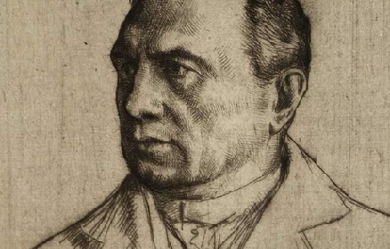
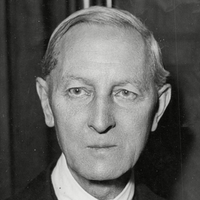
Sir Henry John Newbolt, CH (6 June 1862– 19 April 1938) was an English poet, novelist and historian. He also had a very powerful role as a government adviser, particularly on Irish issues and with regard to the study of English in England. He is perhaps best remembered for his poems "Vitaï Lampada" and “Drake’s Drum”. Background Henry John Newbolt was born in Bilston, Wolverhampton (then located in Staffordshire, but now in the West Midlands), son of the vicar of St Mary’s Church, the Rev. Henry Francis Newbolt, and his second wife, Emily. After his father’s death, the family moved to Walsall, where Henry was educated. Education Newbolt attended Queen Mary’s Grammar School, Walsall, and Caistor Grammar School, from where he gained a scholarship to Clifton College, where he was head of the school (1881) and edited the school magazine. His contemporaries there included John McTaggart, Arthur Quiller-Couch, Roger Fry, William Birdwood, Francis Younghusband and Douglas Haig. Graduating from Corpus Christi College, Oxford, Newbolt was called to the bar at Lincoln’s Inn in 1887 and practised until 1899. Family He married Margaret Edwina Duckworth of the prominent publishing family; they had two children; a boy, Francis and a daughter, Celia. In 1914 Celia Newbolt married Lt. Col. Sir Ralph Dolignon Furse (1887–1973), the Head of Recruitment at HM Colonial Service from 1931 to 1948; they had four children. Lady Furse died in 1975. Subsequently it became apparent that behind the prim Edwardian exterior lay a far more complicated domestic life for Newbolt: a ménage à trois. His wife had a long-running lesbian affair with her cousin and childhood love, Ella Coltman. One of his poems, in which he refers to someone as “dearest”, is entitled “To E.C.” He became Coltman’s lover after a couple of years of marriage, and according to Chitty he divided his time between the two women so there was no jealousy. Publications * His first book was a novel, Taken from the Enemy (1892), and in 1895 he published a tragedy, Mordred; but it was the publication of his ballads, Admirals All (1897), that created his literary reputation. By far the best-known of these is "Vitaï Lampada". They were followed by other volumes of stirring verse, including The Island Race (1898), The Sailing of the Long-ships (1902), Songs of the Sea (1904) and Songs of the Fleet (1910). * In 1914, Newbolt published Aladore, a fantasy novel about a bored but dutiful knight who abruptly abandons his estate and wealth to discover his heart’s desire and woo a half-fae enchantress. It is a tale filled with allegories about the nature of youth, service, individuality and tradition. It was reissued in a new edition by Newcastle Publishing Company in 1975. "Vitaï Lampada" * Probably the best known of all Newbolt’s poems which was written in 1892, and for which he is now chiefly remembered is "Vitaï Lampada". The title is taken from a quotation by Lucretius and means “the torch of life”. It refers to how a schoolboy, a future soldier, learns selfless commitment to duty in cricket matches in the famous Close at Clifton College: * There’s a breathless hush in the Close to-night— * Ten to make and the match to win— * A bumping pitch and a blinding light, * An hour to play and the last man in. * And it’s not for the sake of a ribboned coat, * Or the selfish hope of a season’s fame, * But his captain’s hand on his shoulder smote * “Play up! play up! and play the game!” * The sand of the desert is sodden red,— * Red with the wreck of a square that broke;— * The Gatling’s jammed and the Colonel dead, * And the regiment blind with dust and smoke. * The river of death has brimmed his banks, * And England’s far, and Honour a name, * But the voice of a schoolboy rallies the ranks: * “Play up! play up! and play the game!” * This is the word that year by year, * While in her place the school is set, * Every one of her sons must hear, * And none that hears it dare forget. * This they all with a joyful mind * Bear through life like a torch in flame, * And falling fling to the host behind— * “Play up! play up! and play the game!” * The engagement mentioned in verse two is the Battle of Abu Klea in Sudan in January 1885 during the unsuccessful expedition to rescue General Gordon. Frederick Gustavus Burnaby is the colonel referred to in the line “The Gatling’s jammed and the Colonel’s dead...”, although it was a Gardner machine gun which jammed. The poem was both highly regarded and repeatedly satirised by those who experienced World War I. Drake’s Drum * According to legend a drum owned by Sir Francis Drake will beat in times of national crisis and the spirit of Drake will return to aid his country. Sir Henry reinforced the myth with his 1897 poem Drake’s Drum, “Drake he’s in his hammock an’ a thousand mile away...”, which has been widely anthologised. * The poem has been set to both classical and folk tunes. “'Drakes Drum” is the first of five poetic settings by the composer Charles Villiers Stanford. Stanford has two song cycles, both using the poetry of Newbolt, the Songs of the Sea and also Songs of the Fleet. Monthly Review * Between 1900 and 1905, Newbolt was the editor of the Monthly Review. He was also a member of the Athenaeum and the Coefficients dining club. War and history * At the start of the First World War, Newbolt– along with over 20 other leading British writers– was brought into the War Propaganda Bureau which had been formed to promote Britain’s interests during the war and maintain public opinion in favour of the war. * He subsequently became Controller of Telecommunications at the Foreign Office. His poems about the war include “The War Films”, printed on the leader page of The Times on 14 October 1916, which seeks to temper the shock effect on cinema audiences of footage of the Battle of the Somme. * Newbolt was knighted in 1915 and was appointed Companion of Honour in 1922. * In 1921 he had been the author of a government Report entitled “The Teaching of English in England” which established the foundations for modern English Studies and professionalised the forms of teaching of English Literature. It established a canon, argued that English must become the linguistic and literary standard throughout the British Empire, and even proposed salary rates for lecturers. For many years it was a standard work for English teachers in teacher training Colleges. * Newbolt was also part of the inner advisory circle of Herbert Asquith’s government and would subsequently advise governments on policy in Ireland. Legacy * In his home town of Bilston, a public house was named after him, and a blue plaque is displayed on Barclay’s bank near the street where he was born. * In June 2013 a campaign was launched by The Black Country Bugle to erect a statue in Newbolt’s memory. * Recordings were made of Newbolt reading some of his own poems. They were on four 78rpm sides in the Columbia Records “International Educational Society” Lecture series, Lecture 92 (D40181/2). Death * Newbolt died at his home in Campden Hill, Kensington, London, on 19 April 1938, aged 75. A blue plaque there commemorates his residency. He is buried in the churchyard of St Mary’s church on an island in the lake on the Orchardleigh Estate of the Duckworth family in Somerset. Works * * Mordred: A Tragedy– an Arthurian drama * Admirals All (1897)– including Drake’s Drum * The Old Country (1906) * The New June (1909) * Aladore (1914)– a novel * St George’s Day & Other Poems (1918)– published by John Murray. * The Naval History of the Great War: Based on Official Documents Volumes IV and V– Newbolt took over after Sir Julian Corbett died * A Ballad of Sir Pertab Singh * He Fell among Thieves * Story of the Oxfordshire & Buckinghamshire Light Infantry (The Old 43rd & 52nd Regiments) * My World as in My Time (1932)– his autobiography * A Note on the History of Submarine War * Submarine and Anti-Submarine (1919) Sources and references * * This article incorporates text from a publication now in the public domain: Chisholm, Hugh, ed. (1911). “article name needed”. Encyclopædia Britannica (11th ed.). Cambridge University Press. External links * * Works by Henry John Newbolt at Project Gutenberg * Works by or about Henry Newbolt at Internet Archive * Works by Henry Newbolt at LibriVox (public domain audiobooks) * Text of the poem Mors Janua . References Wikipedia—https://en.wikipedia.org/wiki/Henry_Newbolt
_by_Sir_Hubert_von_Herkomer.jpg?locale=es)
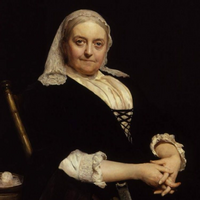
Dinah Maria Craik (/kreɪk/; born Dinah Maria Mulock, also often credited as Miss Mulock or Mrs. Craik) (20 April 1826– 12 October 1887) was an English novelist and poet. Life Mulock was born at Stoke-on-Trent to Dinah and Thomas Mulock and raised in Newcastle-under-Lyme, Staffordshire, where her father was then minister of a small congregation. Her childhood and early youth were much affected by his unsettled fortunes, but she obtained a good education from various quarters and felt called to be a writer. She came to London about 1846, much at the same time as two friends, Alexander Macmillan and Charles Edward Mudie. Introduced by Camilla Toulmin to Westland Marston, she rapidly made friends in London, and found great encouragement for the stories for the young. In 1865 she married George Lillie Craik a partner with Alexander Macmillan in the publishing house of Macmillan & Company, and nephew of George Lillie Craik. They adopted a foundling baby girl, Dorothy, in 1869. At Shortlands, near Bromley, Kent, while in a period of preparation for Dorothy’s wedding, she died of heart failure on 12 October 1887, aged 61. Her last words were reported to have been: “Oh, if I could live four weeks longer! but no matter, no matter!” Her final book, An Unknown Country, was published by Macmillan in 1887, the year of her death. Dorothy married Alexander Pilkington in 1887 but they divorced in 1911 and she went on to marry Captain Richards of Macmine Castle. She and Alexander had just one son John Mulock Pilkington. John married Freda Roskelly and they had a son and daughter. Works * Mulock’s early success began with the novel Cola Monti (1849), and in the same year she produced her first three-volume novel, The Ogilvies, to great success. It was followed in 1850 by Olive, then by The Head of the Family in 1851 and Agatha’s Husband in 1853, in which the author used her recollections of East Dorset. Mulock published the fairy story Alice Learmont in 1852, and collected numerous short stories from periodicals under the title of Avillion and other Tales in 1853. A similar collection appeared in 1857 under the title of Nothing New. * Thoroughly established in public favour as a successful author, Mulock took a cottage at Wildwood, North End, Hampstead, and joined an extensive social circle. Her personal attractions were at this period of her life considerable, and people kindly judged her simple cordiality, staunch friendliness, and thorough goodness of heart. In 1857 she published the work by which she will be principally remembered, John Halifax, Gentleman, a presentation of the ideals of English middle-class life. Mulock’s next important work, A Life for a Life (1859), made more money and was perhaps at the time more widely read than John Halifax, and was followed by Mistress and Maid (1863) and Christian’s Mistake (1865), followed by didactic works such as A Woman’s Thoughts about Women and Sermons out of Church. Another collection, titled The Unkind Word and Other Stories, included a scathing criticism of Benjamin Heath Malkin for overworking his son Thomas, a child prodigy who died at seven. Later on, Craik returned to more fanciful tales and achieved a great success with The Little Lame Prince (1874). In 1881 she published a collection of her earlier poems under the title Poems of Thirty Years, New and Old; some, such as Philip my King addressed to her godson Philip Bourke Marston and Douglas, Douglas, Tender and True achieved a wide popularity. Reception * Richard Garnett holds that “the genuine passion that filled her early works of fiction had not unnaturally faded out of middle life”, replaced by didacticism. To Garnett, Craik’s increasing self-awareness led to this. Garnett judges Craik’s poetry as “a woman’s poems, tender, domestic, and sometimes enthusiastic, always genuine song, and the product of real feeling”.
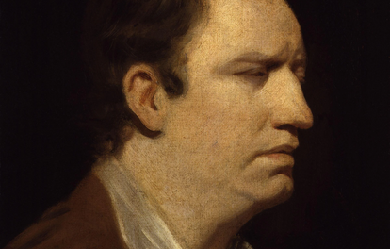
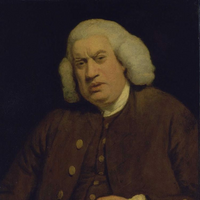
Samuel Johnson (18 September 1709 – 13 December 1784), often referred to as Dr Johnson, was an English writer who made lasting contributions to English literature as a poet, essayist, moralist, literary critic, biographer, editor and lexicographer. Johnson was a devout Anglican and committed Tory, and has been described as “arguably the most distinguished man of letters in English history”. He is also the subject of “the most famous single biographical work in the whole of literature,” James Boswell’s Life of Samuel Johnson. Born in Lichfield, Staffordshire, Johnson attended Pembroke College, Oxford for just over a year, before his lack of funds forced him to leave. After working as a teacher, he moved to London, where he began to write for The Gentleman’s Magazine. His early works include the biography Life of Mr Richard Savage, the poems London and The Vanity of Human Wishes, and the play Irene.
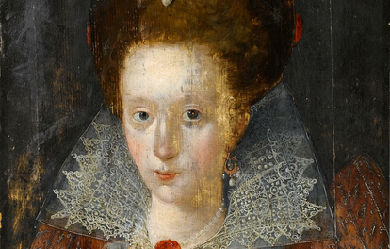
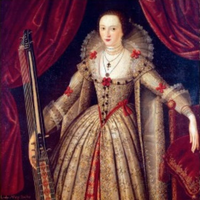
Lady Mary Wroth (18 October 1587– 1651/3) was an English poetess of the Renaissance. A member of a distinguished literary family, Lady Wroth was among the first female British writers to have achieved an enduring reputation. She is perhaps best known for having written The Countess of Montgomery’s Urania, the first extant prose romance by an English woman, and for Pamphilia to Amphilanthus, the second known sonnet sequence by an English woman. Wroth’s works also include Love’s Victory, a pastoral closet drama.

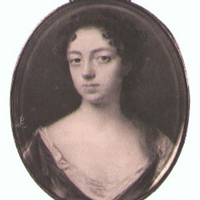
Anne Finch (née Kingsmill), Countess of Winchilsea (April 1661– 5 August 1720), was an English poet, the third child of Sir William Kingsmill of Sydmonton Court and his wife, Anne Haslewood. She was well-educated as her family believed in good education for girls as well as for boys. In 1682, Anne Kingsmill went to St James’s Palace to become a maid of honour to Mary of Modena (wife of James, Duke of York, who later became King James II). There she met the courtier Heneage Finch whom she married on 15 May 1684. It was a happy marriage and Anne wrote several love poems to her husband, most famous perhaps A Letter to Dafnis, though her most well-known works speak on her bouts of depression and her fervent belief in social justice for women. Finch’s works often express a desire for respect as a female poet, lamenting her difficult position as a woman in the literary establishment and the court, while writing of an intense artistic impulse to write despite the difficulties. On 4 August 1712, Charles Finch, 4th Earl of Winchilsea, died childless. This made Anne’s husband, his uncle, the 5th Earl of Winchilsea, and Anne, the Countess of Winchilsea. She died in Westminster in 1720 and was buried at her home at Eastwell, Kent. Works * Did I, my lines intend for public view, How many censures, would their faults pursue, Some would, because such words they do affect, Cry they’re insipid, empty, and uncorrect. And many have attained, dull and untaught, The name of wit only by finding fault. True judges might condemn their want of wit, * And all might say, they’re by a woman writ…" (Finch, The Introduction) * With these lines, written in the poem The Introduction by Anne Finch, Countess of Winchilsea, readers are welcomed into a vibrant, emotional, and opinionated style. They are unapologetically let in on the distinctly female voice that is to come. Melancholy, full of wit, and socially conscious, Anne Finch wrote verse and dramatic literature with a talent that has caused her works to not only survive, but to flourish in an impressive poetic legacy throughout the centuries since her death. * Finch’s range as a writer was vast. She experimented with the poetic traditions of her day, often straying from the fold through her use of rhyme, meter and content, which ranged from the simplistic to the metaphysical. Additionally, Finch wrote several satiric vignettes modelled after the short tales of French fabulist Jean de La Fontaine. She mocked La Fontaine’s fables, offering social criticism through biting sarcasm. Finch’s more melancholy fare, however, gained her wider acclaim. Her famous poems in this sullen vein include A Nocturnal Reverie and Ardelia to Melancholy, both depicting severe depression. Her poetry is often considered to fall in the category of Augustan, reflecting upon nature and finding both an emotional and religious relationship to it in her verse. Finch also skilfully employed the Pindaric ode, exploring complex and irregular structures and rhyme schemes. Her most famous example of this technique is in The Spleen (1709), a poetic expression of depression and its effects: * What art thou, Spleen, which ev’ry thing dost ape? * Thou Proteus to abused mankind, Who never yet thy real cause could find, Or fix thee to remain in one continued shape. Still varying thy perplexing form, Now a Dead Sea thou’lt represent, A calm of stupid discontent, Then, dashing on the rocks wilt rage into a storm. Trembling sometimes thou dost appear, * Dissolved into a panic fear… (Finch, The Spleen) * This poem was first published anonymously, though it went on to become one of her most renowned pieces. As Virginia Woolf, a later proponent of intellectual investigation into Finch’s life and work, once famously wrote, “I would venture to guess that Anon, who wrote so many poems without signing them, was often a woman” (Woolf, A Room of One’s Own). * Anne Finch is known today as one of the most versatile and gifted poets (one of her poems was set to music by Purcell) of her generation. Biography * (The following essay is taken from the Biography Reference Center.) * As a poet, Finch attained a modest amount of notoriety during her lifetime, which spanned the late 17th and early 18th centuries. However, her large body of work, written during the Augustan period (approximately 1660–1760), would earn greater attention after her death. While Finch also authored fables and plays, today she is best known for her poetry: lyric poetry, odes, love poetry and prose poetry. Later literary critics recognised the diversity of her poetic output as well as its personal and intimate style. * In her works Finch drew upon her own observations and experiences, demonstrating an insightful awareness of the social mores and political climate of her era. But she also artfully recorded her private thoughts, which could be joyful or despairing, playful or despondent. The poems also revealed her highly developed spiritual side. * Finch was born Anne Kingsmill in April 1661 in Sydmonton, Hampshire, located in the southern part of England. Her parents were Sir William Kingsmill and Anne Haslewood. She was the youngest of three children. Her siblings included William and Bridget Kingsmill. * The young Anne never knew her father, as he died only five months after she was born. In his will, he specified that his daughters receive financial support equal to that of their brother for their education. Her mother remarried in 1662, to Sir Thomas Ogle, and later bore Anne Kingsmill’s half-sister, Dorothy Ogle. Anne would remain close to Dorothy for most of their lives. * Finch’s mother died in 1664. Shortly before her death she wrote a will giving control of her estate to her second husband. The will was successfully challenged in a Court of Chancery by Anne Kingsmill’s uncle, William Haslewood. Subsequently, Anne and Bridget Kingsmill lived with their grandmother, Lady Kingsmill, in Charing Cross, London, while their brother lived with his uncle William Haslewood. * In 1670 Lady Kingsmill filed her own Court of Chancery suit, demanding from William Haslewood a share in the educational and support monies for Anne and Bridget. The court split custody and financial support between Haslewood and Lady Kingsmill. When Lady Kingsmill died in 1672, Anne and Bridget rejoined their brother to be raised by Haslewood. The sisters received a comprehensive and progressive education, something that was uncommon for females at the time, and Anne Kingsmill learned about Greek and Roman mythology, the Bible, French and Italian languages, history, poetry, and drama. At the court of Charles II * The sisters remained in the Haslewood household until their uncle’s death in 1682. 21 years old at the time, Anne Kingsmill then went to live at St James’s Palace, joining the court of Charles II. She became one of six maids of honour to Mary of Modena, who was the wife of James, Duke of York, who would later become King James II. * Apparently Anne’s interest in poetry began at the palace, and she started writing her own verse. Her friends included Sarah Churchill and Anne Killigrew, two other maids of honour who also shared poetic interests. However, when Anne Kingsmill witnessed the derision within the court that greeted Killigrew’s poetic efforts (poetry was not a pursuit considered suitable for women), she decided to keep her own writing attempts to herself and her close friends. She remained secretive about her poetry until much later in her life, when she was encouraged to publish under her own name. * While residing at court, Anne Kingsmill also met Colonel Heneage Finch, the man who would become her husband. A courtier as well as a soldier, Colonel Finch had been appointed Groom of the Bedchamber to James, Duke of York, in 1683. His family had strong Royalist connections, as well as a pronounced loyalty to the Stuart dynasty, and his grandmother had become Countess of Winchilsea in 1628. Finch met Kingsmill and fell in love with her, but she at first resisted his romantic overtures. However, Finch proved a persistent suitor and the couple was finally married on 15 May 1684. * Upon her marriage, Anne Finch resigned her court position, but her husband retained his own appointment and would serve in various government positions. As such, the couple remained involved in court life. During the 1685 coronation of James II, Heneage Finch carried the canopy of the Queen, Mary of Modena, who had specifically requested his service. * The couple’s marriage proved to be enduring and happy, in part due to the aspects of equality in their partnership. Indeed, part of the development of her poetic skills was brought about by expressing her joy in her love for her husband and the positive effects of his lack of patriarchal impingement on her artistic development. These early works, many written to her husband (such as "A Letter to Dafnis: April 2d 1685"), celebrated their relationship and ardent intimacy. In expressing herself in such a fashion, Anne Finch quietly defied contemporary social conventions. In other early works she aimed a satiric disapproval at prevailing misogynistic attitudes. Still, her husband strongly supported her writing activities. * Despite their court connections, Anne and Heneage Finch led a rather sedate life. At first they lived in Westminster; then, as Heneage Finch became more involved in public affairs, they moved to London. His involvement had increased when James II took the throne in 1685. The couple demonstrated great loyalty to the king in what turned out to be a brief reign. Refusal to take Oath of Allegiance to King William * James II was deposed in 1688 during the “Bloodless Revolution”. During his short reign, James fell under intense criticism for his autocratic manner of rule. Eventually he fled England for exile in Saint-Germain, France. As a result, the British Parliament offered William of Orange the English crown. When the new monarchs, William and Mary, assumed the throne, oaths of allegiance became a requirement for both the public and the clergy. William and Mary were Protestants, and the Finches remained loyal to the Catholic Stuart court, refusing to take the oath. They also viewed their oaths to the previous monarchy as morally binding and constant. But such a stance invited trouble. Heneage Finch lost his government position and retreated from public life. As the loss of his position entailed a loss of income, the Finches were forced to live with friends in London for a period. However, while living in the city the couple faced harassment, fines and potential imprisonment. * In April 1690 Heneage Finch was arrested and charged with Jacobitism for attempting to join the exiled James II in France. It was a difficult time for Jacobites and Nonjurors (those who had refused to take the oath of allegiance, such as the Finches), as their arrests and punishments were abusive. Because of his arrest, Heneage and Anne Finch remained separated from April until November of that year. Understandably, the circumstances caused the couple a great deal of emotional turmoil. Living with friends in Kent while her husband prepared his defence in London, Anne Finch often succumbed to bouts of depression, something that afflicted her for most of her adult life. The poems that she wrote during this period, such as “Ardelia to Melancholy”, reflected her mental state. Other poems involved political themes. But all of her work was noticeably less playful and joyous than her earlier output. Move to country estate * After Heneage Finch was released and his case dismissed, his nephew Charles Finch, the fourth Earl of Winchelsea, invited the couple to permanently move into the family’s Eastwell Park, Kent, estate. The Finches took up residence in late 1690 and found peace and security on the beautiful estate, where they would live for more than 25 years in the quiet countryside. * For Anne Finch, the estate provided a fertile and supportive environment for her literary efforts. Charles Finch was a patron of the arts and, along with Heneage Finch, he encouraged Anne’s writing. Her husband’s support was practical. He began collecting a portfolio of her 56 poems, writing them out by hand and making corrective changes. One significant change involved Anne’s pen name, which Heneage changed from “Areta” to “Ardelia”. * The peace and seclusion at Eastwell fostered the development of Finch’s poetry, and the retirement in the country provided her with her most productive writing period. Her work revealed her growing knowledge of contemporary poetic conventions, and the themes she addressed included metaphysics, the beauty of nature (as expressed in “A Nocturnal Reverie”), and the value of friendship (as in “The Petition for an Absolute Retreat”). Return to public life * By the early 18th century the political climate in England had generally improved for the Finches. King William died in 1702, and his death was followed by the succession to the throne of Queen Anne, the daughter of James II, who had died in 1701. With these developments, the Finches felt ready to embrace a more public lifestyle. Heneage Finch ran for a parliamentary seat three times (in 1701, 1705, and 1710), but was never elected. Still, the Finches felt the time was right to leave the seclusion of the country life and move into a house in London. * In London, Anne Finch was encouraged to publish her poetry under her own name. Earlier, in 1691, she had anonymously published some of her poetry. In 1701 she published “The Spleen” anonymously. This well-received reflection on depression would prove to be the most popular of her poems in her lifetime. When the Finches returned to London, Anne acquired some important and influential friends, including renowned writers such as Jonathan Swift and Alexander Pope, who encouraged her to write and publish much more openly. * She was reluctant, as she felt the current social and political climate remained oppressive as far as women were concerned. (In her poem “The Introduction,” which was privately circulated, she reflected on contemporary attitudes toward female poets.) When she published Miscellany Poems, on Several Occasions in 1713, the cover page of the first printing indicated that the collected works (which included 86 poems as well as a play) were “Written by a Lady.” However, on subsequent printings, Finch (as Anne, Countess of Winchilsea) received credit as the author. Lady Winchilsea * Anne Finch became Countess of Winchilsea upon the sudden and unexpected death of Charles Finch on 4 August 1712. As Charles Finch had no children, his uncle Heneage Finch (died 1726) became the Earl of Winchilsea, making Anne the Countess. However, the titles came with a cost. The Finches had to assume Charles Finch’s financial and legal burdens. The issues were eventually settled in the Finches’ favour in 1720, but not before the couple had endured nearly seven years of emotional strain. * During this period, Heneage and Anne Finch faced renewed strains resulting from court politics. When Queen Anne died in 1714, she was succeeded by George I. Subsequently, a Whig government, which was hostile to the Jacobite cause, rose to power. The Jacobite rebellion, which took place in Scotland in 1715, further aggravated the tense political situation. The Finches became greatly concerned about their safety, especially after a friend, Matthew Prior, who shared their political sympathies, was sent to prison. Deteriorating health * All of her worries combined started to take a toll on Anne Finch’s health, which began to seriously deteriorate. For years she had been vulnerable to depression, and in 1715 she became seriously ill. Her later poems reflected her turmoil. In particular, “A Suplication for the joys of Heaven” and “A Contemplation” expressed her concerns about her life and political and spiritual beliefs. * She died in Westminster, London, and her body was returned to Eastwell for burial, according to her previously stated wishes. Her husband produced an obituary that praised her talents as a writer and her virtues as an individual. A portion of it read, “To draw her Ladyship’s just Character, requires a masterly Pen like her own (She being a fine Writer, and an excellent Poet); we shall only presume to say, she was the most faithful Servant to her Royall Mistresse, the best Wife to her Noble Lord, and in every other Relation, publick and private, so illustrious an Example of such extraordinary Endowments, both of Body and Mind, that the Court of England never bred a more accomplished Lady, nor the Church of England a better Christian.” Poetry rediscovered * The only major collection of Anne Finch’s writings that appeared in her lifetime was Miscellany Poems, on Several Occasions. Nearly a century after her death her poetic output had been largely forgotten, until the great English poet William Wordsworth praised her nature poetry in an essay included in his 1815 volume Lyrical Ballads. * A major collection titled The Poems of Anne, Countess of Winchilsea, edited by Myra Reynolds, was published in 1903. For many years it was considered the definitive collection of her writings. It remains the only scholarly collection of Finch’s poetry, and includes all of the poems from Miscellany Poems and poems retrieved from manuscripts. Further, Reynolds’s impressive introduction did as much to re-establish Finch’s reputation as Wordsworth’s previous praise. * Later, The Wellesley Manuscript, which contained 53 unpublished poems, was released. Literary scholars have noted Finch’s distinctive voice and her poems’ intimacy, sincerity, and spirituality. They also expressed appreciation for her experimentation as well as her assured usage of Augustan diction and forms. * According to James Winn (The Review of English Studies, lix, 2008, pp 67–85) Anne Finch is the librettist of Venus and Adonis, with music by John Blow; the work is considered by some scholars to be the first true opera in the English language. In his critical edition of the opera for the Purcell Society, Bruce Wood agrees with Winn. * In 1929, in her classic essay A Room of One’s Own, Virginia Woolf both critiques Finch’s writing and expresses great admiration for it. In Woolf’s examination of the “female voice” and her search for the history of female writers, she argues that Finch’s writing is “harassed and distracted with hates and grievances,” pointing out that to Finch “men are hated and feared, because they have the power to bar her way to what she wants to do—which is to write.” However, Woolf excuses the flaws she perceives in Finch’s work by claiming that Finch surely had to “encourage herself to write by supposing that what she writes will never be published.” She goes on to acknowledge that in Finch’s work, "Now and again words issue of pure poetry…It was a thousand pities that the woman who could write like that, whose mind was turned to nature, and reflection, should have been forced to anger and bitterness." Woolf goes on in defence of her as a gifted but sometimes understandably misguided example of women’s writing. It is evident that Woolf sympathises deeply with Finch’s plight as a female poet, and though she takes issue with some of the content in Finch’s writing, she expresses grief that Finch is so unknown: "…when one comes to seek out the facts about Lady Winchilsea, one finds, as usual, that almost nothing is known about her." Woolf wishes to know more about “this melancholy lady, who loved wandering in the fields and thinking about unusual things and scorned, so rashly, so unwisely, ‘the dull manage of a servile house.’”
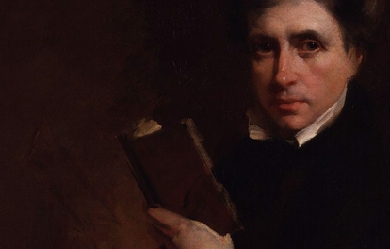
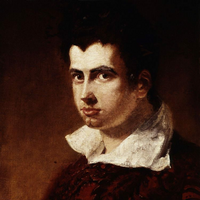
James Henry Leigh Hunt (19 October 1784– 28 August 1859), best known as Leigh Hunt, was an English critic, essayist, poet, and writer. Biography Early life James Henry Leigh Hunt was born at Southgate, London, where his parents had settled after leaving the United States. His father Isaac, a lawyer from Philadelphia, and his mother, Mary Shewell, a merchant’s daughter and a devout Quaker, had been forced to come to Britain because of their loyalist sympathies during the American War of Independence. Hunt’s father took holy orders and became a popular preacher, but he was unsuccessful in obtaining a permanent living. Hunt’s father was then employed by James Brydges, 3rd Duke of Chandos, as tutor to his nephew, James Henry Leigh (father of Chandos Leigh), after whom the boy was named. Education Leigh Hunt was educated at Christ’s Hospital from 1791 to 1799, a period which is detailed in his autobiography. He entered the school shortly after Samuel Taylor Coleridge and Charles Lamb had both left; Thomas Barnes, however, was a school friend of his. One of the current boarding houses at Christ’s Hospital is named after him. As a boy, he was an ardent admirer of Thomas Gray and William Collins, writing many verses in imitation of them. A speech impediment, later cured, prevented his going to university. “For some time after I left school,” he says, “I did nothing but visit my school-fellows, haunt the book-stalls and write verses.” His poems were published in 1801 under the title of Juvenilia, and introduced him into literary and theatrical society. He began to write for the newspapers, and published in 1807 a volume of theatre criticism, and a series of Classic Tales with critical essays on the authors. Hunt’s early essays were published by Edward Quin, editor and owner of The Traveller. Family In 1809, Leigh Hunt married Marianne Kent (whose parents were Thomas and Ann). Over the next 20 years they had ten children: Thornton Leigh (1810–73), John Horatio Leigh (1812–46), Mary Florimel Leigh (1813–49), Swinburne Percy Leigh (1816–27), Percy Bysshe Shelley Leigh (1817–99), Henry Sylvan Leigh (1819–76), Vincent Leigh (1823–52), Julia Trelawney Leigh (1826–72), Jacyntha Leigh (1828–1914), and Arabella Leigh (1829–30). Marianne, who had been in ill health for most of her life, died 26 January 1857, aged sixty-nine. Leigh Hunt made little mention of his family in his autobiography. Marianne’s sister, Elizabeth Kent (Hunt’s sister-in-law), became his amanuensis. Newspapers The Examiner In 1808 he left the War Office, where he had been working as a clerk, to become editor of the Examiner, a newspaper founded by his brother, John. His brother Robert Hunt, among others, also contributed to its columns; his criticism earned the enmity of William Blake, who described the journal’s office at Beaufort Buildings, Strand, London, as containing a “nest of villains”. Blake’s response included Leigh Hunt, who aside from publishing the vitriolic reviews of 1808 and 1809 had added Blake’s name on a list of “quacks”. This journal soon acquired a reputation for unusual political independence; it would attack any worthy target, “from a principle of taste,” as John Keats expressed it. In 1813, an attack on the Prince Regent, based on substantial truth, resulted in prosecution and a sentence of two years’ imprisonment for each of the brothers—Leigh Hunt served his term at the Surrey County Gaol. Leigh Hunt’s visitors in prison included Lord Byron, Thomas Moore, Lord Brougham, Charles Lamb and others, whose acquaintance influenced his later career. The stoicism with which Leigh Hunt bore his imprisonment attracted general attention and sympathy. His imprisonment allowed him many luxuries and access to friends and family, and Lamb described his decorations of the cell as something not found outside a fairy tale. When Jeremy Bentham called on him, he was found playing battledore. A number of essays in The Examiner that were written by Hunt and William Hazlitt between 1814 and 1817 under the series title “The Round Table” were collected in book form in The Round Table, published in two volumes in 1817. Twelve of the fifty-two essays were by Hunt, the rest by Hazlitt. The Reflector In 1810–1811 he edited a quarterly magazine, the Reflector, for his brother John. He wrote “The Feast of the Poets” for this, a satire, which offended many contemporary poets, particularly William Gifford of the Quarterly. The Indicator In 1819–1821, Hunt edited The Indicator, a weekly literary periodical published by Joseph Appleyard. Hunt probably wrote much of the content as well, which included reviews, essays, stories, and poems. Poetry In 1816 he made a mark in English literature with the publication of Story of Rimini, based on the tragic episode of Francesca da Rimini told in Dante’s Inferno. Hunt’s preference was decidedly for Chaucer’s verse style, as adapted to modern English by John Dryden, in opposition to the epigrammatic couplet of Alexander Pope which had superseded it. The poem is an optimistic narrative which runs contrary to the tragic nature of its subject. Hunt’s flippancy and familiarity, often degenerating into the ludicrous, subsequently made him a target for ridicule and parody. In 1818 appeared a collection of poems entitled Foliage, followed in 1819 by Hero and Leander, and Bacchus and Ariadne. In the same year he reprinted these two works with The Story of Rimini and The Descent of Liberty with the title of Poetical Works, and started the Indicator, in which some of his best work appeared. Both Keats and Shelley belonged to the circle gathered around him at Hampstead, which also included William Hazlitt, Charles Lamb, Bryan Procter, Benjamin Haydon, Charles Cowden Clarke, C.W. Dilke, Walter Coulson and John Hamilton Reynolds. This group was known as the Hunt Circle, or, pejoratively, as the Cockney School. Some of Hunt’s most popular poems are “Jenny kiss’d Me”, “Abou Ben Adhem” and “A Night-Rain in Summer”. Friendship with Keats and Shelley He had for some years been married to Marianne Kent. His own affairs were in confusion, and only Percy Bysshe Shelley’s generosity saved him from ruin. In return he showed sympathy to Shelley during the latter’s domestic distresses, and defended him in the Examiner. He introduced Keats to Shelley and wrote a very generous appreciation of him in the Indicator. Keats seems, however, to have subsequently felt that Hunt’s example as a poet had been in some respects detrimental to him. After Shelley’s departure for Italy in 1818, Leigh Hunt became even poorer, and the prospects of political reform less satisfactory. Both his health and that of his wife failed, and he was obliged to discontinue the Indicator (1819–1821), having, he says, “almost died over the last numbers.” Shelley suggested that Hunt go to Italy with him and Byron to establish a quarterly magazine in which Liberal opinions could be advocated with more freedom than was possible at home. An injudicious suggestion, it would have done little for Hunt or the Liberal cause at the best, and depended entirely upon the co-operation of the capricious, parsimonious Byron. Byron’s principal motive for agreeing appears to have been the expectation of acquiring influence over the Examiner, and he was mortified to discover that Hunt was no longer interested in the Examiner. Leigh Hunt left England for Italy in November 1821, but storm, sickness and misadventure retarded his arrival until 1 July 1822, a rate of progress which Thomas Love Peacock appropriately compares to the navigation of Ulysses. The death of Shelley, a few weeks later, destroyed every prospect of success for the Liberal. Hunt was now virtually dependent upon Byron, who did not relish the idea of being patron to Hunt’s large and troublesome family. Byron’s friends also scorned Hunt. The Liberal lived through four quarterly numbers, containing contributions no less memorable than Byron’s “Vision of Judgment” and Shelley’s translations from Faust; but in 1823 Byron sailed for Greece, leaving Hunt at Genoa to shift for himself. The Italian climate and manners, however, were entirely to Hunt’s taste, and he protracted his residence until 1825, producing in the interim Ultra-Crepidarius: a Satire on William Gifford (1823), and his translation (1825) of Francesco Redi’s Bacco in Toscana. In 1825 a litigation with his brother brought him back to England, and in 1828 he published Lord Byron and some of his Contemporaries, a corrective to idealized portraits of Byron. The public was shocked that Hunt, who had been obliged to Byron for so much, would “bite the hand that fed him” in this way. Hunt especially writhed under the withering satire of Moore. For many years afterwards, the history of Hunt’s life is a painful struggle with poverty and sickness. He worked unremittingly, but one effort failed after another. Two journalistic ventures, the Tatler (1830–1832), a daily devoted to literary and dramatic criticism, and Leigh Hunt’s London Journal (1834–1835), were discontinued for want of subscribers, although the latter contained some of his best writing. His editorship (1837–1838) of the Monthly Repository, in which he succeeded William Johnson Fox, was also unsuccessful. The adventitious circumstances which allowed the Examiner to succeed no longer existed, and Hunt’s personality was unsuited to the general body of readers. In 1832 a collected edition of his poems was published by subscription, the list of subscribers including many of his opponents. In the same year was printed for private circulation Christianism, the work afterwards published (1853) as The Religion of the Heart. A copy sent to Thomas Carlyle secured his friendship, and Hunt went to live next door to him in Cheyne Row in 1833. Sir Ralph Esher, a romance of Charles II’s period, had a success, and Captain Sword and Captain Pen (1835), a spirited contrast between the victories of peace and the victories of war, deserves to be ranked among his best poems. In 1840 his circumstances were improved by the successful representation at Covent Garden of his play Legend of Florence. Lover’s Amazements, a comedy, was acted several years afterwards, and was printed in Leigh Hunt’s Journal (1850–1851); other plays remained in manuscript. In 1840 he wrote introductory notices to the work of Sheridan and to Edward Moxon’s edition of the works of William Wycherley, William Congreve, John Vanbrugh and George Farquhar, a work which furnished the occasion of Macaulay’s essay on the Dramatists of the Restoration. The narrative poem The Palfrey was published in 1842. More financial difficulties The time of Hunt’s greatest difficulties was between 1834 and 1840. He was at times in absolute poverty, and his distress was aggravated by domestic complications. By Macaulay’s recommendation he began to write for the Edinburgh Review. In 1844 Mary Shelley and her son, on succeeding to the family estates, settled an annuity of £120 upon Hunt (Rossetti 1890); and in 1847 Lord John Russell procured him a pension of £200. Now living in improved comfort, Hunt published the companion books, Imagination and Fancy (1844), and Wit and Humour (1846), two volumes of selections from the English poets, which displayed his refined, discriminating critical tastes. His book on the pastoral poetry of Sicily, A Jar of Honey from Mount Hybla (1848), is also delightful. The Town (2 vols., 1848) and Men, Women and Books (2 vols., 1847) are partly made up from former material. The Old Court Suburb (2 vols., 1855; ed. A Dobson, 2002) is a sketch of Kensington, where he long resided. In 1850 he published his Autobiography (3 vols.), a naive and affected, but accurate, piece of self-portraiture. A Book for a Corner (2 vols.) was published in 1849, and his Table Talk appeared in 1851. In 1855 his narrative poems, original and translated, were collected under the title Stories in Verse. He died in Putney on 28 August 1859, and is buried at Kensal Green Cemetery. In September 1966 Christ’s Hospital named one of its Houses in memory of him. Leigh Hunt was the original of Harold Skimpole in Bleak House. "Dickens wrote in a letter of 25 September 1853, 'I suppose he is the most exact portrait that was ever painted in words!... It is an absolute reproduction of a real man’; and a contemporary critic commented, 'I recognized Skimpole instantaneously;... and so did every person whom I talked with about it who had ever had Leigh Hunt’s acquaintance.'" G. K. Chesterton suggested that Dickens “may never once have had the unfriendly thought, ‘Suppose Hunt behaved like a rascal!’; he may have only had the fanciful thought, ‘Suppose a rascal behaved like Hunt!’” (Chesterton 1906). Other works Amyntas, A Tale of the Woods (1820), a translation of Tasso’s Aminta Flora Domestica, Or, The Portable Flower-garden: with Directions for the Treatment of Plants in Pots and Illustrations From the Works of the Poets. London: Taylor and Hessey. 1823., with Elizabeth Kent, published anonymously The Seer, or Common-Places refreshed (2 pts., 1840–1841) three of the Canterbury Tales in The Poems of Geoffrey Chaucer modernized (1841) Stories from the Italian Poets (1846) compilations such as One Hundred Romances of Real Life (1843) selections from Beaumont and Fletcher (1855) with S Adams Lee, The Book of the Sonnet (Boston, 1867). His Poetical Works (2 vols.), revised by himself and edited by Lee, were printed at Boston in 1857, and an edition (London and New York) by his son, Thornton Hunt, appeared in 1860. Among volumes of selections are Essays (1887), ed. A Symons; Leigh Hunt as Poet and Essayist (1889), ed. C Kent; Essays and Poems (1891), ed. RB Johnson for the “Temple Library.” His Autobiography was revised shortly before his death, and edited (1859) by his son Thornton Hunt, who also arranged his Correspondence (2 vols., 1862). Additional letters were printed by the Cowden Clarkes in their Recollections of Writers (1878). The Autobiography was edited (2 vols., 1903) with full bibliographical note by Roger Ingpen. A bibliography of his works was compiled by Alexander Ireland (List of the Writings of William Hazlitt and Leigh Hunt, 1868). There are short lives of Hunt by Cosmo Monkhouse ("Great Writers," 1893) and by RB Johnson (1896). Oxford Dictionary of National Biography Volume 28 (2004). References Wikipedia—https://en.wikipedia.org/wiki/Leigh_Hunt
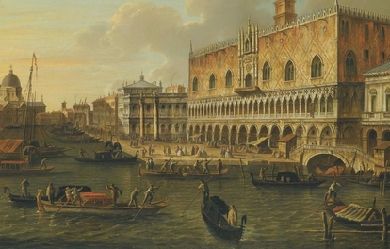
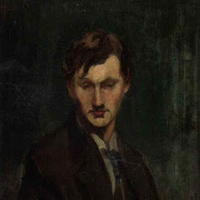
Lionel Pigot Johnson (15 March 1867– 4 October 1902) was an English poet, essayist and critic. Life Johnson was born at Broadstairs, and educated at Winchester College and New College, Oxford, graduating in 1890. He became a Catholic convert in 1891. He lived a solitary life in London, struggling with alcoholism and his repressed homosexuality. He died of a stroke after a fall in the street, though it was said to be a fall from a barstool in the Green Dragon in Fleet Street. During his lifetime were published his The Art of Thomas Hardy (1894), Poems (1895), Ireland and Other Poems (1897). He was one of the Rhymers’ Club, and cousin to Olivia Shakespear (who dedicated her novel The False Laurel to him). In June 1891, Johnson converted to Catholicism, at the same time as he introduced his cousin Lord Alfred Douglas to his friend Oscar Wilde, whom he then repudiated, directing a sonnet at him called “The Destroyer of a Soul” (1892). In 1893, Johnson wrote what some consider his masterpiece, “The Dark Angel”. “The Dark Angel” also served as one of the influences for the Dark Angels chapter of Space Marines in the Warhammer 40,000 fictional universe. Their Primarch, Lion El’Jonson, is also named after the poet. References Wikipedia—https://en.wikipedia.org/wiki/Lionel_Johnson
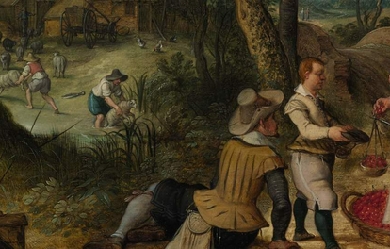
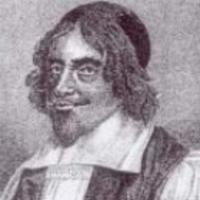
Henry King (1592– 30 September 1669) was an English poet and bishop. Life The older son of John King, Bishop of London, and his wife Joan Freeman, he was baptised at Worminghall, Buckinghamshire, 16 January 1592. He was educated at Lord Williams’s School, Westminster School and in 1608 became a student of Christ Church, Oxford. With his brother John King he matriculated 20 January 1609, and was admitted (19 June 1611 and 7 July 1614) to the degrees of bachelor and master of arts. On 24 January 1616 he was collated to the prebend of St. Pancras in St. Paul’s Cathedral, receiving at the same time the office of penitentiary or confessor in the cathedral, together with the rectory and patronage of Chigwell, Essex. He was made archdeacon of Colchester on 10 April 1617, and soon afterwards received the sinecure rectory of Fulham, in addition to being appointed one of the royal chaplains. All these preferments he held until he was advanced to the episcopal bench. Late in 1617 he preached a sermon at Paul’s Cross. About this time King married Anne, eldest daughter of Robert Berkeley, esq., and granddaughter of Sir Maurice Berkeley. There were four or five children of the marriage, but only two survived. His wife died about 1624, and was buried in St. Paul’s Cathedral, aged just 23. He was a close friend of John Donne, who made him one of his executors, and presented him with his sermons in manuscript, and notes from his reading on over 1400 authors. Other friends were Ben Jonson, George Sandys, Sir Henry Blount, and James Howell. His friendship with Izaak Walton began about 1634, and was lifelong. After his father’s death, on Good Friday 1621, a rumour circulated that he had died in communion with the church of Rome. This was the subject of a two pamphlets attributed to Richard Broughton and George Musket. King preached a sermon refuting this claim on 25 November 1621. He was made canon of Christ Church 3 March 1624, and his brother John was made canon in the following August. On 19 May 1625 they were admitted to the degrees of B.D. and D.D. On 6 February 1639 he was made dean of Rochester, and on 6 February 1642, the day after the House of Lords had passed the bill to deprive the bishops of their votes, he became Bishop of Chichester; he was also presented to the rectory of Petworth in Sussex. He was residing at his episcopal palace when Chichester surrendered to the parliament in 1643, and his library was seized. He was deprived of the rectory of Petworth, which was given by parliament to Francis Cheynell, and by a resolution of the House of Commons, 27 June 1643, his estates were ordered to be sequestrated. From 1643 to 1651 he lived in the house of his brother-in-law, Sir Richard Hobart of Langley, Buckinghamshire. Shortly afterwards King retired to Ritchings, near Langley, the residence of Lady Anne Salter (supposed to be the sister of Brian Duppa, where other members of the King family and John Hales of Eton found refuge. In 1659 King was engaged in negotiations for supplying the vacant bishoprics, and was reinstated at the Restoration, returning to Chichester. On 20 May 1661 he preached at Whitehall, and on 24 April 1662 he delivered an impressive funeral sermon on Bishop Duppa at Westminster Abbey. King died at Chichester 30 September 1669, and was buried in Chichester Cathedral, where the widow of his son John erected a monument to his memory and that of her husband. His second son, Henry, died 21 February 1669; his eldest son, John, died 10 March 1671. Works * King wrote many elegies on royal persons and on his private friends, who included John Donne and Ben Jonson. A selection from his Poems and Psalms was published in 1843. References Wikipedia—https://en.wikipedia.org/wiki/Henry_King_(poet)
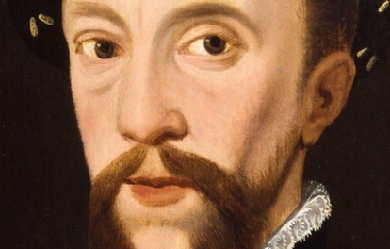
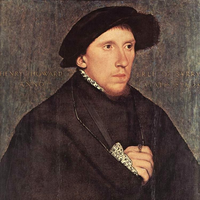
Henry Howard, Earl of Surrey, KG (1516/1517– 19 January 1547), was an English aristocrat, and one of the founders of English Renaissance poetry. He was a first cousin of both Anne Boleyn and Catherine Howard, the second and fifth wives of King Henry VIII. Life He was the eldest son of Thomas Howard, 3rd Duke of Norfolk, and his second wife, the former Lady Elizabeth Stafford (daughter of Edward Stafford, 3rd Duke of Buckingham), so he was descended from kings on both sides of his family tree: King Edward I on his father’s side and King Edward III on his mother’s side. He was reared at Windsor with Henry VIII’s illegitimate son Henry FitzRoy, 1st Duke of Richmond and Somerset, and they became close friends and, later, brothers-in-law upon the marriage of Surrey’s sister to Fitzroy. Like his father and grandfather, he was a brave and able soldier, serving in Henry VIII’s French wars as “Lieutenant General of the King on Sea and Land.” He was repeatedly imprisoned for rash behaviour, on one occasion for striking a courtier, on another for wandering through the streets of London breaking the windows of sleeping people. He became Earl of Surrey in 1524 when his grandfather died and his father became Duke of Norfolk. In 1532 he accompanied his first cousin Anne Boleyn, the King, and the Duke of Richmond to France, staying there for more than a year as a member of the entourage of Francis I of France. In 1536 his first son, Thomas (later 4th Duke of Norfolk), was born, Anne Boleyn was executed on charges of adultery and treason, and the Duke of Richmond died at the age of 17 and was buried at one of the Howard homes, Thetford Abbey. In 1536 Surrey also served with his father against the Pilgrimage of Grace rebellion protesting against the Dissolution of the Monasteries. Literary activity and legacy He and his friend Sir Thomas Wyatt were the first English poets to write in the sonnet form that Shakespeare later used, and Surrey was the first English poet to publish blank verse (unrhymed iambic pentameter) in his translation of the second and fourth books of Virgil’s Aeneid. Together, Wyatt and Surrey, due to their excellent translations of Petrarch’s sonnets, are known as “Fathers of the English Sonnet”. While Wyatt introduced the sonnet into English, it was Surrey who gave them the rhyming meter and the division into quatrains that now characterizes the sonnets variously named English, Elizabethan or Shakespearean sonnets. Death and burial Henry VIII, consumed by paranoia and increasing illness, became convinced that Surrey had planned to usurp the crown from his son Edward. The King had Surrey imprisoned—with his father—sentenced to death on 13 January 1547, and beheaded for treason on 19 January 1547 (his father survived impending execution only by it being set for the day after the king happened to die, though he remained imprisoned). Surrey’s son Thomas became heir to the dukedom of Norfolk instead, inheriting it on the 3rd duke’s death in 1554. He is buried in a spectacular painted alabaster tomb in the church of St Michael the Archangel, Framlingham. Marriage and issue He married Frances de Vere, the daughter of John de Vere, 15th Earl of Oxford, and Elizabeth Trussell. They had two sons and three daughters: Thomas Howard, 4th Duke of Norfolk (10 March 1536– 2 June 1572), married (1) Mary FitzAlan (2) Margaret Audley (3) Elizabeth Leyburne. Henry Howard, 1st Earl of Northampton, who died unmarried. Jane Howard, who married Charles Neville, 6th Earl of Westmorland. Margaret Howard, who married Henry Scrope, 9th Baron Scrope of Bolton. Katherine Howard, who married Henry Berkeley, 7th Baron Berkeley. In popular culture Henry Howard, Earl of Surrey was portrayed by actor David O’Hara in The Tudors, a television series which ran from 2007 to 2010. Ancestry References Wikipedia—https://en.wikipedia.org/wiki/Henry_Howard,_Earl_of_Surrey
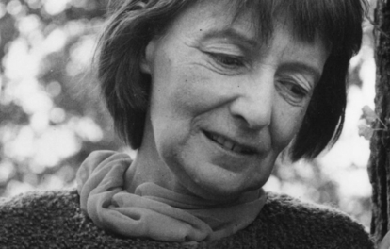
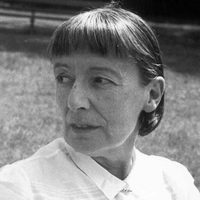
Florence Margaret Smith, known as Stevie Smith (20 September 1902– 7 March 1971) was an English poet and novelist. Life Stevie Smith, born Florence Margaret Smith in Kingston upon Hull, was the second daughter of Ethel and Charles Smith. She was called “Peggy” within her family, but acquired the name “Stevie” as a young woman when she was riding in the park with a friend who said that she reminded him of the jockey Steve Donoghue. Her father was a shipping agent, a business that he had inherited from his father. As the company and his marriage began to fall apart, he ran away to sea and Smith saw very little of her father after that. He appeared occasionally on 24-hour shore leave and sent very brief postcards ("Off to Valparaiso, Love Daddy"). When she was three years old she moved with her mother and sister to Palmers Green in North London where Smith would live until her death in 1971. She resented the fact that her father had abandoned his family. Later, when her mother became ill, her aunt Madge Spear (whom Smith called “The Lion Aunt”) came to live with them, raised Smith and her elder sister Molly and became the most important person in Smith’s life. Spear was a feminist who claimed to have “no patience” with men and, as Smith wrote, “she also had 'no patience’ with Hitler”. Smith and Molly were raised without men and thus became attached to their own independence, in contrast to what Smith described as the typical Victorian family atmosphere of “father knows best”. When Smith was five she developed tubercular peritonitis and was sent to a sanatorium near Broadstairs, Kent, where she remained for three years. She related that her preoccupation with death began when she was seven, at a time when she was very distressed at being sent away from her mother. Death and fear fascinated her and provide the subjects of many of her poems. Her mother died when Smith was 16. When suffering from the depression to which she was subject all her life she was so consoled by the thought of death as a release that, as she put it, she did not have to commit suicide. She wrote in several poems that death was “the only god who must come when he is called”. Smith suffered throughout her life from an acute nervousness, described as a mix of shyness and intense sensitivity. In the Poem “A House of Mercy”, she wrote of her childhood house in North London: It was a house of female habitation, Two ladies fair inhabited the house, And they were brave. For although Fear knocked loud Upon the door, and said he must come in, They did not let him in. Smith was educated at Palmers Green High School and North London Collegiate School for Girls. She spent the remainder of her life with her aunt, and worked as private secretary to Sir Neville Pearson with Sir George Newnes at Newnes Publishing Company in London from 1923 to 1953. Despite her secluded life, she corresponded and socialised widely with other writers and creative artists, including Elisabeth Lutyens, Sally Chilver, Inez Holden, Naomi Mitchison, Isobel English and Anna Kallin. After she retired from Sir Neville Pearson’s service following a nervous breakdown she gave poetry readings and broadcasts on the BBC that gained her new friends and readers among a younger generation. Sylvia Plath became a fan of her poetry and sent Smith a letter in 1962, describing herself as “a desperate Smith-addict.” Plath expressed interest in meeting in person but committed suicide soon after sending the letter. Smith was described by her friends as being naive and selfish in some ways and formidably intelligent in others, having been raised by her aunt as both a spoiled child and a resolutely autonomous woman. Likewise, her political views vacillated between her aunt’s Toryism and her friends’ left-wing tendencies. Smith was celibate for most of her life, although she rejected the idea that she was lonely as a result, alleging that she had a number of intimate relationships with friends and family that kept her fulfilled. She never entirely abandoned or accepted the Anglican faith of her childhood, describing herself as a “lapsed atheist”, and wrote sensitively about theological puzzles;"There is a God in whom I do not believe/Yet to this God my love stretches." Her 14-page essay of 1958, “The Necessity of Not Believing”, concludes: “There is no reason to be sad, as some people are sad when they feel religion slipping off from them. There is no reason to be sad, it is a good thing.” Smith died of a brain tumour on 7 March 1971. Her last collection, Scorpion and other Poems was published posthumously in 1972, and the Collected Poems followed in 1975. Three novels were republished and there was a successful play based on her life, Stevie, written by Hugh Whitemore. It was filmed in 1978 by Robert Enders and starred Glenda Jackson and Mona Washbourne. Fiction Smith wrote three novels, the first of which, Novel on Yellow Paper, was published in 1936. Apart from death, common subjects in her writing include loneliness; myth and legend; absurd vignettes, usually drawn from middle-class British life, war, human cruelty and religion. All her novels are lightly fictionalised accounts of her own life, which got her into trouble at times as people recognised themselves. Smith said that two of the male characters in her last book are different aspects of George Orwell, who was close to Smith. There were rumours that they were lovers; he was married to his first wife at the time. Novel on Yellow Paper (Cape, 1936) Smith’s first novel is structured as the random typings of a bored secretary, Pompey. She plays word games, retells stories from classical and popular culture, remembers events from her childhood, gossips about her friends and describes her family, particularly her beloved Aunt. As with all Smith’s novels, there is an early scene where the heroine expresses feelings and beliefs which she will later feel significant, although ambiguous, regret for. In Novel on Yellow Paper that belief is anti-Semitism, where she feels elation at being the “only Goy” at a Jewish party. This apparently throwaway scene acts as a timebomb, which detonates at the centre of the novel when Pompey visits Germany as the Nazis are gaining power. With horror, she acknowledges the continuity between her feeling “Hurray for being a Goy” at the party and the madness that is overtaking Germany. The German scenes stand out in the novel, but perhaps equally powerful is her dissection of failed love. She describes two unsuccessful relationships, first with the German Karl and then with the suburban Freddy. The final section of the novel describes with unusual clarity the intense pain of her break-up with Freddy. Over the Frontier (Cape, 1938) Smith herself dismissed her second novel as a failed experiment, but its attempt to parody popular genre fiction to explore profound political issues now seems to anticipate post-modern fiction. If anti-Semitism was one of the key themes of Novel on Yellow Paper, Over the Frontier is concerned with militarism. In particular, she asks how the necessity of fighting Fascism can be achieved without descending into the nationalism and dehumanisation that fascism represents. After a failed romance the heroine, Pompey, suffers a breakdown and is sent to Germany to recuperate. At this point the novel changes style radically, as Pompey becomes part of an adventure/spy yarn in the style of John Buchan or Dornford Yates. As the novel becomes increasingly dreamlike, Pompey crosses over the frontier to become a spy and soldier. If her initial motives are idealistic, she becomes seduced by the intrigue and, ultimately, violence. The vision Smith offers is a bleak one: “Power and cruelty are the strengths of our lives, and only in their weakness is there love.” The Holiday (Chapman and Hall, 1949) Smith’s final novel is her own favourite, and most fully realised. It is concerned with personal and political malaise in the immediate post-war period. Most of the characters are either employed in the army or civil service in post-war reconstruction, and its heroine, Celia, works for the Ministry as a cryptographer and propagandist. The Holiday describes a series of hopeless relationships. Celia and her cousin Caz are in love, but cannot pursue their affair since it is believed that, because of their parents’ adultery, they are half-brother and sister. Celia’s other cousin Tom is in love with her, Basil is love with Tom, Tom is estranged from his father, Celia’s beloved Uncle Heber, who pines for a reconciliation; and Celia’s best friend Tiny longs for the married Vera. These unhappy, futureless but intractable relationships are mirrored by the novel’s political concerns. The unsustainability of the British Empire and the uncertainty over Britain’s post-war role are constant themes, and many of the characters discuss their personal and political concerns as if they were seamlessly linked. Caz is on leave from Palestine and is deeply disillusioned, Tom goes mad during the war, and it is telling that the family scandal that blights Celia and Caz’s lives took place in India. Just as Pompey’s anti-semitism was tested in Novel on Yellow Paper, so Celia’s traditional nationalism and sentimental support for colonialism is challenged throughout The Holiday. Poetry Smith’s first volume of poetry, the self-illustrated A Good Time Was Had By All, was published in 1937 and established her as a poet. Soon her poems were found in periodicals. Her style was often very dark; her characters were perpetually saying “goodbye” to their friends or welcoming death. At the same time her work has an eerie levity and can be very funny though it is neither light nor whimsical. “Stevie Smith often uses the word 'peculiar’ and it is the best word to describe her effects” (Hermione Lee). She was never sentimental, undercutting any pathetic effects with the ruthless honesty of her humour. “A good time was had by all” itself became a catch phrase, still occasionally used to this day. Smith said she got the phrase from parish magazines, where descriptions of church picnics often included this phrase. This saying has become so familiar that it is recognised even by those who are unaware of its origin. Variations appear in pop culture, including “Being for the Benefit of Mr. Kite!” by the Beatles. Though her poems were remarkably consistent in tone and quality throughout her life, their subject matter changed over time, with less of the outrageous wit of her youth and more reflection on suffering, faith and the end of life. Her best-known poem is “Not Waving but Drowning”. She was awarded the Cholmondeley Award for Poets in 1966 and won the Queen’s Gold Medal for poetry in 1969. She published nine volumes of poems in her lifetime (three more were released posthumously).
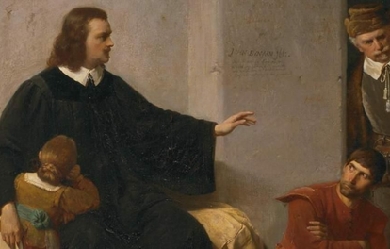
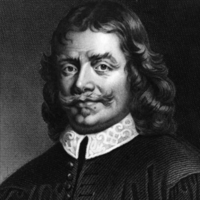
John Bunyan (/ˈbʌnjən/; baptised 30 November 1628– 31 August 1688) was an English writer and Baptist preacher best remembered as the author of the Christian allegory The Pilgrim’s Progress. In addition to The Pilgrim’s Progress, Bunyan wrote nearly sixty titles, many of them expanded sermons. Bunyan came from the village of Elstow, near Bedford. He had some schooling and at the age of sixteen joined the Parliamentary army during the first stage of the English Civil War. After three years in the army he returned to Elstow and took up the trade of tinker, which he had learned from his father. He became interested in religion after his marriage, attending first the parish church and then joining the Bedford Meeting, a nonconformist group in Bedford, and becoming a preacher. After the restoration of the monarch, when the freedom of nonconformists was curtailed, Bunyan was arrested and spent the next twelve years in jail as he refused to undertake to give up preaching. During this time he wrote a spiritual autobiography, Grace Abounding to the Chief of Sinners, and began work on his most famous book, The Pilgrim’s Progress, which was not published until some years after his release. Bunyan’s later years, in spite of another shorter term of imprisonment, were spent in relative comfort as a popular author and preacher, and pastor of the Bedford Meeting. He died aged 59 after falling ill on a journey to London and is buried in Bunhill Fields. The Pilgrim’s Progress became one of the most published books in the English language; 1,300 editions having been printed by 1938, 250 years after the author’s death. He is remembered in the Church of England with a Lesser Festival on 30 August, and on the liturgical calendar of the United States Episcopal Church on 29 August. Some other churches of the Anglican Communion, such as the Anglican Church of Australia, honour him on the day of his death (31 August). Early life John Bunyan was born in 1628 to Thomas and Margaret Bunyan at Bunyan’s End in the parish of Elstow, Bedfordshire. Bunyan’s End is located about half-way between the hamlet of Harrowden (one mile south-east of Bedford) and Elstow High Street. Bunyan’s date of birth is not known, but he was baptised on 30 November 1628, the baptismal entry in the parish register reading "John the sonne of Thomas Bunnion Jun., the 30 November". The name Bunyan was spelt in many different ways (there are 34 variants in Bedfordshire Record Office) and had its origins in the Norman-French name Buignon. There had been Bunyans in north Bedfordshire since at least 1199. Bunyan’s father was a brazier or tinker who travelled around the area mending pots and pans, and his grandfather had been a chapman or small trader. The Bunyans also owned land in Elstow, so Bunyan’s origins were not quite as humble as he suggested in his autobiographical work Grace Abounding to the Chief of Sinners when he wrote that his father’s house was “of that rank that is meanest and most despised in the country”. As a child Bunyan learnt his father’s trade of tinker and was given some rudimentary schooling. In Grace Abounding Bunyan recorded few details of his upbringing, but he did note how he picked up the habit of swearing (from his father), suffered from nightmares, and read the popular stories of the day in cheap chap-books. In the summer of 1644 Bunyan lost both his mother and his sister Margaret. That autumn, shortly before or after his sixteenth birthday, Bunyan enlisted in the Parliamentary army when an edict demanded 225 recruits from the town of Bedford. There are few details available about his military service, which took place during the first stage of the English Civil War. A muster roll for the garrison of Newport Pagnell shows him as private “John Bunnian”. In Grace Abounding, he recounted an incident from this time, as evidence of the grace of God: “When I was a Soldier I, with others were drawn out to go to such a place to besiege it; But when I was just ready to go, one of the company desired to go in my room, to which, when I had consented, he took my place; and coming to the siege, as he stood Sentinel, he was shot into the head with a Musket bullet and died.” Bunyan’s army service provided him with a knowledge of military language which he then used in his book The Holy War, and also exposed him to the ideas of the various religious sects and radical groups he came across in Newport Pagnell. The garrison town also gave him opportunities to indulge in the sort of behaviour he would later confess to in Grace Abounding: “So that until I came to the state of Marriage, I was the very ringleader of all the Youth that kept me company, in all manner of vice and ungodliness”. Bunyan spent nearly three years in the army, leaving in 1647 to return to Elstow and his trade as a tinker. His father had remarried and had more children and Bunyan moved from Bunyan’s End to a cottage in Elstow High Street. Marriage and conversion Within two years of leaving the army, Bunyan married. The name of his wife and the exact date of his marriage are not known, but Bunyan did recall that his wife, a pious young woman, brought with her into the marriage two books that she had inherited from her father: Arthur Dent’s Plain Man’s Pathway to Heaven and Lewis Bayly’s Practice of Piety. He also recalled that, apart from these two books, the newly-weds possessed little: “not having so much household-stuff as a Dish or a Spoon betwixt us both”. The couple’s first daughter, Mary, was born in 1650, and it soon became apparent that she was blind. They would have three more children, Elizabeth, Thomas and John. By his own account, Bunyan had as a youth enjoyed bell-ringing, dancing and playing games including on Sunday, thought by many to be the Sabbath, which was forbidden by the Puritan regime. One Sunday the vicar of Elstow preached a sermon against Sabbath breaking, and Bunyan took this sermon to heart. That afternoon, as he was playing tip-cat (a game in which a small piece of wood is hit with a bat) on Elstow village green, he heard a voice from the heavens “Wilt thou leave thy sins, and go to Heaven? Or have thy sins, and go to Hell?” The next few years were a time of intense spiritual conflict for Bunyan as he struggled with his doubts and fears over religion and guilt over what he saw as his state of sin. During this time Bunyan, whilst on his travels as a tinker, happened to be in Bedford and pass a group of women who were talking about spiritual matters on their doorstep. The women were in fact some of the founding members of the Bedford Free Church or Meeting and Bunyan, who had been attending the parish church of Elstow, was so impressed by their talk that he joined their church. At that time the nonconformist group was meeting in St John’s church in Bedford under the leadership of former Royalist army officer John Gifford. At the instigation of other members of the congregation Bunyan began to preach, both in the church and to groups of people in the surrounding countryside. In 1656, having by this time moved his family to St Cuthbert’s Street in Bedford, he published his first book, Gospel Truths Opened, which was inspired by a dispute with Quakers. In 1658 Bunyan’s wife died, leaving him with four small children, one of them blind. A year later he married an eighteen-year-old woman called Elizabeth. Imprisonment The religious tolerance which had allowed Bunyan the freedom to preach became curtailed with the restoration of the monarchy in 1660. The members of the Bedford Meeting were no longer able to meet in St John’s church, which they had been sharing with the Anglican congregation. That November, Bunyan was preaching at Lower Samsell, a farm near the village of Westoning, thirteen miles from Bedford, when he was warned that a warrant was out for his arrest. Deciding not to make an escape, he was arrested and brought before the local magistrate Sir Francis Wingate, at Harlington House. The Act of Uniformity, which made it compulsory for preachers to be ordained by an Anglican bishop and for the revised Book of Common Prayer to be used in church services, was still two years away, and the Act of Conventicles, which made it illegal to hold religious meetings of five or more people outside the Church of England was not passed until 1664. Bunyan was arrested under the Conventicle Act of 1593, which made it an offence to attend a religious gathering other than at the parish church with more than five people outside their family. The offence was punishable by 3 months imprisonment followed by banishment or execution if the person then failed to promise not to re-offend. The Act had been little used, and Bunyan’s arrest was probably due in part to concerns that non-conformist religious meetings were being held as a cover for people plotting against the king (although this was not the case with Bunyan’s meetings). The trial of Bunyan took place in January 1661 at the quarter sessions in Bedford, before a group of magistrates under John Kelynge, who would later help to draw up the Act of Uniformity. Bunyan, who had been held in prison since his arrest, was indicted of having “devilishly and perniciousy abstained from coming to church to hear divine service” and having held “several unlawful meetings and conventicles, to the great disturbance and distraction of the good subjects of this kingdom”. He was sentenced to three months imprisonment with transportation to follow if at the end of this time he didn’t agree to attend the parish church and desist from preaching. As Bunyan refused to agree to give up preaching, his period of imprisonment eventually extended to 12 years and brought great hardship to his family. Elizabeth, who made strenuous attempts to obtain his release, had been pregnant when her husband was arrested and she subsequently gave birth prematurely to a still-born child. Left to bring up four step-children, one of whom was blind, she had to rely on the charity of Bunyan’s fellow members of the Bedford Meeting and other supporters and on what little her husband could earn in gaol by making shoelaces. But Bunyan remained resolute: “O I saw in this condition I was a man who was pulling down his house upon the head of his Wife and Children; yet thought I, I must do it, I must do it”. Bunyan spent his 12 years’ imprisonment in Bedford County Gaol, which stood on the corner of the High Street and Silver Street. There were however occasions when he was allowed out of prison, depending on the gaolers and the mood of the authorities at the time, and he was able to attend the Bedford Meeting and even preach. His daughter Sarah was born during his imprisonment (the other child of his second marriage, Joseph, was born after his release in 1672). In prison, Bunyan had a copy of the Bible and of John Foxe’s Book of Martyrs, as well as writing materials. He also had at times the company of other preachers who had been imprisoned. It was in Bedford Gaol that he wrote Grace Abounding and started work on The Pilgrim’s Progress, as well as penning several tracts that may have brought him a little money. In 1671, while still in prison, he was chosen as pastor of the Bedford Meeting. By that time there was a mood of increasing religious toleration in the country and in March 1672 the king issued a declaration of indulgence which suspended penal laws against nonconformists. Thousands of nonconformists were released from prison, amongst them Bunyan and five of his fellow inmates of Bedford Gaol. Bunyan was freed in May 1672 and immediately obtained a licence to preach under the declaration of indulgence. Later life Following his release from gaol in 1672 Bunyan probably did not return to his former occupation of tinker. Instead he devoted his time to writing and preaching. He continued as pastor of the Bedford Meeting and travelled over Bedfordshire and adjoining counties on horseback to preach, becoming known affectionately as “Bishop Bunyan”. His preaching also took him to London, where Lord Mayor Sir John Shorter became a friend and presented him with a silver-mounted walking stick. The Pilgrim’s Progress was published in 1678 by Nathaniel Ponder and immediately became popular, though probably making more money for its publisher than for its author. Two events marred Bunyan’s life during the later 1670s. Firstly he became embroiled in a scandal concerning a young woman called Agnes Beaumont. When going to preach in Gamlingay in 1674 he allowed Beaumont, a member of the Bedford Meeting, to ride pillion on his horse, much to the anger of her father, who then died suddenly. His daughter was initially suspected of poisoning him, though the coroner found he had died of natural causes. And then in 1676-7 he underwent a second term of imprisonment, probably for refusing to attend the parish church. In 1688, on his way to London, Bunyan made a detour to Reading, Berkshire, to try and resolve a quarrel between a father and son. Continuing to London to the house of his friend, grocer John Strudwick of Snow Hill in the City of London, he was caught in a storm and fell ill with a fever. He died in Strudwick’s house on the morning of 31 August 1688 and was buried in the tomb belonging to Strudwick in Bunhill Fields nonconformist burial ground in London. Bunyan’s estate at his death was worth £42 19s 0d. His widow Elizabeth died in 1691. Works * Between 1656 when he published his first work, Some Gospel Truths Opened (a tract against the Quakers), and his death in 1688, Bunyan published 42 titles. A further two works, including his Last Sermon, were published the following year by George Larkin. In 1692 Southwark comb-maker Charles Doe, who was a friend of Bunyan’s later years, brought out, with the collaboration of Bunyan’s widow, a collection of the author’s works, including 12 previously unpublished titles, mostly sermons. Six years later Doe published The Heavenly Footman and finally in 1765 Relation of My Imprisonment was published, giving a total of 58 published titles. * It is the allegory The Pilgrim’s Progress, written during Bunyan’s twelve-year imprisonment although not published until 1678 six years after his release, that made Bunyan’s name as an author with its immediate success. It remains the book for which Bunyan is best remembered. The images Bunyan uses in The Pilgrim’s Progress are reflections of images from his own world; the strait gate is a version of the wicket gate at Elstow Abbey church, the Slough of Despond is a reflection of Squitch Fen, a wet and mossy area near his cottage in Harrowden, the Delectable Mountains are an image of the Chiltern Hills surrounding Bedfordshire. Even his characters, like the Evangelist as influenced by John Gifford, are reflections of real people. Further allegorical works were to follow: The Life and Death of Mr. Badman (1680), Pilgrim’s Progress Part II, and The Holy War (1682). Grace Abounding to the Chief of Sinners, a spiritual autobiography was published in 1666, when he was still in jail. Adaptations * In March, 2015 Director Darren Wilson announced a Kickstarter campaign to produce a full-length feature film based on The Pilgrims Progress called Heaven Quest: A Pilgrim’s Progress Movie. Memorials * In 1862 a recumbent statue was created to adorn Bunyan’s grave, and restored in 1922. * In 1874, a bronze statue of John Bunyan, sculpted by Sir Joseph Edgar Boehm, was erected in Bedford. This stands at the south-western corner of St Peter’s Green, facing down Bedford’s High Street. The site was chosen by Boehm for its significance as a crossroads. Bunyan is depicted expounding the Bible, to an invisible congregation, with a broken fetter representing his imprisonment by his left foot. There are three scenes from “The Pilgrim’s Progress” on the stone plinth: Christian at the wicket gate; his fight with Apollyon; and losing his burden at the foot of the cross of Jesus. The statue was unveiled by Lady Augusta Stanley, wife of the Dean of Westminster, on Wednesday 10 June 1874. In 1876 the Duke of Bedford gave bronze doors by Frederick Thrupp depicting scenes from The Pilgrim’s Progress to the Bunyan Meeting (the former Bedford Meeting which had been renamed in Bunyan’s honour). * There is another statue of him in Kingsway, London, and there are memorial windows in Westminster Abbey, Southwark Cathedral and various churches, including Elstow Abbey (the parish church of Elstow) and the Bunyan Meeting Free Church in Bedford. * Bunyan is remembered in the Church of England with a Lesser Festival on 30 August, and on the liturgical calendar of the United States Episcopal Church on 29 August. Some other churches of the Anglican Communion, such as the Anglican Church of Australia, honour him on the day of his death (31 August). Legacy * Bunyan is best remembered for The Pilgrim’s Progress, a book which gained immediate popularity. By 1692, four year’s after the author’s death, publisher Charles Doe estimated that 100,000 copies had been printed in England, as well as editions “in France, Holland, New England and Welch”. By 1938, 250 years after Bunyan’s death, more than 1,300 editions of the book had been printed. * During the 18th century Bunyan’s unpolished style fell out of favour, but his popularity returned with Romanticism, poet Robert Southey writing an appreciative biography in 1830. Bunyan’s reputation was further enhanced by the evangelical revival and he became a favourite author of the Victorians. The tercentenary of Bunyan’s birth, celebrated in 1928, elicited praise from his former adversary, the Church of England. Although popular interest in Bunyan waned during the second half of the twentieth century, academic interest in the writer has increased and Oxford University Press brought out a new edition of his works, beginning in 1976. Authors who have been influenced by Bunyan include Nathaniel Hawthorne, Herman Melville, Charles Dickens, Louisa May Alcott and George Bernard Shaw. * Bunyan’s work, in particular The Pilgrim’s Progress, has reached a wider audience through stage productions, film, TV, and radio. An opera by Ralph Vaughan Williams based on The Pilgrim’s Progress was first performed at the Royal Opera House in 1951 as part of the Festival of Britain and revived in 2012 by the English National Opera. * John Bunyan had six children, five of whom are known to have married, of which four had children. Moot Hall Museum (in Elstow) has a record of John’s descendants, down to the nineteenth century but as of September 2013, no verifiable trace of later descendants has been found. Selected bibliography * * Among Bunyan’s many works: References Wikipedia—https://en.wikipedia.org/wiki/John_Bunyan
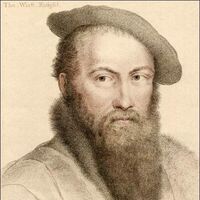
Sir Thomas Wyatt (1503 – 11 October 1542) was a 16th-century English lyrical poet credited with introducing the sonnet into English. He was born at Allington Castle, near Maidstone in Kent – though his family was originally from Yorkshire. His mother was Anne Skinner and his father, Henry Wyatt, had been one of Henry VII's Privy Councillors, and remained a trusted adviser when Henry VIII came to the throne in 1509. In his turn, Thomas Wyatt followed his father to court after his education at St John's College, Cambridge. None of Wyatt's poems were published during his lifetime—the first book to feature his verse was printed a full fifteen years after his death. Education and diplomatic career Wyatt was over six feet tall, reportedly both handsome and physically strong. Wyatt was not only a poet, but also an ambassador in the service of Henry VIII. He first entered Henry's service in 1515 as 'Sewer Extraordinary', and the same year he began studying at St John's College of the University of Cambridge. He married Elizabeth Brooke (1503–1550), the sister of George Brooke, 9th Baron Cobham, in 1522, and a year later she gave birth to a son, Thomas Wyatt, the younger, who led Wyatt's rebellion many years after his father's death. In 1524 Henry VIII assigned Wyatt to be an Ambassador at home and abroad, and some time soon after he separated from his wife on the grounds of adultery. He accompanied Sir John Russell, 1st Earl of Bedford to Rome to help petition Pope Clement VII to annul the marriage of Henry VIII to his first wife, Catherine of Aragon, an embassy whose goal was to make Henry free to marry Anne Boleyn. According to some, Wyatt was captured by the armies of Emperor Charles V when they captured Rome and imprisoned the Pope in 1527 but managed to escape and then made it back to England. In 1535 Wyatt was knighted and appointed High Sheriff of Kent for 1536. In December 1541 he was elected knight of the shire (M.P.) for Kent. Wyatt's poetry and influence Wyatt's professed object was to experiment with the English tongue, to civilise it, to raise its powers to those of its neighbours. Although a significant amount of his literary output consists of translations of sonnets by the Italian poet Petrarch, he wrote sonnets of his own. Wyatt's sonnets first appeared in Tottle's Miscellany, now on exhibit in the British Library in London. In addition to imitations of works by the classical writers Seneca and Horace, he experimented in stanza forms including the rondeau, epigrams, terza rima, ottava rima songs, satires and also with monorime, triplets with refrains, quatrains with different length of line and rhyme schemes, quatrains with codas, and the French forms of douzaine and treizaine in addition to introducing contemporaries to his poulter's measure form (Alexandrine couplets of twelve syllable iambic lines alternating with a fourteener, fourteen syllable line). and is acknowledged a master in the iambic tetrameter. While Wyatt's poetry reflects classical and Italian models, he also admired the work of Chaucer and his vocabulary reflects Chaucer’s (for example, his use of Chaucer’s word newfangleness, meaning fickle, in They flee from me that sometime did me seek). His best-known poems are those that deal with the trials of romantic love. Others of his poems were scathing, satirical indictments of the hypocrisies and flat-out pandering required of courtiers ambitious to advance at the Tudor court. Wyatt was one of the earliest poets of the Renaissance. He was responsible for many innovations in English poetry. He, along with Surrey, introduced the sonnet from Italy into England. His lyrics show great tenderness of feeling and purity of diction. He is one of the originators of the convention in love poetry according to which the mistress is painted as hard-hearted and cruel. Attribution The Egerton Manuscript, originally an album containing Wyatt's personal selection of his poems and translations, preserves 123 texts, partly in the poet's hand. Tottel's Miscellany (1557), the Elizabethan anthology which created Wyatt's posthumous reputation, ascribes 96 poems to him, (33 not extant in the Egerton Manuscript). These 156 poems can be ascribed to Wyatt with certainty, on the basis of objective evidence. Another 129 poems have been ascribed to Wyatt purely on the basis of subjective editorial judgment. They derive mostly from two Tudor manuscript anthologies, the Devonshire and Blage manuscripts. R A Rebholz in his preface to Sir Thomas Wyatt, The Complete Poems, comments, 'the problem of determining which poems Wyatt wrote is as yet unsolved'. However, as Richard Harrier's The Canon of Sir Thomas Wyatt's Poetry (1975) shows, the problem of determining which poems aren't Wyatt's is much simpler. Harrier examines the documentary evidence of the manuscripts (handwritings, organization, etc.) and establishes that there is insufficient textual warrant for assigning any of these poems to Wyatt. The only basis for ascribing these poems to Wyatt resides in editorial evaluation of their style and poetic merits. Compared with the indubitable standard presented in Wyatt's 156 unquestionably ascribable poems, fewer than 30 of these 129 poems survive scrutiny. Most can be dismissed at once. The best edition of Wyatt thus far is Joost Daalder's (1975). It presents 199 poems, including 25 misascriptions (mostly segregated as "Unascribed") and is missing a dozen poems likely to be Wyatt's. A new edition of this major poet, the inventor of lyric poetry in Modern English, is urgently needed. Assessment Critical opinions of his work have varied widely. Thomas Warton, the eighteenth century critic, considered Wyatt 'confessedly an inferior' to his contemporary Henry Howard, Earl of Surrey and that Wyatt's 'genius was of the moral and didactic species and be deemed the first polished English satirist'. The 20th century saw an awakening in his popularity and a surge in critical attention. C. S. Lewis called him ‘the father of the Drab Age’ (i.e. the unornate), from what Lewis calls the 'golden' age of the 16th century, while others see his love poetry, with its complex use of literary conceits, as anticipating that of the metaphysical poets in the next century. More recently, the critic Patricia Thomson, describes Wyatt as "the Father of English Poetry” Rumored affair with Anne Boleyn Many legends and conjectures have grown up around the notion that the young, unhappily married Wyatt fell in love with the young Anne Boleyn in the early-to-mid 1520s. The exact nature of their relationship remains uncertain today. Their acquaintance is certain. However, whether or not the two shared a romantic relationship is unknown to this day. Nineteenth-century critic Rev. George Gilfillan implies that Wyatt and Boleyn were romantically connected. To quote a modern historian "that they did look into each others eyes, and felt that to each other they were all too lovely.." is a quite possible scenario. In his poetry, Thomas calls his mistress Anna, and often embeds pieces of information that correspond with her life into his poetry. "And now I follow the coals that be quent, From Dover to Calais against my mind..." These lines could refer to Anne's trip to France in 1532 right before her marriage to Henry VIII. This could imply that Thomas followed her to France to try and persuade her otherwise or merely to be with her. Later in his life, Thomas writes, while referring to a woman, "Graven in diamonds with letters plain, There is written her fair neck round about, Noli me tangere, Caesar's, I am;" This shows Wyatt's obvious attraction to a royal lady. According to his grandson George Wyatt, who wrote a biography of Anne Boleyn many years after her death, the moment Thomas Wyatt had seen "this new beauty" on her return from France in winter 1522 he had fallen in love with her. When she attracted King Henry VIII's attentions sometime around 1525, Wyatt was the last of Anne's other suitors to be ousted by the king. According to Wyatt's grandson, after an argument over her during a game of bowls with the King, Wyatt was sent on, or himself requested, a diplomatic mission to Italy. Imprisonment on charges of adultery In May 1536 Wyatt was imprisoned in the Tower of London for allegedly committing adultery with Anne Boleyn. He was released from the Tower later that year, thanks to his friendship or his father's friendship with Thomas Cromwell, and he returned to his duties. During his stay in the Tower he may have witnessed not only the execution of Anne Boleyn (May 19, 1536) from his cell window but also the prior executions of the five men with whom she was accused of adultery. Wyatt is known to have written a poem inspired by the experience, which, though it stays clear of declaring the executions groundless, expresses grief and shock. In the 1530s, he wrote poetry in the Devonshire MS declaring his love for a woman; employing the basic acrostic formula, the first letter of each line spells out SHELTUN. A reply is written underneath it, signed by Mary Shelton, rejecting him. Mary, Anne Boleyn's first cousin, had been the mistress of Henry VIII between February and August 1535. In 1540 he was again in favor, as evident by the fact that he was granted the site and many of the manorial estates of the dissolved Boxley Abbey. However, in 1541 he was charged again with treason and the charges were again lifted—though only thanks to the intervention of Henry's fifth wife, then-Queen Catherine Howard, and upon the condition of reconciling with his adulterous wife. He was granted a full pardon and restored once again to his duties as ambassador. After the execution of Catherine Howard, there were rumours that Wyatt's wife, Elizabeth, was a possibility for wife number six, despite the fact that she was still married to Wyatt. He became ill not long after, and died on 11 October 1542 around the age of 39, while staying with his friend Sir John Horsey at Clifton Maybank House in Dorset. He is buried in nearby Sherborne Abbey. Descendants and relatives Long after Thomas Wyatt's death, his only son, Thomas Wyatt the younger, led a thwarted rebellion against Henry's daughter, Queen Mary I, for which he was executed. The rebellion's aim was to set the Protestant-minded Elizabeth, the daughter of Anne Boleyn, on the throne. His sister Margaret Wyatt was the mother of Henry Lee of Ditchley, from whom descend the Lees of Virginia, including Robert E. Lee. Thomas Wyatt's great grandson was Virginia Governor Francis Wyatt. References Wikipedia - http://en.wikipedia.org/wiki/Thomas_Wyatt_(poet)
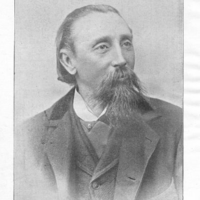
John Hartley (1839-1915) was an English poet who worked in the Yorkshire dialect. He wrote a great deal of prose and poetry – often of a sentimental nature – dealing with the poverty of the district. He was born in Halifax, West Yorkshire. Hartly wrote and edited the Original Illuminated Clock Almanack from 1866 to his death. Most of Hartley’s works are written in dialect. Hartley wrote a number of books featuring the character “Sammywell Grimes”, who has a number of adventures and suffers unfortunate mishaps. Works * Yorkshire Ditties, First Series * Yorkshire Ditties, Second Series * Yorkshire Tales, First Series * Yorkshire Tales, Second Series * Yorkshire Tales, Third Series * Yorkshire Lyrics (1898) * Pensive Poems and Startling Stories * A Rolling Stone. A Tale of Wrongs and Revenge * Mally An’ Me: A selection of Humorous and Pathetic Incidents from the Life of Sammywell Grimes and His Wife Mally (1902) * Yorksher Puddin (1876) * A Sheaf from the Moorland– A Collection of Original Poems * Grimes’ Visit To Th’ Queen. A Royal Time Amang Royalties * Seets I’Lundun: A Yorkshireman’s Ten Days’ Trip * Seets i’ Yorkshire and Lancashire or Grimes’ Comical Trip from Leeds to Liverpool by Canal * Seets i’ Blackpool– Grimes at the Seaside * Seets i’ Paris– Sammywell Grimes’s trip with his old chum Billy Baccus; his opinion o’th’ French, and th’ French opinion o’th’ exhibition he made ov hissen. * Grimes’ Trip to America– Ten letters from Sammywell to John Jones Smith * Sammywell Grimes An’ his Wife Mally Laikin I’ Lakeland: A Humorous Account of their Visit to the Home of Famous Poets, &c., &c. External links * Works by John Hartley at Project Gutenberg * Works by or about John Hartley at Internet Archive * Works by John Hartley at LibriVox (public domain audiobooks) * Yorkshire Ditties by John Hartley– Link fails 25 October 2008– permissions * John Hartley at Old Poetry References Wikipedia—https://en.wikipedia.org/wiki/John_Hartley_(poet)
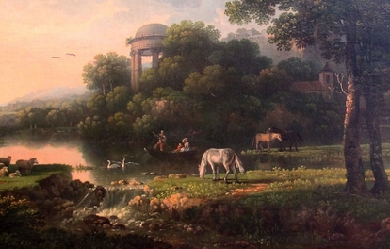
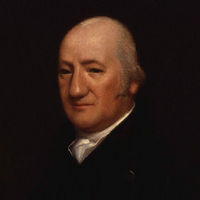
Henry James Pye (/paɪ/; 10 February 1744– 11 August 1813) was an English poet. Pye was Poet Laureate from 1790 until his death. He was the first poet laureate to receive a fixed salary of £27 instead of the historic tierce of Canary wine (though it was still a fairly nominal payment; then as now the Poet Laureate had to look to extra sales generated by the prestige of the office to make significant money from the Laureateship). Life Pye was born in London, the son of Henry Pye of Faringdon House in Berkshire, and his wife, Mary James. He was the nephew of Admiral Thomas Pye. He was educated at Magdalen College, Oxford. His father died in 1766, leaving him a legacy of debt amounting to £50,000, and the burning of the family home further increased his difficulties. In 1784 he was elected Member of Parliament for Berkshire. He was obliged to sell the paternal estate, and, retiring from Parliament in 1790, became a police magistrate for Westminster. Although he had no command of language and was destitute of poetic feeling, his ambition was to obtain recognition as a poet, and he published many volumes of verse. Of all he wrote his prose Summary of the Duties of a Justice of the Peace out of Sessions (1808) is most worthy of record. He was made poet laureate in 1790, perhaps as a reward for his faithful support of William Pitt the Younger in the House of Commons. The appointment was looked on as ridiculous, and his birthday odes were a continual source of contempt. The 20th century British historian Lord Blake called Pye “the worst Poet Laureate in English history with the possible exception of Alfred Austin.” Indeed, Pye’s successor, Robert Southey, wrote in 1814: “I have been rhyming as doggedly and dully as if my name had been Henry James Pye.” After his death, Pye remained one of the unfortunate few who have been classified as a “poetaster.” As a prose writer, Pye was far from contemptible. He had a fancy for commentaries and summaries. His “Commentary on Shakespeare’s commentators”, and that appended to his translation of the Poetics, contain some noteworthy matter. A man, who, born in 1745, could write “Sir Charles Grandison is a much more unnatural character than Caliban,” may have been a poetaster but was certainly not a fool. He died in Pinner, Middlesex on 11 August 1813. Pye married twice. He had two daughters by his first wife. He married secondly in 1801 Martha Corbett, by whom he had a son Henry John Pye, who in 1833 inherited the Clifton Hall, Staffordshire estate of a distant cousin and who was High Sheriff of Staffordshire in 1840. Works Prose * Summary of the Duties of a Justice of the Peace out of Sessions (1808) * The Democrat (1795) * The Aristocrat (1799) Poetry * Poems on Various Subjects (1787), first substantial collection of Pye’s verse * Adelaide: a Tragedy in Five Acts (1800) * Alfred (1801) Translations * Aristotle’s Poetics (1792) References Wikipedia—https://en.wikipedia.org/wiki/Henry_James_Pye
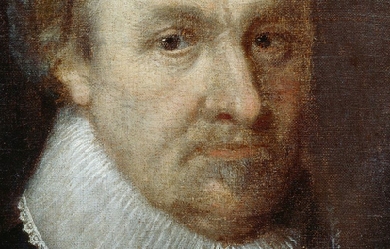
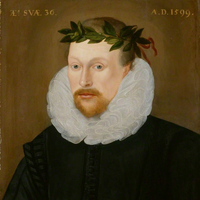
Michael Drayton (1563– 23 December 1631) was an English poet who came to prominence in the Elizabethan era. Early life Drayton was born at Hartshill, near Nuneaton, Warwickshire, England. Almost nothing is known about his early life, beyond the fact that in 1580 he was in the service of Thomas Goodere of Collingham, Nottinghamshire. Nineteenth– and twentieth-century scholars, on the basis of scattered allusions in his poems and dedications, suggested that Drayton might have studied at the University of Oxford, and been intimate with the Polesworth branch of the Goodere family. More recent work has cast doubt on those speculations. Literary career 1591–1602 In 1591 he produced his first book, The Harmony of the Church, a volume of spiritual poems, dedicated to Lady Devereux. It is notable for a version of the Song of Solomon, executed with considerable richness of expression. However, with the exception of forty copies, seized by the Archbishop of Canterbury, the whole edition was destroyed by public order. Nevertheless, Drayton published a vast amount within the next few years. In 1593 appeared Idea: The Shepherd’s Garland, a collection of nine pastorals, in which he celebrated his own love-sorrows under the poetic name of Rowland. The basic idea was expanded in a cycle of sixty-four sonnets, published in 1594, under the title of Idea’s Mirror, by which we learn that the lady lived by the river Ankor in Warwickshire. It appears that he failed to win his “Idea,” and lived and died a bachelor. It has been said Drayton’s sonnets possess a direct, instant, and universal appeal, by reason of their simple straightforward ring and foreshadowed the smooth style of Fairfax, Waller, and Dryden. Drayton was the first to bring the term ode, for a lyrical poem, to popularity in England and was a master of the short, staccato Anacreontics measure. Also in 1593 there appeared the first of Drayton’s historical poems, The Legend of Piers Gaveston, and the next year saw the publication of Matilda, an epic poem in rhyme royal. It was about this time, too, that he brought out Endimion and Phoebe, a volume which he never republished, but which contains some interesting autobiographical matter, and acknowledgments of literary help from Thomas Lodge, if not from Edmund Spenser and Samuel Daniel also. In his Fig for Momus, Lodge reciprocated these friendly courtesies. In 1596 Drayton published his long and important poem Mortimeriados, a very serious production in ottava rima. He later enlarged and modified this poem, and republished it in 1603 under the title of The Barons’ Wars. In 1596 also appeared another historical poem, The Legend of Robert, Duke of Normandy, with which Piers Gaveston was reprinted. In 1597 appeared England’s Heroical Epistles, a series of historical studies, in imitation of those of Ovid. These last poems, written in the heroic couplet, contain some of the finest passages in Drayton’s writings. 1603–1631 By 1597, the poet was resting on his laurels. It seems that he was much favoured at the court of Elizabeth, and he hoped that it would be the same with her successor. But when, in 1603, he addressed a poem of compliment to James I, on his accession, it was ridiculed, and his services rudely rejected. His bitterness found expression in a satire, The Owl (1604), but he had no talent in this kind of composition. Not much more entertaining was his scriptural narrative of Moses in a Map of his Miracles, a sort of epic in heroics printed the same year. In 1605 Drayton reprinted his most important works, his historical poems and the Idea, in a single volume which ran through eight editions during his lifetime. He also collected his smaller pieces, hitherto unedited, in a volume undated, but probably published in 1605, under the title of Poems Lyric and Pastoral; these consisted of odes, eclogues, and a fantastic satire called The Man in the Moon. Some of the odes are extremely spirited. In this volume he printed for the first time the famous Ballad of Agincourt. He had adopted as early as 1598 the extraordinary resolution of celebrating all the points of topographical or antiquarian interest in the island of Great Britain, and on this laborious work he was engaged for many years. At last, in 1613, the first part of this vast work was published under the title of Poly-Olbion, eighteen books being produced, to which the learned Selden supplied notes. The success of this great work, which has since become so famous, was very small at first, and not until 1622 did Drayton succeed in finding a publisher willing to undertake the risk of bringing out twelve more books in a second part. This completed the survey of England, and the poet, who had hoped “to crown Scotland with flowers,” and arrive at last at the Orcades, never crossed the Tweed. In 1627 he published another of his miscellaneous volumes, and this contains some of his most characteristic writing. It consists of the following pieces: The Battle of Agincourt, an historical poem in ottava rima (not to be confused with his ballad on the same subject), and The Miseries of Queen Margaret, written in the same verse and manner; Nimphidia, the Court of Faery, a most joyous and graceful little epic of fairyland; The Quest of Cinthia and The Shepherd’s Sirena, two lyrical pastorals; and finally The Moon Calf, a sort of satire. Nimphidia is the most critically acclaimed, along with his famous ballad on the battle of Agincourt; it is quite unique of its kind and full of rare fantastic fancy. The last of Drayton’s voluminous publications was The Muses’ Elizium in 1630. He died in London, was buried in Poets’ Corner in Westminster Abbey, and had a monument placed over him by the Countess of Dorset, with memorial lines attributed to Ben Jonson. Theatre Like other poets of his era, Drayton was active in writing for the theatre; but unlike Shakespeare, Ben Jonson, or Samuel Daniel, he invested little of his art in the genre. For a period of only five years, from 1597 to 1602, Drayton was a member of the stable of playwrights who supplied material for the theatrical syndicate of Philip Henslowe. Henslowe’s Diary links Drayton’s name with 23 plays from that period, and shows that Drayton almost always worked in collaboration with other Henslowe regulars, like Thomas Dekker, Anthony Munday, and Henry Chettle, among others. Of these 23 plays, only one has survived, that being Part 1 of Sir John Oldcastle, which Drayton composed in collaboration with Munday, Robert Wilson, and Richard Hathwaye. The text of Oldcastle shows no clear signs of Drayton’s hand; traits of style consistent through the entire corpus of his poetry (the rich vocabulary of plant names, star names, and other unusual words; the frequent use of original contractional forms, sometimes with double apostrophes, like “th’adult’rers” or “pois’ned’st”) are wholly absent from the text, suggesting that his contribution to the collaborative effort was not substantial. William Longsword, the one play that Henslowe’s Diary suggests was a solo Drayton effort, was never completed. (Drayton may have preferred the role of impresario to that of playwright; he was one of the lessees of the Whitefriars Theatre, together with Thomas Woodford, nephew of the playwright Thomas Lodge, when it was started in 1608. Around 1606, Drayton was also part of a syndicate that chartered a company of child actors, The Children of the King’s Revels. These may or may not have been the Children of Paul’s under a new name, since the latter group appears to have gone out of existence at about this time. The venture was not a success, dissolving in litigation in 1609.) Friendships Drayton was a friend of some of the most famous men of the age. He corresponded familiarly with Drummond; Ben Jonson, William Browne, George Wither and others were among his friends. There is a tradition that he was a friend of Shakespeare, supported by a statement of John Ward, once vicar of Stratford-on-Avon, that “Shakespear, Drayton and Ben Jonson had a merry meeting, and it seems, drank too hard, for Shakespear died of a feavour there contracted.” In one of his poems, an elegy or epistle to Mr Henry Reynolds, he has left some valuable criticisms on poets whom he had known. That he was a restless and discontented, as well as a worthy, man may be gathered from his own admissions. Editions In 1748 a folio edition of Drayton’s complete works was published under the editorial supervision of William Oldys, and again in 1753 there appeared an issue in four volumes quarto. But these were very unintelligently and inaccurately prepared. A complete edition of Drayton’s works with variant readings was projected by Richard Hooper in 1876, but was never carried to a conclusion; a volume of selections, edited by A. H. Bullen, appeared in 1883. See especially Oliver Elton, Michael Drayton (1906). A complete five-volume edition of Drayton’s work was published by Oxford in 1931-41 (revised 1961), edited by J. William Hebel, K. Tillotson and B. H. Newdigate. That and a two volume edition of Drayton’s poems published at Harvard in 1953, edited by John Buxton, are the only 20th century editions of his poems recorded by the Library of Congress. References Wikipedia—https://en.wikipedia.org/wiki/Michael_Drayton
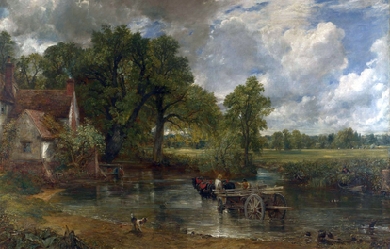
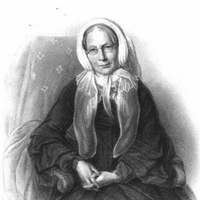
Ann Taylor (30 January 1782– 20 December 1866) was an English poet and literary critic. In her youth she was a writer of verse for children, for which she achieved long-lasting popularity. In the years immediately preceding her marriage, she became an astringent literary critic of growing reputation. She is, however, best remembered as the elder sister and collaborator of Jane Taylor. The literary family The Taylor sisters were part of an extensive literary family, daughters of Isaac Taylor of Ongar. Ann was born in Islington and lived with her family at first in London and later in Lavenham in Suffolk, in Colchester and, briefly, in Ongar. The sisters’ father, Isaac Taylor, was, like his own father, an engraver. He later became an educational pioneer and Independent minister and wrote a number of instructional books for the young. Their mother, Mrs (Ann Martin) Taylor (1757–1830) wrote seven works of moral and religious advice– in many respects liberal for their time– two of them fictionalized. Ann and Jane’s brothers, Isaac and Jefferys, also wrote, the former being a theologian, but also the inventor of a patent beer tap. The elder brother Charles Taylor edited The Literary Panorama, for which he wrote on topics from art to politics, and produced, anonymously, a massive annotated translation of Augustin Calmet’s Dictionary of the Bible. His younger brother Josiah was a publisher, chiefly of works on architecture and design. Authorship The sisters and their authorship of various works have often been confused, usually to Jane’s advantage. This is in part because their early works for children were published together and without attribution, but also because Jane, by dying young at the height of her powers, unwittingly attracted early posthumous eulogies, including what is almost a hagiography by her brother Isaac, and much of Ann’s work came to be ascribed to Jane, a borrowing which, Ann ruefully remarked, she could ill afford and which Jane certainly did not require. It is true that Jane achieved much more than Ann as a writer of poetry for an adult readership– though Ann’s poem “The Maniac’s Song”, published in the Associate Minstrels (1810), was probably the finest short poem by either sister, and it has even been postulated that it was an inspiration for Keats’s La Belle Dame sans Merci (Lynette Felber: Ann Taylor’s “The Maniac’s Song”: an unacknowledged source for Keats’s “La Belle Dame sans Merci”. However, Ann also deserves to be remembered as a writer of prose, as evinced particularly by her autobiography and by the many letters of hers that survive. Her style is strong and vivid and, when she is not too preoccupied with moral and religious themes– like her sister Jane, she tended to pessimism about her own spiritual worth– it is often shot through with a pleasing and sometimes acerbic wit. The autobiography also provides much detailed and fascinating information about the life of a moderately prosperous dissenting family in the late 18th and early 19th centuries. Appreciations Ann Taylor’s son, Josiah Gilbert, wrote: “Two little poems– 'My Mother’, and 'The Star’, are perhaps, more frequently quoted than any. The first, a lyric of life, was by Ann, the second, of nature, by Jane; and they illustrate this difference between the sisters.” Both poems attracted the compliment of frequent parody throughout the 19th century. The logician Augustus De Morgan asserted (somewhat extravagantly) that Gilbert’s mother wrote “one of the most beautiful lyrics in the English language, or any other language” and not knowing that Ann Gilbert was still alive, called upon Tennyson to supply a less heterodox version of the final stanza, which seemed to de Morgan unworthy of the rest. Original Poems for Infant Minds by several young persons (by Ann and Jane and others) was first issued in two volumes in 1804 and 1805. Rhymes for the Nursery followed in 1806, and Hymns for Infant Minds in 1808. In Original Poems for Infant Minds the authors were identified for each poem. In Rhymes for the Nursery (1806) poems were not identified by author. Attributions for the sisters’ poems can be found in an exceptional Taylor resource: The Taylors of Ongar: An Analytical Bio-Bibliography by Christina Duff Stewart. Stewart cites a copy of Rhymes for the Nursery belonging to a nephew, Canon Isaac Taylor, annotated to indicate the respective authorship of Ann and Jane. Stewart also confirms attributions of Original Poems based on publisher’s records. Marriage and widowhood On 24 December 1813, Ann married Joseph Gilbert, an Independent (later Congregational) minister and theologian, and left Ongar to make a new home far from her family, at Masborough near Rotherham. A widower of thirty-three, Gilbert had proposed to Ann before he had even met her, forming a sound estimation of her character and intelligence from her writings, particularly as a trenchant critic in The Eclectic Review. Gilbert was, at the time of their marriage, the classical tutor at Rotherham Independent College– the nearest thing to a university open to dissenters at this time– and simultaneously pastor of the Nether Chapel in Sheffield. In 1817, he moved to the pastorate of the Fish Street Chapel in Hull and then, in 1825, to Nottingham, serving in chapels in the city for the rest of his life. Kept busy with the duties of wife and later mother, Ann Gilbert still managed to write poems, hymns, essays, and letters. Her interest in public matters, such as atheism, prison reform, and the anti-slavery movement, often spurred her to take up her pen, and the results of those scattered moments found a way into print. Oddly for one of such independence of mind and strongly held and usually liberal opinions, she was firmly opposed to female suffrage. After Gilbert died on 12 December 1852, Ann found time to write a short memoir of her husband. Nor did she spend the rest of her long life in gentle retirement. As well as actively supporting the members of her large family, through visits and a constant stream of letters– family was always of central concern to the Taylors– she travelled widely in many parts of Britain, taking in her stride as an old lady travelling conditions that might have daunted one much younger. She died on 20 December 1866 and was buried next to her husband in Nottingham General Cemetery, although the inscription recording this on the vast Gothic sarcophagus has disappeared.
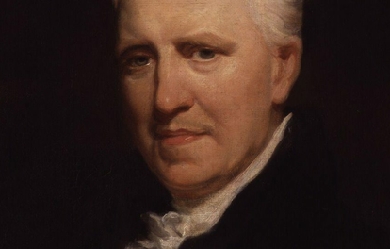

George Crabbe (/kræb/; 24 December 1754– 3 February 1832) was an English poet, surgeon, and clergyman. He is best known for his early use of the realistic narrative form and his descriptions of middle and working-class life and people. In the 1770s, Crabbe began his career as a doctor’s apprentice, later becoming a surgeon. In 1780, he travelled to London to make a living as a poet. After encountering serious financial difficulty and being unable to have his work published, he wrote to the statesman and author Edmund Burke for assistance. Burke was impressed enough by Crabbe’s poems to promise to help him in any way he could. The two became close friends and Burke helped Crabbe greatly both in his literary career and in building a role within the church. Burke introduced Crabbe to the literary and artistic society of London, including Sir Joshua Reynolds and Samuel Johnson, who read The Village before its publication and made some minor changes. Burke secured Crabbe the important position of Chaplain to the Duke of Rutland. Crabbe served as a clergyman in various capacities for the rest of his life, with Burke’s continued help in securing these positions. He developed friendships with many of the great literary men of his day, including Sir Walter Scott, whom he visited in Edinburgh, and William Wordsworth and some of his fellow Lake Poets, who frequently visited Crabbe as his guests. Lord Byron described him as “nature’s sternest painter, yet the best.” Crabbe’s poetry was predominantly in the form of heroic couplets, and has been described as unsentimental in its depiction of provincial life and society. The modern critic Frank Whitehead wrote that “Crabbe, in his verse tales in particular, is an important–indeed, a major–poet whose work has been and still is seriously undervalued.” Crabbe’s works include The Village (1783), Poems (1807), The Borough (1810), and his poetry collections Tales (1812) and Tales of the Hall (1819). Biography Early life Crabbe was born in Aldeburgh, Suffolk, the eldest child of George Crabbe Sr. The elder George Crabbe had been a teacher at a village school in Orford, Suffolk, and later in Norton, near Loddon, Norfolk; he later became a tax collector for salt duties, a position that his own father had held. As a young man he married an older widow named Craddock, who became the mother of his six children: George, his brothers Robert, John, and William, his sister Mary, and another sister who died as an infant. George Jr. spent his first 25 years close to his birthplace. He showed an aptitude for books and learning at an early age. He was sent to school while still very young, and developed an interest in the stories and ballads that were popular among his neighbors. His father owned a few books, and used to read passages from John Milton and from various 18th-century poets to his family. He also subscribed to a country magazine called Martin’s Philosophical Magazine, giving the “poet’s corner” section to George. The senior Crabbe had interests in the local fishing industry, and owned a fishing boat; he had contemplated raising his son George to be a seaman, but soon found that the boy was unsuited to such a career. George’s father respected his son’s interest in literature, and George was sent first to a boarding-school at Bungay near his home, and a few years later to a more important school at Stowmarket, where he gained an understanding of mathematics and Latin, and a familiarity with the Latin classics. His early reading included the works of William Shakespeare, Alexander Pope, who had a great influence on George’s future works, Abraham Cowley, Sir Walter Raleigh and Edmund Spenser. He spent three years at Stowmarket before leaving school to find a physician to be apprenticed to, as medicine had been settled on as his future career. In 1768 he was apprenticed to a local doctor at Wickhambrook, near Bury St Edmunds. This doctor practiced medicine while also keeping a small farm, and George ended up doing more farm labour and errands than medical work. In 1771 he changed masters and moved to Woodbridge, where he remained until 1775. While at Woodbridge he joined a small club of young men who met at an inn for evening discussions. Through his contacts at Woodbridge he met his future wife, Sarah Elmy. Crabbe called her “Mira”, later referring to her by this name in some of his poems. During this time he began writing poetry. In 1772, a lady’s magazine offered a prize for the best poem on the subject of hope, which Crabbe won. The same magazine printed other short pieces of Crabbe’s throughout 1772. They were signed “G. C., Woodbridge,” and included some of his lyrics addressed to Mira. Other known verses written while he was at Woodbridge show that he made experiments in stanza form modeled on the works of earlier English poets, but only showed some slight imitative skill. 1775 to 1785 His first major work, a satirical poem of nearly 400 lines in Pope’s couplet form entitled Inebriety, was self-published in 1775. Crabbe later said of the poem, which received little or no attention at the time, “Pray let not this be seen... there is very little of it that I’m not heartily ashamed of.” By this time he had completed his medical training and had returned home to Aldeburgh. He had intended to go on to London to study at a hospital, but he was forced through low finances to work for some time as a local warehouseman. He eventually travelled to London in 1777 to practice medicine, returning home in financial difficulty after a year. Crabbe continued to practice as a surgeon after returning to Aldeburgh, but as his surgical skills remained deficient, he attracted only the poorest patients, and his fees were small and undependable. This hurt his chances of an early marriage, but Sarah stayed devoted to him. In late 1779 he decided to move to London and see if he could make it as a poet, or, if that failed, as a doctor. He moved to London in April 1780, where he had little success, and by the end of May he had been forced to pawn some of his possessions, including his surgical instruments. He composed a number of works but was refused publication. He wrote several letters seeking patronage, but these were also refused. In June Crabbe witnessed instances of mob violence during the Gordon Riots, and recorded them in his journal. He was able to publish a poem at this time entitled The Candidate, but it was badly received by critics. He continued to rack up debts that he had no way of paying, and his creditors pressed him. He later told Walter Scott and John Gibson Lockhart that “during many months when he was toiling in early life in London he hardly ever tasted butchermeat except on a Sunday, when he dined usually with a tradesman’s family, and thought their leg of mutton, baked in the pan, the perfection of luxury.” In early 1781 he wrote a letter to Edmund Burke asking for help, in which he included samples of his poetry. Burke was swayed by Crabbe’s letter and a subsequent meeting with him, giving him money to relieve his immediate wants, and assuring him that he would do all in his power to further Crabbe’s literary career. Among the samples that Crabbe had sent to Burke were pieces of his poems The Library and The Village. A short time after their first meeting Burke told his friend Sir Joshua Reynolds that Crabbe had “the mind and feelings of a gentleman.” Burke gave Crabbe the footing of a friend, admitting him to his family circle at Beaconsfield. There he was given an apartment, supplied with books, and made a member of the family. The time he spent with Burke and his family helped by enlarging his knowledge and ideas, and introducing him to many new and valuable friends including Charles James Fox and Samuel Johnson. He completed his unfinished poems and revised others with the help of Burke’s criticism. Burke helped him have his poem, The Library, published anonymously in June 1781, by a publisher that had previously refused some of his work. The Library was greeted with modest praise from critics, and slight public appreciation. Through their friendship, Burke discovered that Crabbe was more suited to be a clergyman than a surgeon. Crabbe had a good knowledge of Latin and an evident natural piety, and was well read in the scriptures. He was ordained to the curacy of his native town on 21 December 1781 through Burke’s recommendation. He returned to live in Aldeburgh with his sister and father, his mother having died in his absence. Crabbe was surprised to find that he was poorly treated by his fellow townsmen, who resented his rise in social class. With Burke’s help, Crabbe was able to leave Aldeburgh to become chaplain to the Duke of Rutland at Belvoir Castle in Leicestershire. This was an unusual move on Burke’s part, as this kind of preferment would usually have been given to a family member or personal friend of the Duke or through political interest. Crabbe’s experience as Chaplain at Belvoir was not altogether happy. He was treated with kindness by the Duke and Duchess, but his slightly unpolished manners and his position as a literary dependent made his relations with others in the Duke’s house difficult, especially the servants. However, the Duke and Duchess and many of their noble guests shared an interest in Crabbe’s literary talent and work. During his time there, his poem The Village was published in May 1783, achieving popularity with the public and critics. Samuel Johnson said of the poem in a letter to Reynolds “I have sent you back Mr. Crabbe’s poem, which I read with great delight. It is original, vigorous, and elegant.” Johnson’s friend and biographer James Boswell also praised The Village. It was said at the time of publication that Johnson had made extensive changes to the poem, but Boswell responded by saying that “the aid given by Johnson to the poem, as to The Traveller and Deserted Village of Goldsmith, were so small as by no means to impair the distinguished merit of the author.” Crabbe was able to keep up his friendships with Burke, Reynolds, and others during the Duke’s occasional visits to London. He visited the theatre, and was impressed with the actresses Sarah Siddons and Dorothea Jordan. Around this time it was decided that, as Chaplain to a noble family, Crabbe was in need of a college degree, and his name was entered on the boards of Trinity College, Cambridge, through the influence of Bishop Watson of Llandaff, so that Crabbe could obtain a degree without residence. This was in 1783, but almost immediately afterwards he received an LL.B. degree from the Archbishop of Canterbury. This degree allowed Crabbe to be given two small livings in Dorsetshire, Frome St Quintin and Evershot. This promotion does not seem to have interfered with Crabbe’s residence at Belvoir or in London; it is likely that curates were placed in these situations. On the strength of these preferments and a promise of future assistance from the Duke, Crabbe and Sarah Elmy were married in December 1783, in the parish church of Beccles, where Miss Elmy’s mother lived, and a few weeks later went to live together at Belvoir Castle. In 1784 the Duke of Rutland became Lord Lieutenant of Ireland. It was decided that Crabbe was not to be on the Duke’s staff in Ireland, though the two men parted as close friends. The young couple stayed on at Belvoir for nearly another eighteen months before Crabbe accepted a vacant curacy in the neighbourhood, that of Stathern in Leicestershire, where Crabbe and his wife moved in 1785. A child had been born to them at Belvoir, dying only hours after birth. During the following four years at Stathern they had three other children; two sons, George and John, in 1785 and 1787, and a daughter in 1789, who died in infancy. Crabbe later told his children that his four years at Stathern were the happiest of his life. 1785 to 1810 In October 1787 the Duke of Rutland died at the Vice-Regal Lodge in Dublin, after a short illness, at the early age of 35. Crabbe assisted at the funeral at Belvoir. The Duchess, anxious to have their former chaplain close by, was able to get Crabbe the two livings of Muston, Leicestershire, and Allington, Lincolnshire, in exchange for his old livings. Crabbe brought his family to Muston in February 1789. His connection with the two livings lasted for over 25 years, but during 13 of these years he was a non-resident. He stayed three years at Muston. Another son, Edmund, was born in 1790. In 1792, through the death of one of Sarah’s relations and soon after of her older sister, the Crabbe family came into possession of an estate in Parham, which removed all of their financial worries. Crabbe soon moved his family to this estate. Their son William was born the same year. Crabbe’s life at Parham was not happy. The former owner of the estate had been very popular for his hospitality, while Crabbe’s lifestyle was much more quiet and private. His solace here was the company of his friend Dudley Long North and his fellow Whigs who lived nearby. Crabbe soon sent his two sons George and John to school in Aldeburgh. After four years at Parham, the Crabbes moved to a home in Great Glemham, Suffolk, placed at his disposal by Dudley North. The family remained here for four or five years. In 1796 their third son, Edmund died at the age of six. This was a heavy blow to Sarah who began suffering from a nervous disorder from which she never recovered. Crabbe, a devoted husband, tended her with exemplary care until her death in 1813. Robert Southey, writing about Crabbe to his friend, Neville White, in 1808, said “It was not long before his wife became deranged, and when all this was told me by one who knew him well, five years ago, he was still almost confined in his own house, anxiously waiting upon this wife in her long and hopeless malady. A sad history! It is no wonder that he gives so melancholy a picture of human life.” During his time at Glemham, Crabbe composed several novels, none of which were published. After Glemham, Crabbe moved to the village of Rendham in Suffolk, where he stayed until 1805. His poem The Parish Register was all but completed while at Rendham, and The Borough was also begun. 1805 was the last year of Crabbe’s stay in Suffolk, and it was made memorable in literature by the appearance of the Lay of the Last Minstrel by Walter Scott. Crabbe first saw it in a bookseller’s shop in Ipswich, read it nearly through while standing at the counter, and pronounced that a new and great poet had appeared. In October 1805, Crabbe returned with his wife and two sons to the parsonage at Muston. He had been absent for nearly 13 years, of which four had been spent at Parham, five at Great Glemham, and four at Rendham. In September 1807, Crabbe published a new volume of poems. Included in this volume were The Library, The Newspaper, and The Village; the principal new poem was The Parish Register, to which were added Sir Eustace Grey and The Hall of Justice. The volume was dedicated to Henry Vassall-Fox, 3rd Baron Holland, nephew and sometime ward of Charles James Fox. An interval of 22 years had passed since Crabbe’s last appearance as an author, and he explained in the preface to this volume the reasons for this lapse as being his higher calling as a clergyman and his slow progress in poetical ability. This volume led to Crabbe’s general acceptance as an important poet. Four editions were issued during the following year and a half, the fourth appearing in March 1809. The reviews were unanimous in approval, headed by Francis Jeffrey in the Edinburgh Review. In 1809 Crabbe sent a copy of his poems in their fourth edition to Walter Scott, who acknowledged them in a friendly reply. Scott told Crabbe “how for more than twenty years he had desired the pleasure of a personal introduction to him, and how, as a lad of eighteen, he had met with selections from The Village and The Library in The Annual Register.” This exchange of letters led to a friendship that lasted for the rest of their lives, both authors dying in 1832. Crabbe’s favorite among Scott’s “Waverley” novels was The Heart of Midlothian. The success of The Parish Register in 1807 encouraged Crabbe to proceed with a far longer poem, which he had been working on for several years. The Borough was begun at Rendham in Suffolk in 1801, continued at Muston after his return in 1805, and finally completed during a long visit to Aldeburgh in the autumn of 1809. It was published in 1810. In spite of its defects, The Borough was an outright success. The poem appeared in February 1810, and went through six editions in the next six years. When he visited London a few years later and was received with general welcome in the literary world, he was very surprised. “In my own village,” he told James Smith, “they think nothing of me.” The three years following the publication of The Borough were especially lonely for him. He did have his two sons, George and John, with him; they had both passed through Cambridge, one at Trinity and the other at Caius, and were now clergymen themselves, each holding a curacy in the neighbourhood, enabling them to live under the parental roof, but Mrs. Crabbe’s health was now very poor, and Crabbe had no daughter or female relative at home to help him with her care. Later life Crabbe’s next volume of poetry, Tales was published in the summer of 1812. It received a warm welcome from the poet’s admirers, and was favorably reviewed by Jeffrey in the Edinburgh Review and is considered to be his masterpiece. In the summer of 1813, Mrs. Crabbe felt well enough to want to see London again, and the father and mother and two sons spent nearly three months in rooms in a hotel. Crabbe was able to visit Dudley North and some of his other old friends, and to visit and help the poor and distressed, remembering his own want and misery in the great city thirty years earlier. The family returned to Muston in September, and Mrs. Crabbe died at the end of October at the age of 63. Within days of his wife’s death Crabbe fell seriously ill, and was in danger of dying. He rallied, however, and returned to the duties of his parish. In 1814, he became Rector of Trowbridge in Wiltshire, a position given to him by the new Duke of Rutland. He remained at Trowbridge for the rest of his life. His two sons followed him, as soon as their existing engagements allowed them to leave Leicestershire. The younger, John, who married in 1816, became his father’s curate, and the elder, who married a year later, became curate at Pucklechurch, also nearby. Crabbe’s reputation as a poet continued to grow in these years. His growing reputation soon made him a welcome guest in many houses to which his position as vicar of Trowbridge might not have admitted him. Nearby was the poet William Lisle Bowles, who introduced Crabbe to the noble family at Bowood House, home of the Marquess of Lansdowne, who was always ready to welcome those distinguished in literature and the arts. It was at Bowood House that Crabbe first met the poet Samuel Rogers, who became a close friend and had an influence on Crabbe’s poetry. In 1817, on the recommendation of Rogers, Crabbe stayed in London from the middle of June to the end of July in order to enjoy the literary society of the capital. While there he met Thomas Campbell, and through him and Rogers was introduced to his future publisher John Murray. In June 1819, Crabbe published his collection Tales of the Hall. The last 13 years of Crabbe’s life were spent at Trowbridge, varied by occasional visits among his friends at Bath and the surrounding neighbourhood, and by yearly visits to his friend Samuel Hoare Jr in Hampstead. From here it was easy to visit his literary friends in London, while William Wordsworth, Southey, and others occasionally stayed with the family. Around 1820 Crabbe began suffering from frequent severe attacks of neuralgia, and this illness, together with his age, made him less and less able to travel to London. In the spring of 1822, Crabbe met Walter Scott for the first time in London, and promised to visit him in Scotland in the fall. He kept this promise during George IV’s visit to Edinburgh, in the course of which the King met Scott and the poet was given a wine glass from which the King had drunk. Scott returned from the meeting with the King to find Crabbe at his home. As John Gibson Lockhart related in his Life of Sir Walter Scott, Scott entered the room that had been set aside for Crabbe, wet and hurried, and embraced Crabbe with brotherly affection. The royal gift was forgotten—the ample skirt of the coat within which it had been packed, and which he had hitherto held cautiously in front of his person, slipped back to its more usual position—he sat down beside Crabbe, and the glass was crushed to atoms. His scream and gesture made his wife conclude that he had sat down on a pair of scissors, or the like: but very little harm had been done except the breaking of the glass. Later in 1822, Crabbe was invited to spend Christmas at Belvoir Castle, but was unable to make the trip because of the winter weather. While at home, he continued to write a large amount of poetry, leaving 21 manuscript volumes at his death. A selection from these formed the Posthumous Poems, published in 1834. Crabbe continued to visit at Hampstead throughout the 1820s, often meeting the writer Joanna Baillie and her sister Agnes. In the autumn of 1831, Crabbe visited the Hoares. He left them in November, expressing his pain and sadness at leaving in a letter, feeling that it might be the last time he saw them. He left Clifton in November, and went direct to his son George, at Pucklechurch. He was able to preach twice for his son, who congratulated him on the power of his voice, and other encouraging signs of strength. “I will venture a good sum, sir,” he said, “that you will be assisting me ten years hence.” “Ten weeks” was Crabbe’s answer, and the prediction was right almost to the day. After a short time at Pucklechurch, Crabbe returned to his home at Trowbridge. Early in January he reported continued drowsiness, which he felt was a sign of increasing weakness. Later in the month he was prostrated by a severe cold. Other complications arose, and it soon became apparent that he would not live much longer. He died on 3 February 1832, with his two sons and his faithful nurse by his side. Poetry Crabbe’s poetry was predominantly in the form of heroic couplets, and has been described as unsentimental in its depiction of provincial life and society. John Wilson wrote that “Crabbe is confessedly the most original and vivid painter of the vast varieties of common life that England has ever produced;” and that “In all the poetry of this extraordinary man, we see a constant display of the passions as they are excited and exacerbated by the customs, laws, and institutions of society.” The Cambridge History of English Literature saw Crabbe’s importance to be more in his influence than in his works themselves: “He gave the poetry of nature new worlds to conquer (rather than conquered them himself) by showing that the world of plain fact and common detail may be material for poetry”. Although Augustan literature played an important role in Crabbe’s life and poetical career, his body of work is unique and difficult to classify. His best works are an original achievement in a new realistic poetical form. The major factor in Crabbe’s evolving from the Augustan influence to his use of realistic narrative was the changing readership of the late 18th–early 19th century. In the mid-18th century, literature was confined to the aristocratic and highly educated class; with the rise of the middle class at the turn of the 19th century, which came with a growing number of provincial papers, the heightening in production of books in weekly installments, and the establishment of circulating libraries, the need for literature was spread throughout the middle class. Narrative poetry was not a generally accepted mode in Augustan literature, making the narrative form of Crabbe’s mature works an innovation. This was due to some extent to the rise in popularity of the novel in the late 18th–early 19th century. Another innovation is the attention that Crabbe pays to details, both in description and characterization. Augustan critics had espoused the view that minute details should be avoided in favor of generality. Crabbe also broke with Augustan tradition by not dealing with exalted and aristocratic characters, but rather choosing people from middle and working-class society. Poor characters like Crabbe’s often anthologized “Peter Grimes” from The Borough would have been completely unacceptable to Augustan critics. In this way, Crabbe created a new way of presenting life and society in poetry. Criticism Wordsworth predicted that Crabbe’s poetry would last “from its combined merits as truth and poetry fully as long as anything that has been expressed in verse since it first made its appearance”, though on another occasion, according to Henry Crabb Robinson, he “blamed Crabbe for his unpoetical mode of considering human nature and society.” This last opinion was also held by William Hazlitt, who complained that Crabbe’s characters “remind one of anatomical preservations; or may be said to bear the same relation to actual life that a stuffed cat in a glass-case does to the real one purring on the hearth.” Byron, besides what he said in English Bards and Scotch Reviewers, declared, in 1816, that he considered Crabbe and Coleridge “the first of these times in point of power and genius.” Byron had felt that English poetry had been steadily on the decline since the depreciation of Pope, and pointed to Crabbe as the last remaining hope of a degenerate age. Other admirers included Jane Austen, Alfred, Lord Tennyson and Sir Walter Scott, who used numerous quotes from Crabbe’s poems in his novels. During Scott’s final illness, Crabbe was the last writer he asked to have read to him. Lord Byron admired Crabbe’s poetry, and called him “nature’s sternest painter, yet the best”. According to critic Frank Whitehead, “Crabbe, in his verse tales in particular, is an important—indeed, a major—poet whose work has been and still is seriously undervalued.” His early poems, which were non-narrative essays in poetical form, gained him the approval of literary men like Samuel Johnson, followed by a period of 20 years in which he wrote much, destroying most of it, and published nothing. In 1807, he published his volume Poems which started off the new realistic narrative method that characterized his poetry for the rest of his career. Whitehead states that this narrative poetry, which occupies the bulk of Crabbe’s output, should be at the center of modern critical attention. Q. D. Leavis said of Crabbe: “He is (or ought to be—for who reads him?) a living classic.” His classic status was also supported by T. S. Eliot in an essay on the poetry of Samuel Johnson in which Eliot grouped Crabbe together favorably with Johnson, Pope, and several other poets. Eliot said that “to have the virtues of good prose is the first and minimum requirement of good poetry.” Critic Arthur Pollard believes that Crabbe definitely met this qualification. Critic William Caldwell Roscoe, answering William Hazlitt’s question of why Crabbe hadn’t in fact written prose rather than verse said “have you ever read Crabbe’s prose? Look at his letters, especially the later ones, look at the correct but lifeless expression of his dedications and prefaces—then look at his verse, and you will see how much he has exceeded 'the minimum requirement of good poetry’.” Critic F. L. Lucas summed up Crabbe’s qualities: "naïve, yet shrewd; straightforward, yet sardonic; blunt, yet tender; quiet, yet passionate; realistic, yet romantic." Crabbe, who is seen as a complicated poet, has been and often still is dismissed as too narrow in his interests and in his way of responding to them in his poetry. “At the same time as the critic is making such judgments, he is all too often aware that Crabbe, nonetheless, defies classification,” says Pollard. Pollard has attempted to examine the negative views of Crabbe and the reasons for limited readership since his lifetime: "Why did Crabbe’s 'realism’ and his discovery of what in effect was the short story in verse fail to appeal to the fiction-dominated Victorian age? Or is it that somehow psychological analysis and poetry are uneasy bedfellows? But then why did Browning succeed and Crabbe descend to the doldrums or to the coteries of admiring enthusiasts? And why have we in this century (the 20th century) failed to get much nearer to him? Does this mean that each succeeding generation must struggle to find his characteristic and essential worth? FitzGerald was only one of many among those who would make 'cullings from’ or 'readings in’ Crabbe. The implications of such selection are clearly that, though much has vanished, much deserves to remain.” Entomology Crabbe was known as a coleopterist and recorder of beetles, and is credited for discovering the first specimen of Calosoma sycophanta L. to be recorded from Suffolk. He published an essay on the Natural History of the Vale of Belvoir in John Nichols’s, Bibliotheca Topographia Britannica, VIII, Antiquities in Leicestershire, 1790. It includes a very extensive list of local coleopterans, and references more than 70 species. Bibliography * Inebriety (published 1775) * The Candidate (published 1780) * The Library (published 1781) * The Village (published 1782) * The Newspaper (published 1785) * Poems (published 1807) * The Borough (published 1810) * Tales in Verse (published 1812) * Tales of the Hall (published 1819) * Posthumous Tales (published 1834) Adaptations * Benjamin Britten’s opera Peter Grimes is based on The Borough. Britten also set an extract from The Borough as the third of his Five Flower Songs, op. 47. Charles Lamb’s verse play The Wife’s Trial; or, The Intruding Widow, written in 1827 and published the following year in Blackwood’s Magazine, was based on Crabbe’s tale “The Confidant”. References Wikipedia—https://en.wikipedia.org/wiki/George_Crabbe
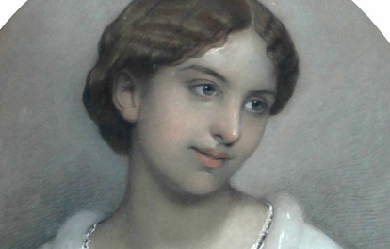

Augusta Webster (30 January 1837 - 5 September 1894) born in Poole, Dorset as Julia Augusta Davies, was an English poet, dramatist, essayist, and translator. The daughter of Vice-admiral George Davies and Julia Hume she spent her younger years on board the ship he was stationed, the Griper. She studied Greek at home, taking a particular interest in Greek drama, and went on to study at the Cambridge School of Art. She published her first volume of poetry in 1860 under the pen name Cecil Homes. In 1863 she married Thomas Webster, a fellow at Trinity College, Cambridge. They had a daughter, Augusta Georgiana, who married Reverend George Theobald Bourke, a younger son of the Joseph Bourke, 3rd Earl of Mayo. Much of Webster’s writing explored the condition of women, and she was a strong advocate of women’s right to vote, working for the London branch of the National Committee for Women’s Suffrage. Webster was the first female writer to hold elective office, having been elected to the London School Board in 1879 and 1885. In 1885 she travelled to Italy in an attempt to improve her failing health. She died on September 5, 1894, at 57. During her lifetime her writing was acclaimed and she was considered by some the successor to Elizabeth Barrett Browning. After her death, however, her reputation quickly declined. Since the mid-1990s she has gained increasing critical attention from scholars such as Isobel Armstrong, Angela Leighton, and Christine Sutphin, Her best-known poems include three long dramatic monologues spoken by women: “A Castaway,” “Circe”, and “The Happiest Girl In The World”, as well as a posthumously published sonnet-sequence, “Mother and Daughter”.
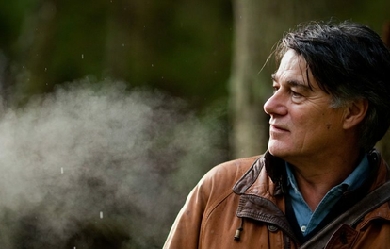

David Whyte (born 2 November 1955) is an English poet. He is quoted as saying that all of his poetry and philosophy is based on "the conversational nature of reality". Life and Work Whyte's mother was from Waterford, Ireland, and his father was a Yorkshireman. He attributes his poetic interest to both the songs and poetry of his mother's Irish heritage and to the landscape of West Yorkshire. He grew up in West Yorkshire and has commented that he had "a Wordsworthian childhood", in the fields, woods and on the moors. Whyte has a degree in Marine zoology from Bangor University. During his twenties Whyte worked as a naturalist and lived in the Galapagos Islands, where he experienced a near drowning on the southern shore of Hood Island. He led anthropological and natural history expeditions in the Andes the Amazon and the Himalayas. Whyte moved to the US in 1981 and began a career as a poet and speaker in 1986. From 1987 he began taking his poetry and philosophy to larger audiences including consulting and lecturing on organisational leadership models in the US and UK exploring the role of creativity in business. He has worked with companies such as Boeing, AT&T, NASA, Toyota, The Royal Air Force and the Arthur Andersen accountancy group. Work and vocation and "Conversational Leadership" is the subject of several of Whyte's prose books, including Crossing the Unknown Sea: Work as Pilgrimage of Identity, The Three Marriages: Reimagining Work, Self and Relationship and The Heart Aroused: Poetry and the Preservation of The Soul in Corporate America (top of business best seller list). Whyte has written seven volumes of poetry and four books of prose. Pilgrim is based on the human need to travel, "From here to there". The House of Belonging looks at the same human need for home. He describes his collection Everything Is Waiting For You (2003) as arising from the grief at the loss of his mother. His latest book is Consolations: The Solace, Nourishment and Underlying Meaning of Everyday Words, an attempt to "rehabilitate" many everyday words we often use only in pejorative or unimaginative ways. He has also written for newspapers including The Huffington Post and The Observer. He leads group poetry and walking journeys regularly in Ireland, England and Italy. He has an honorary degree from Neumann College, Pennsylvania, and is Associate Fellow of both Templeton College, Oxford, and the Saïd Business School, Oxford. Whyte runs the Many Rivers organisation and Invitas: The Institute for conversational leadership, which he founded in 2014. He has lived in Seattle and on Whidbey Island and currently lives in Langley, in the US Pacific North West and holds dual US-British citizenship. He has one daughter, Charlotte, from his second marriage to Dr. Leslie Cotter, from whom he divorced in November 2014, and a son, Brendan from his first marriage to Autumn Preble. Whyte has practised Zen and was a regular rock climber. He was a close friend of the Irish poet John O'Donohue. Poetry Collections * Pilgrim (2012) * River Flow: New & Selected Poems Revised Edition (Many Rivers Press 2012) * River Flow: New & Selected Poems 1984–2007 (Many Rivers Press 2007) * Everything is Waiting for You (Many Rivers Press 2003) * The House of Belonging (Many Rivers Press 1996) * Fire in the Earth (Many Rivers Press 1992) * Where Many Rivers Meet (Many Rivers Press 1990) * Songs for Coming Home (Many Rivers Press 1984) Prose * The Three Marriages: Reimagining Work, Self & Relationship (Riverhead 2009) * Crossing the Unknown Sea: Work as A Pilgrimage of Identity (Riverhead 2001) * The Heart Aroused: Poetry & the Preservation of the Soul in Corporate America (Doubleday/Currency 1994) * Consolations: The Solace Nourishment and Underlying Meaning of Everyday Words" (Many Rivers Press 2015) References Wikipedia—http://en.wikipedia.org/wiki/David_Whyte_(poet)
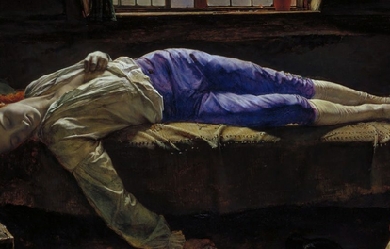
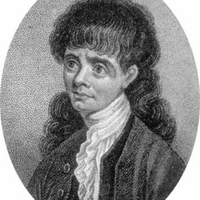
Thomas Chatterton (20 November 1752– 24 August 1770) was an English poet and forger of pseudo-medieval verse. Although fatherless and raised in poverty, he was an exceptionally studious child, publishing mature work by the age of eleven. He was able to pass-off as an imaginary 15th-century poet called Thomas Rowley, chiefly because few people at the time were familiar with medieval poetry, though he was denounced by Horace Walpole. At seventeen, he sought outlets for his political writings in London, having impressed the Lord Mayor, William Beckford, and the radical leader John Wilkes, but his earnings were not enough to keep him, and he poisoned himself in despair. His unusual life and death attracted much interest among the romantic poets, and Alfred de Vigny wrote a play about him that is still performed today. The oil-painting The Death of Chatterton by Pre-Raphaelite artist Henry Wallis has enjoyed lasting fame. Childhood Chatterton was born in Bristol where the office of sexton of St Mary Redcliffe had long been held by the Chatterton family. The poet’s father, also named Thomas Chatterton, was a musician, a poet, a numismatist, and a dabbler in the occult. He had been a sub-chanter at Bristol Cathedral and master of the Pyle Street free school, near Redcliffe church. After Chatterton’s birth (15 weeks after his father’s death on 7 August 1752), his mother established a girls’ school and took in sewing and ornamental needlework. Chatterton was admitted to Edward Colston’s Charity, a Bristol charity school, in which the curriculum was limited to reading, writing, arithmetic and the catechism. Chatterton, however, was always fascinated with his uncle the sexton and the church of St Mary Redcliffe. The knights, ecclesiastics and civic dignitaries on its altar tombs became familiar to him. Then he found a fresh interest in oaken chests in the muniment room over the porch on the north side of the nave, where parchment deeds, old as the Wars of the Roses, lay forgotten. Chatterton learned his first letters from the illuminated capitals of an old musical folio, and he learned to read out of a black-letter Bible. He did not like, his sister said, reading out of small books. Wayward from his earliest years, and uninterested in the games of other children, he was thought to be educationally backward. His sister related that on being asked what device he would like painted on a bowl that was to be his, he replied, “Paint me an angel, with wings, and a trumpet, to trumpet my name over the world.” From his earliest years he was liable to fits of abstraction, sitting for hours in what seemed like a trance, or crying for no reason. His lonely circumstances helped foster his natural reserve, and to create the love of mystery which exercised such an influence on the development of his poetry. When Chatterton was six, his mother began to recognise his capacity; at eight he was so eager for books that he would read and write all day long if undisturbed; by the age of eleven, he had become a contributor to Felix Farley’s Bristol Journal. His confirmation inspired him to write some religious poems published in that paper. In 1763 a cross which had adorned the churchyard of St Mary Redcliffe for upwards of three centuries was destroyed by a churchwarden. The spirit of veneration was strong in Chatterton, and he sent to the local journal on 7 January 1764 a satire on the parish vandal. He also liked to lock himself in a little attic which he had appropriated as his study; and there, with books, cherished parchments, loot purloined from the muniment room of St Mary Redcliffe, and drawing materials, the child lived in thought with his 15th century heroes and heroines. First “medieval” works The first of his literary mysteries, the dialogue of “Elinoure and Juga,” was written before he was 12, and he showed it to Thomas Phillips, the usher at the boarding school Colston’s Hospital where he was a pupil, pretending it was the work of a 15th-century poet. Chatterton remained a boarder at Colston’s Hospital for more than six years, and it was only his uncle who encouraged the pupils to write. Three of Chatterton’s companions are named as youths whom Phillips’s taste for poetry stimulated to rivalry; but Chatterton told no one about his own more daring literary adventures. His little pocket-money was spent on borrowing books from a circulating library; and he ingratiated himself with book collectors, in order to obtain access to John Weever, William Dugdale and Arthur Collins, as well as to Thomas Speght’s edition of Chaucer, Spenser and other books. At some point he came across Elizabeth Cooper’s anthology of verse, which is said to have been a major source for his inventions. Chatterton’s “Rowleian” jargon appears to have been chiefly the result of the study of John Kersey’s Dictionarium Anglo-Britannicum, and it seems his knowledge even of Chaucer was very slight. His holidays were mostly spent at his mother’s house, and much of them in the favourite retreat of his attic study there. He lived for the most part in an ideal world of his own, in the reign of Edward IV, during the mid-15th century, when the great Bristol merchant William II Canynges (d.1474), five times mayor of Bristol, patron and rebuilder of St Mary Redcliffe “still ruled in Bristol’s civic chair.” Canynges was familiar to him from his recumbent effigy in Redcliffe church, and is represented by Chatterton as an enlightened patron of art and literature. Adopts persona of Thomas Rowley Chatterton soon conceived the romance of Thomas Rowley, an imaginary monk of the 15th century, and adopted for himself the pseudonym Thomas Rowley for poetry and history. According to psychoanalyst Louise J. Kaplan, his being fatherless played a great role in his imposturous creation of Rowley. The development of his masculine identity was held back by the fact that he was raised by two women: his mother Sarah and his sister Mary. Therefore, “to reconstitute the lost father in fantasy,” he unconsciously created "two interweaving family romances [fantasies], each with its own scenario." The first of these was the romance of Rowley for whom he created a fatherlike, wealthy patron, William Canynge, while the second was as Kaplan named it his romance of “Jack and the Beanstalk.” He imagined he would become a famous poet who by his talents would be able to rescue his mother from poverty. Chatterton’s search for a patron To bring his hopes to life, Chatterton started to look for a patron. At first, he was trying to do so in Bristol where he became acquainted with William Barrett, George Catcott and Henry Burgum. He assisted them by providing Rowley transcripts for their work. The antiquary William Barrett relied exclusively on these fake transcripts when writing his History and Antiquities of Bristol (1789) which became an enormous failure. But since his Bristol patrons were not willing to pay him enough, he turned to the wealthier Horace Walpole. In 1769 Chatterton sent specimens of Rowley’s poetry and “The Ryse of Peyncteynge yn Englade” to Walpole who offered to print them “if they have never been printed.” Later, however, finding that Chatterton was only sixteen and that the alleged Rowley pieces might have been forgeries, he scornfully sent him away. Political writings Badly hurt by Walpole’s snub, Chatterton wrote very little for a summer. Then, after the end of the summer, he turned his attention to periodical literature and politics, and exchanged Farley’s Bristol Journal for the Town and Country Magazine and other London periodicals. Assuming the vein of the pseudonymous letter writer Junius—then in the full blaze of his triumph—he turned his pen against the Duke of Grafton, the Earl of Bute and Augusta of Saxe-Gotha, the Princess of Wales. Determines on leaving Bristol He had just dispatched one of his political diatribes to the Middlesex Journal, when he sat down on Easter Eve, 17 April 1770, and penned his “Last Will and Testament,” a satirical compound of jest and earnest, in which he intimated his intention of ending his life the following evening. Among his satirical bequests, such as his “humility” to the Rev. Mr Camplin, his “religion” to Dean Barton, and his “modesty” along with his “prosody and grammar” to Mr Burgum, he leaves “to Bristol all his spirit and disinterestedness, parcels of goods unknown on its quay since the days of Canynge and Rowley.” In more genuine earnestness he recalls the name of Michael Clayfield, a friend to whom he owed intelligent sympathy. The will was possibly prepared in order to frighten his master into letting him go. If so, it had the desired effect. John Lambert, the attorney to whom he was apprenticed, cancelled his indentures; his friends and acquaintances having donated money, Chatterton went to London. London Chatterton was already known to the readers of the Middlesex Journal as a rival of Junius, under the nom de plume of Decimus. He had also been a contributor to Hamilton’s Town and Country Magazine, and speedily found access to the Freeholder’s Magazine, another political miscellany supportive of John Wilkes and liberty. His contributions were accepted, but the editors paid little or nothing for them. He wrote hopefully to his mother and sister, and spent his first earnings in buying gifts for them. Wilkes himself had noted his trenchant style “and expressed a desire to know the author”; and Lord Mayor William Beckford graciously acknowledged a political address of his, and greeted him “as politely as a citizen could.” He was abstemious and extraordinarily diligent. He could assume the style of Junius or Tobias Smollett, reproduce the satiric bitterness of Charles Churchill, parody James Macpherson’s Ossian, or write in the manner of Alexander Pope or with the polished grace of Thomas Gray and William Collins. He wrote political letters, eclogues, lyrics, operas and satires, both in prose and verse. In June 1770—after nine weeks in London—he moved from Shoreditch, where he had lodged with a relative, to an attic in Brook Street, Holborn (now beneath Alfred Waterhouse’s Holborn Bars building). He was still short of money; and now state prosecutions of the press rendered letters in the Junius vein no longer admissible, and threw him back on the lighter resources of his pen. In Shoreditch, he had shared a room; but now, for the first time, he enjoyed uninterrupted solitude. His bed-fellow at Mr Walmsley’s, Shoreditch, noted that much of the night was spent by him in writing; and now he could write all night. The romance of his earlier years revived, and he transcribed from an imaginary parchment of the old priest Rowley his “Excelente Balade of Charitie.” This poem, disguised in archaic language, he sent to the editor of the Town and Country Magazine, where it was rejected. Mr Cross, a neighbouring apothecary, repeatedly invited him to join him at dinner or supper; but he refused. His landlady also, suspecting his necessity, pressed him to share her dinner, but in vain. “She knew,” as she afterwards said, “that he had not eaten anything for two or three days.” But he assured her that he was not hungry. The note of his actual receipts, found in his pocket-book after his death, shows that Hamilton, Fell and other editors who had been so liberal in flattery, had paid him at the rate of a shilling for an article, and less than eightpence each for his songs; much which had been accepted was held in reserve and still unpaid for. According to his foster-mother, he had wished to study medicine with Barrett, and in his desperation he wrote to Barrett for a letter to help him to an opening as a surgeon’s assistant on board an African trader. Death While walking along St Pancras Churchyard, Chatterton much absorbed in thought, took no notice of an open grave, newly dug in his path, and subsequently tumbled into it. His walking companion upon observing this event, helped Chatterton out and told him in a jocular manner, that he was happy in assisting at the resurrection of genius. Chatterton replied, “My dear friend, I have been at war with the grave for some time now.” Chatterton would commit suicide three days later. On 24 August 1770, he retired for the last time to his attic in Brook Street, carrying with him the arsenic which he drank, after tearing into fragments whatever literary remains were at hand. He was only 17 years and nine months old. A few days later one Dr Thomas Fry came to London with the intention of giving financial support to the young boy “whether discoverer or author merely.” A fragment, probably one of the last pieces written by the impostor-poet was put together by Dr Fry from the shreds of paper that covered the floor of Thomas Chatterton’s Brook Street attic on the morning of 25 August 1770. The would-have-been patron of the poet had an eye for literary forgeries, and purchased the scraps which the poet’s landlady, Mrs Angel swept into a box, cherishing the hope of discovering a suicide note among the pieces. This fragment, possibly one of the remnants of Chatterton’s very last literary efforts, was identified by Dr Fry to be a modified ending of the poet’s tragical interlude Aella. The fragment is now in the possession of Bristol Public Library and Art Gallery. The final Alexandrine is completely missing, together with Chatterton’s notes. However, according to Dr Fry, the character who utters the final lines must have been Birtha, whose last word might have been something like “kisste.” Posthumous recognition The death of Chatterton attracted little notice at the time; for the few who then entertained any appreciative estimate of the Rowley poems regarded him as their mere transcriber. He was interred in a burying-ground attached to the Shoe Lane Workhouse, in the parish of St Andrew, Holborn, later the site of Farringdon Market. There is a discredited story that the body of the poet was recovered, and secretly buried by his uncle, Richard Phillips, in Redcliffe Churchyard. There a monument has since been erected to his memory, with the appropriate inscription, borrowed from his “Will,” and so supplied by the poet’s own pen. “To the memory of Thomas Chatterton. Reader! judge not. If thou art a Christian, believe that he shall be judged by a Superior Power. To that Power only is he now answerable.” It was after Chatterton’s death that the controversy over his work began. Poems supposed to have been written at Bristol by Thomas Rowley and others, in the Fifteenth Century (1777) was edited by Thomas Tyrwhitt, a Chaucerian scholar who believed them genuine medieval works. However, the appendix to the following year’s edition recognises that they were probably Chatterton’s own work. Thomas Warton, in his History of English Poetry (1778) included Rowley among 15th-century poets, but apparently did not believe in the antiquity of the poems. In 1782 a new edition of Rowley’s poems appeared, with a “Commentary, in which the antiquity of them is considered and defended,” by Jeremiah Milles, Dean of Exeter. The controversy which raged round the Rowley poems is discussed in Andrew Kippis, Biographia Britannica (vol. iv., 1789), where there is a detailed account by G Gregory of Chatterton’s life (pp. 573–619). This was reprinted in the edition (1803) of Chatterton’s Works by Robert Southey and Joseph Cottle, published for the benefit of the poet’s sister. The neglected condition of the study of earlier English in the 18th century alone accounts for the temporary success of Chatterton’s mystification. It has long been agreed that Chatterton was solely responsible for the Rowley poems; the language and style were analysed in confirmation of this view by W. W. Skeat in an introductory essay prefaced to vol. ii. of The Poetical Works of Thomas Chatterton (1871) in the “Aldine Edition of the British Poets.” The Chatterton manuscripts originally in the possession of William Barrett of Bristol were left by his heir to the British Museum in 1800. Others are preserved in the Bristol library. Legacy Chatterton’s genius and his death are commemorated by Percy Bysshe Shelley in Adonais (though its main emphasis is the commemoration of Keats), by William Wordsworth in “Resolution and Independence,” by Samuel Taylor Coleridge in “Monody on the Death of Chatterton,” by Dante Gabriel Rossetti in “Five English Poets,” and in John Keats’ sonnet “To Chatterton.” Keats also inscribed Endymion “to the memory of Thomas Chatterton.” Two of Alfred de Vigny’s works, Stello and the drama Chatterton, give fictionalized accounts of the poet; in the former, there is a scene in which William Beckford’s harsh criticism of Chatterton’s work drives the poet to suicide. The three-act play “Chatterton” was first performed at the Théâtre-Français, Paris on February 12, 1835. Herbert Croft, in his Love and Madness, interpolated a long and valuable account of Chatterton, giving many of the poet’s letters, and much information obtained from his family and friends (pp. 125–244, letter li.). The most famous image of Chatterton in the 19th century was The Death of Chatterton (1856) by Henry Wallis, now in Tate Britain, London. Two smaller versions, sketches or replicas, are held by the Birmingham Museum and Art Gallery and the Yale Center for British Art. The figure of the poet was modelled by the young George Meredith. Two of Chatterton’s poems were set to music as glees by the English composer John Wall Callcott. These include separate settings of distinct verses within the Song to Aelle. His best known poem, O synge untoe mie roundelaie was set to a five-part madrigal by Samuel Wesley. Chatterton has attracted operatic treatment a number of times throughout history, notably Ruggiero Leoncavallo’s largely unsuccessful two-act Chatterton; the German composer Matthias Pintscher’s modernistic Thomas Chatterton; and Australian composer Matthew Dewey’s lyrical yet dramatically intricate one-man mythography entitled “The Death of Thomas Chatterton.” There is a collection of “Chattertoniana” in the British Museum, consisting of works by Chatterton, newspaper cuttings, articles dealing with the Rowley controversy and other subjects, with manuscript notes by Joseph Haslewood, and several autograph letters. E. H. W. Meyerstein, who worked for many years in the manuscript room of the British Museum wrote a definitive work—"A Life of Thomas Chatterton"—in 1930. Peter Ackroyd’s 1987 novel Chatterton was a literary re-telling of the poet’s story, giving emphasis to the philosophical and spiritual implications of forgery. In 1886, architect Herbert Horne and Oscar Wilde unsuccessfully attempted to have a plaque erected at Colston’s School, Bristol. Wilde, who lectured on Chatterton at this time, suggested the inscription: “To The Memory of Thomas Chatterton, One of England’s Greatest Poets, and Sometime pupil at this school.” In 1928 a plaque in memory of Chatterton was mounted on 39, Brooke Street, Holborn, bearing the inscription below. The plaque has subsequently been transferred to a modern office building on the same site. Within Bromley Common, there is a road called Chatterton Road; this is the main thoroughfare in Chatterton Village, based around the public house, The Chatterton Arms. Both road and pub are named after the poet. French singer Serge Gainsbourg entitled one of his songs “Chatterton,” stating: Chatterton suicidé Hannibal suicidé [...] Quant à moi Ça ne va plus très bien. The song was covered (in Portuguese) by Seu Jorge live and recorded in the album Ana & Jorge: Ao Vivo. Works * ‘An Elegy on the much lamented Death of William Beckford, Esq.,’ 4to, pp. 14, 1770. * 'The Execution of Sir Charles Bawdwin’ (edited by Thomas Eagles, F.S.A.), 4to, pp. 26, 1772. * 'Poems supposed to have been written at Bristol, by Thomas Rowley and others, in the Fifteenth Century’ (edited by Thomas Tyrwhitt), 8vo, pp. 307, 1777. * 'Appendix’ (to the 3rd edition of the poems, edited by the same), 8vo, pp. 309–333, 1778. * 'Miscellanies in Prose and Verse, by Thomas Chatterton, the supposed author of the Poems published under the names of Rowley, Canning, &c.' (edited by John Broughton), 8vo, pp. 245, 1778. * 'Poems supposed to have been written at Bristol in the Fifteenth Century by Thomas Rowley, Priest, &c., [edited] by Jeremiah Milles, D.D., Dean of Exeter,' 4to, pp. 545, 1782. * ‘A Supplement to the Miscellanies of Thomas Chatterton,’ 8vo, pp. 88, 1784. * 'Poems supposed to have been written at Bristol by Thomas Rowley and others in the Fifteenth Century’ (edited by Lancelot Sharpe), 8vo, pp. xxix, 329, 1794. * ‘The Poetical Works of Thomas Chatterton,’ Anderson s ‘British Poets,’ xi. 297-322, 1795. * ‘The Revenge: a Burletta ; with additional Songs, by Thomas Chatterton,’ 8vo, pp. 47, 1795. * 'The Works of Thomas Chatterton’ (edited by Robert Southey and Joseph Cottle), 3 vols. 8yo, 1803. * 'The Poetical Works of Thomas Chatterton’ (edited by Charles B. Willcox), 2 vols. 12mo, 1842. * 'The Poetical Works of Thomas Chatterton’ (edited by the Rev Walter Skeat, M.A.), Aldine edition, 2 vols. 8vo, 1875. References Wikipedia—https://en.wikipedia.org/wiki/Thomas_Chatterton
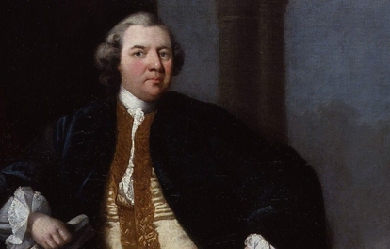

William Shenstone (18 November 1714– 11 February 1763) was an English poet and one of the earliest practitioners of landscape gardening through the development of his estate, The Leasowes. Biography Son of Thomas Shenstone and Anne Penn, daughter of William Penn of Harborough Hall, then in Hagley (now Blakedown), Shenstone was born at the Leasowes, Halesowen. At that time this was an enclave of Shropshire within the county of Worcestershire and now in the West Midlands. Shenstone received part of his formal education at Halesowen Grammar School (now The Earls High School). In 1741, Shenstone became bailiff to the feoffees of Halesowen Grammar School. While attending Solihull School, he began a lifelong friendship with Richard Jago. He went up to Pembroke College, Oxford in 1732 and made another firm friend there in Richard Graves, the author of The Spiritual Quixote. Shenstone took no degree, but, while still at Oxford, he published Poems on various occasions, written for the entertainment of the author (1737). This edition was intended for private circulation only but, containing the first draft of The Schoolmistress, it attracted some wider attention. Shenstone tried hard to suppress it but in 1742 he published anonymously a revised draft of The Schoolmistress, a Poem in imitation of Spenser. The inspiration of the poem was Sarah Lloyd, teacher of the village school where Shenstone received his first education. Isaac D’Israeli contended that Robert Dodsley had been misled in publishing it as one of a sequence of Moral Poems, its intention having been satirical, as evidenced by the ludicrous index appended to its original publication. In 1741 he published The Judgment of Hercules. He inherited the Leasowes estate, and retired there in 1745 to undertake what proved the chief work of his life, the beautifying of his property. He embarked on elaborate schemes of landscape gardening which gave The Leasowes a wide celebrity (see ferme ornée), but sadly impoverished the owner. Shenstone was not a contented recluse. He desired constant admiration of his gardens, and he never ceased to lament his lack of fame as a poet. Shenstone died unmarried. Critical appraisal Shenstone’s poems of nature were written in praise of her most artificial aspects, but the emotions they express were obviously genuine. His Schoolmistress was admired by Oliver Goldsmith, with whom Shenstone had much in common, and his Elegies written at various times and to some extent biographical in character won the praise of Robert Burns who, in the preface to Poems, chiefly in the Scottish Dialect (1786), called him... that celebrated poet whose divine elegies do honour to our language, our nation and our species. The best example of purely technical skill in his works is perhaps his success in the management of the anapaestic trimeter in his Pastoral Ballad in Four Parts (written in 1743), but first printed in Dodsley’s Collection of Poems (vol. iv., 1755). Arthur Schopenhauer mentions Shenstone in his discussion of equivocation. "[C]oncepts", Schopenhauer asserted, “which in and by themselves contain nothing improper, yet the actual case brought under them leads to an improper conception” are called equivocations. He continued: But a perfect specimen of a sustained and magnificent equivocation is Shenstone’s incomparable epitaph on a justice of the peace, which in its high-sounding lapidary style appears to speak of noble and sublime things, whereas under each of their concepts something quite different is to be subsumed, which appears only in the last word of all as the unexpected key to the whole, and the reader discovers with loud laughter that he has read merely a very obscene equivocation. Bibliography * Shenstone’s works were first published by his friend Robert Dodsley (3 vols., 1764–1769). The second volume contains Dodsley’s description of the Leasowes. The last, consisting of correspondence with Graves, Jago and others, appeared after Dodsley’s death. Other letters of Shenstone’s are included in Select Letters (ed. Thomas Hill 1778). The letters of Lady Luxborough (née Henrietta St John) to Shenstone were printed by T. Dodsley in 1775; much additional correspondence is preserved in the British Museum letters to Lady Luxborough (Add. MS. 28958), Dodsley’s letters to Shenstone (Add. MS. 28959), and correspondence between Shenstone and Bishop Percy from 1757 to 1763 the last being of especial interest; To Shenstone was due the original suggestion of Percy’s Reliques, a service which would alone entitle him to a place among the precursors of the romantic movement in English literature. * In a letter written in 1741 Shenstone became the first person to record the use of “floccinaucinihilipilification”. In the first edition of the Oxford English Dictionary this was recognised as the longest word in the English language. Memorials * One of the five houses of Solihull School is named after him. * One of the four houses of The Earls High School (formerly Halesowen Grammar School) is named after him. * Solihull School’s annual publication is named after him– The Shenstonian. * Louis-René Girardin built a memorial in the French town of Ermenonville. * A prominent public house (pub) in Halesowen (Queensway) is named “The William Shenstone”. The walls are adorned with engravings of The Leasowes in Shenstone’s time. * Two roads in the area near to his home in the Leasowes Park are named in his honour: Shenstone Valley Road and Shenstone Avenue. References Wikipedia—https://en.wikipedia.org/wiki/William_Shenstone
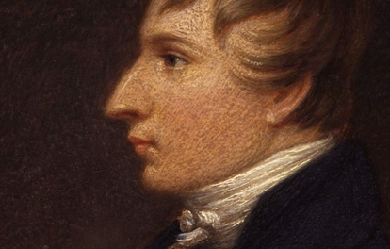

Henry Kirke White (21 March 1785– 19 October 1806) was an English poet, who died at a young age. Life White was born in Nottingham, the son of a butcher, a trade for which he was himself intended. However, he was greatly attracted to book-learning. By age seven, he was giving reading lessons (unbeknownst to the rest of the family, being offered after the household were abed) to a family servant. After being briefly apprenticed to a stocking-weaver, he was articled to a lawyer. While in this position, he excelled in studying Latin and Greek. Seeing the results of White’s diligent studies, his master offered to release him from his contract if he had sufficient means to go to college. He received encouragement from Capel Lofft, the friend of Robert Bloomfield, and published in 1803 Clifton Grove, a Sketch in Verse, with other Poems, dedicated to Georgiana, Duchess of Devonshire. The book was violently attacked in the Monthly Review (February 1804), but White was rewarded with a kind letter from Robert Southey. Through the efforts of his friends, he was able to enter St John’s College, Cambridge, having spent a year beforehand with a private tutor, the Rev Lorenzo Grainger at Winteringham, Lincolnshire. Close application to study induced a serious illness, consumption was the disease, according to Sir Harris Nicholas memoir, to which he ultimately became a victim, and to which White made many allusions in his poems and letters. Fears were also entertained for his sanity, but he went into residence at Cambridge, with a view to taking holy orders, in the autumn of 1805. The strain of continuous study proved fatal. He was buried in the church of All Saints Jewry, Cambridge, which stood opposite the gates of St John’s College, but has since been demolished. The genuine piety of his religious verses secured a place in popular hymnology for some of his hymns, in particular the still popular 'O Lord, another day is flown’. Much of his fame was due to sympathy inspired by his early death; but Lord Byron agreed with Southey about the young man’s promise. Robert Southey said of him 'he could not rest satisfied till he had formed his principles upon the basis of Christianity. Literary legacy His Remains, with his letters (which along with White’s poems contain many allusions to himself that they may almost be considered an autobiography ) and an account of his life, were edited (5 vols., 1807–1822) by Robert Southey. See prefatory notices by Sir Harris Nicolas to his Poetical Works (new ed., 1866) in the Aldine Press British poets; by Harry Kirke Swann in the volume of selections (1897) in the Canterbury Poets; and by John Drinkwater to the edition in the “Muses’ Library.” See also John Thomas Godfrey and J. Ward, The Homes and Haunts of Henry Kirke White (1908). Lord Byron said of White in a tributary eulogy 'while life was in its spring, thy young muse just waved her joyous wing’. White’s complete works were published in 1923. References Wikipedia—https://en.wikipedia.org/wiki/Henry_Kirke_White
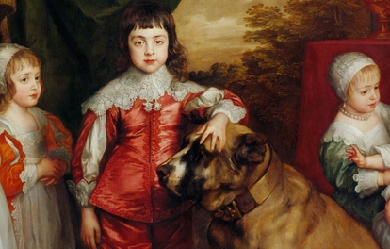

John Wilbye (baptized 7 March 1574– September 1638) was an English madrigal composer. Life The son of a tanner, he was born at Brome, Suffolk, near Diss, and received the patronage of the Cornwallis family of Brome Hall. Wilbye was employed for decades at Hengrave Hall, near Bury St. Edmunds, where he seems to have been recruited in the 1590s by Elizabeth Cornwallis who was married to the property’s owner, Sir Thomas Kitson (or Kytson). The Kitsons also had a long association with the composer Edward Johnson, who was more than twenty years older than Wilbye, and began working at Hengrave in the 1570s. As well as working in Suffolk, Wilbye was involved with the music scene in London, where the Kitsons kept a town house (first in Austin Friars and from about 1601 in Clerkenwell). His first book of madrigals was published in London in 1598, the madrigals being described as “newly composed”. The publication was dedicated to Sir Charles Cavendish, whose first wife had been a Kitson. Wilbye remained in contact with his printer Thomas Easte. In 1600 Wilbye and Edward Johnson took on a proofreading job for Easte, the first edition of Dowland’s Second Book of Songs, as Dowland was abroad. Easte died in 1608, and Wilbye’s second book of madrigals was printed the following year by Easte’s nephew and successor, Thomas Snodham. Wilbye never married. In 1628, on Lady Kitson’s death, all the furnishings, books, and musical instruments at Hengrave Hall were settled by her will upon the new owners of the house, first on her daughter Mary Darcy and then upon her granddaughter Penelope. However, Wilbye left Hengrave to live in retirement at Mary Darcy’s house in Colchester, where he died. He is buried in the graveyard of Holy Trinity Church, in Colchester town centre. (The building is currently the CO1 cafe and Young Christian Centre.) Compositions Hengrave was a recusant household, but little religious music by Wilbye survives, and even less keyboard music (one piece in Clement Matchett’s Virginal Book). His main interest seems to have been madrigals. A set of madrigals by him appeared in 1598, and a second in 1608, the two sets containing sixty-four pieces. Wilbye is probably the most famous of all the English madrigalists; his pieces have long been favourites and are often included in modern collections. His madrigals include Weep, weep mine eyes, Weep, O mine eyes and Draw on, sweet night. He also wrote the poem, Love not me for comely grace. His style is characterized by delicate writing for the voice, acute sensitivity to the text and the use of “false relations” between the major and minor modes. References Wikipedia—https://en.wikipedia.org/wiki/John_Wilbye
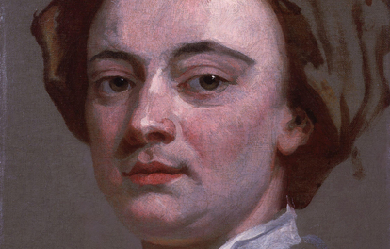
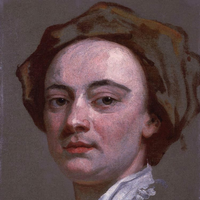
John Gay (30 June 1685 – 4 December 1732) was an English poet and dramatist and member of the Scriblerus Club. He is best remembered for The Beggar’s Opera (1728), a ballad opera. The characters, including Captain Macheath and Polly Peachum, became household names. Gay was born in Barnstaple, England, and was educated at the town’s grammar school. On leaving school he was apprenticed to a silk mercer in London, but being weary, according to Samuel Johnson, “of either the restraint or the servility of his occupation”, he soon returned to Barnstaple, where he was educated by his uncle, the Rev. John Hanmer, the Nonconformist minister of the town. He then returned to London.
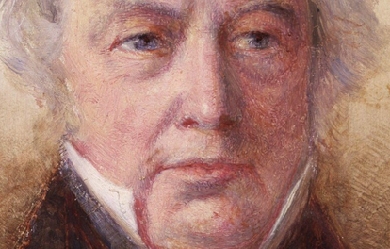
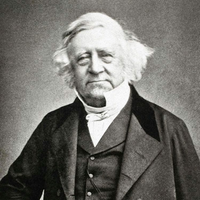
Thomas Love Peacock (18 October 1785– 23 January 1866) was an English novelist, poet, and official of the East India Company. He was a close friend of Percy Bysshe Shelley and they influenced each other’s work. Peacock wrote satirical novels, each with the same basic setting: characters at a table discussing and criticising the philosophical opinions of the day. Background and education Peacock was born in Weymouth, Dorset, the son of Samuel Peacock and his wife Sarah Love, daughter of Thomas Love a retired master of a man-of-war in the Royal Navy. His father was a glass merchant in London, partner of a Mr Pellatt, presumed to be Apsley Pellatt (1763–1826). Peacock went with his mother to live with her family at Chertsey in 1791 and in 1792 went to a school run by Joseph Harris Wicks at Englefield Green where he stayed for six and a half years. Peacock’s father died in 1794 in “poor circumstances” leaving a small annuity. Peacock’s first known poem was an epitaph for a school fellow written at the age of ten and another on his Midsummer Holidays was written when he was thirteen. Around that time in 1798 he was abruptly taken from school and from then on was entirely self-educated. Early occupation and travelling In February 1800, Peacock became a clerk with Ludlow Fraser Company, who were merchants in the City of London. He lived with his mother on the firm’s premises at 4 Angel Court Throgmorton Street. He won the eleventh prize from the Monthly Preceptor for a verse answer to the question “Is History or Biography the More Improving Study?”. He also contributed to “The Juvenile Library”, a magazine for youth whose competitions excited the emulation of several other boys including Leigh Hunt, de Quincey, and W. J. Fox. He began visiting the Reading Room of the British Museum and continued doing so for many years, diligently studying the best literature in Greek, Latin, French, and Italian. In 1804 and 1806 he published two volumes of poetry, The Monks of St. Mark and Palmyra. Some of Peacock’s juvenile compositions were privately printed by Sir Henry Cole. In around 1806 Peacock left his job in the city and during the year made a solitary walking tour of Scotland. The annuity left by his father expired in October 1806. In 1807 he returned to live at his mother’s house at Chertsey. He was briefly engaged to Fanny Faulkner, but it was broken off through the interference of her relations. His friends, as he hints, thought it wrong that so clever a man should be earning so little money. In the autumn of 1808 he became private secretary to Sir Home Popham, commanding the fleet before Flushing. By the end of the year he was serving Captain Andrew King aboard HMS Venerable in the Downs. His preconceived affection for the sea did not reconcile him to nautical realities. “Writing poetry”, he says, “or doing anything else that is rational, in this floating inferno, is next to a moral impossibility. I would give the world to be at home and devote the winter to the composition of a comedy”. He did write prologues and addresses for dramatic performances on board HMS Venerable. His dramatic taste then and for the next nine years resulted in attempts at comedies and lighter pieces, all of which lacked ease of dialogue and over-elaborated incident and humour. He left HMS Venerable in March 1809 at Deal and walked around Ramsgate in Kent before returning home to Chertsey. He had sent his publisher Edward Hookham a little poem of the River Thames which he expanded during the year into “The Genius of the Thames”. On 29 May he set out on a two-week expedition to trace the course of the Thames from its source to Chertsey and spent two or three days staying in Oxford. Peacock travelled to North Wales in January 1810 where he visited Tremadog and settled at Maentwrog in Merionethshire. At Maentwrog he was attracted to the parson’s daughter Jane Gryffydh, whom he referred to as the “Caernavonshire nymph”. Early in June 1810, the Genius of the Thames was published by Thomas and Edward Hookham. Early in 1811 he left Maentwrog to walk home via South Wales. He climbed Cadair Idris and visited Edward Scott at Bodtalog near Tywyn. His journey included Aberystwyth and Devil’s Bridge, Ceredigion. Later in 1811, his mother’s annuity expired and she had to leave Chertsey and moved to Morven Cottage Wraysbury near Staines with the help of some friends. In 1812 they had to leave Morven Cottage over problems paying tradesmen’s bills. Friendship with Shelley In 1812 Peacock published another elaborate poem, The Philosophy of Melancholy, and in the same year made the acquaintance of Shelley. He wrote in his memoir of Shelley, that he “saw Shelley for the first time just before he went to Tanyrallt”, whither Shelley proceeded from London in November 1812 (Hogg’s Life of Shelley, vol. 2, pp. 174, 175.) Thomas Hookham, the publisher of all Peacock’s early writings, was possibly responsible for the introduction. It was Hookham’s circulating library which Shelley used for many years, and Hookham had sent The Genius of the Thames to Shelley, and in the Shelley Memorials, pp. 38–40, is a letter from the poet dated 18 August 1812, extolling the poetical merits of the performance and with equal exaggeration censuring what he thought the author’s misguided patriotism. Peacock and Shelley became friends and Peacock influenced Shelley’s fortunes both before and after his death. In the winter of 1813 Peacock accompanied Shelley and his first wife Harriet to Edinburgh. Peacock was fond of Harriet, and in his old age defended her reputation from slanders spread by Jane, Lady Shelley, the daughter-in-law of Shelley’s second wife Mary. In 1814 Peacock published a satirical ballad, Sir Proteus, which appeared under the pseudonym “P. M. O’Donovan, Esq.” Shelley resorted to him during the agitation of mind which preceded his separation from Harriet. After Shelley deserted Harriet, Peacock became an almost daily visitor throughout the winter of 1814–15 of Shelley and Mary Godwin (later Mary Shelley), at their London lodgings. In 1815 Peacock shared their voyage to the source of the Thames. “He seems”, writes Charles Clairmont, Mary Godwin’s stepbrother and a member of the party, “an idly-inclined man; indeed, he is professedly so in the summer; he owns he cannot apply himself to study, and thinks it more beneficial to him as a human being entirely to devote himself to the beauties of the season while they last; he was only happy while out from morning till night”. By September 1815 when Shelley had taken up residence at Bishopsgate, near Windsor, Peacock had settled at Great Marlow. Peacock wrote Headlong Hall in 1815, and it was published the following year. With this work Peacock found the true field for his literary gift in the satiric novel, interspersed with delightful lyrics, amorous, narrative, or convivial. During the winter of 1815–16 Peacock was regularly walking over to visit Shelley at Bishopgate. There he met Thomas Jefferson Hogg, and “the winter was a mere Atticism. Our studies were exclusively Greek”. In 1816 Shelley went abroad, and Peacock appears to have been entrusted with the task of finding the Shelleys a new residence. He fixed them near his own home at Great Marlow. Peacock received a pension from Shelley for a time, and was put into requisition to keep off wholly unauthorised intruders upon Shelley’s hospitable household. Peacock was consulted about alterations in Shelley’s Laon and Cythna, and Peacock’s enthusiasm for Greek poetry probably had some influence on Shelley’s work. Shelley’s influence upon Peacock may be traced in the latter’s poem of Rhododaphne, or the Thessalian Spell, published in 1818 and Shelley wrote a eulogistic review of it. Peacock also wrote at this time the satirical novels Melincourt published in 1817 and Nightmare Abbey published in 1818. Shelley made his final departure for Italy and the friends’ agreement for mutual correspondence produced Shelley’s magnificent descriptive letters from Italy, which otherwise might never have been written. Peacock told Shelley that “he did not find this brilliant summer,” of 1818, “very favourable to intellectual exertion;” but before it was quite over “rivers, castles, forests, abbeys, monks, maids, kings, and banditti were all dancing before me like a masked ball.” He was at this time writing his romance of Maid Marian which he had completed except for the last three chapters. East India Company At the beginning of 1819, Peacock was unexpectedly summoned to London for a period of probation with the East India Company who needed to reinforce their staff with talented people. They summoned to their service in the Examiner’s office James Mill and three others. Peacock was included at the recommendation of Peter Auber, the company historian, whom he had known at school, though probably not as a school-fellow. Peacock’s test papers earned the high commendation, “Nothing superfluous and nothing wanting.” On 13 January 1819, he wrote from 5 York Street, Covent Garden: "I now pass every morning at the India House, from half-past 10 to half-past 4, studying Indian affairs. My object is not yet attained, though I have little doubt but that it will be. It was not in the first instance of my own seeking, but was proposed to me. It will lead to a very sufficing provision for me in two or three years. It is not in the common routine of office, but is an employment of a very interesting and intellectual kind, connected with finance and legislation, in which it is possible to be of great service, not only to the Company, but to the millions under their dominion.” On 1 July 1819 Peacock slept for the first time in a house at 18 Stamford Street, Blackfriars which, “as you might expect from a Republican, he has furnished very handsomely.” His mother continued to live with him in Stamford Street. In 1820 Peacock contributed to Ollier’s Literary Pocket Book and wrote The Four Ages of Poetry, the latter of which argued that poetry’s relevance was being eclipsed by science, a claim which provoked Shelley’s Defence of Poetry. The official duties of the India House delayed the completion and publication of Maid Marian, begun in 1818, until 1822, and as a result of the delay it was taken for an imitation of Ivanhoe although its composition had, in fact, preceded Scott’s novel. It was soon dramatised with great success by Planché, and was translated into French and German. Peacock’s salary was now £1000 a year, and in 1823 he acquired a country residence at Lower Halliford, near Shepperton, Middlesex, constructed out of two old cottages, where he could gratify the love of the Thames, which was as strong as his enthusiasm for classical literature. In the winter of 1825–26 he wrote Paper Money Lyrics and other Poems “during the prevalence of an influenza to which the beautiful fabric of paper-credit is periodically subject.” In his early time at the India Office he wrote little except for the operatic criticisms which he regularly contributed to The Examiner, and an occasional article in the Westminster Review or Bentley’s Miscellany. Peacock showed great ability in business and in the drafting of official papers. In 1829 he began to devote attention to steam navigation, and drew up a memorandum for General Chesney’s Euphrates expedition, which was praised both by Chesney and Lord Ellenborough. He opposed the employment of steamers on the Red Sea, probably in deference to the supposed interests of the company. In 1829 he published The Misfortunes of Elphin founded upon Welsh traditions, and in 1831 Crotchet Castle, the most mature and thoroughly characteristic of all his works. He was greatly affected by the death of his mother in 1833 and said himself that he never wrote anything with interest afterwards. Peacock often appeared before parliamentary committees as the company’s champion. In this role in 1834, he resisted James Silk Buckingham’s claim to compensation for his expulsion from the East Indies, and in 1836, he defeated the attack of the Liverpool merchants and Cheshire manufacturers upon the Indian salt monopoly. In 1836 his official career was crowned by his appointment as Chief Examiner of Indian Correspondence, in succession to James Mill. The post was one which could only be filled by someone of sound business capacity and exceptional ability in drafting official documents: and Peacock’s discharge of its duties, it is believed, suffered nothing by comparison either with his distinguished predecessor or his still more celebrated successor, Stuart Mill. In 1837 appeared his Paper Money Lyrics and other Poems of which only one hundred copies were printed. Also in 1837, Headlong Hall, Nightmare Abbey, Maid Marian, and Crotchet Castle appeared together as vol. 57 of Bentley’s Standard Novels. In 1839 and 1840 Peacock superintended the construction of iron steamers which rounded the Cape, and took part in the Chinese war. Peacock’s occupation seems to have principally lain with finance, commerce, and public works. He wrote a light poem on “A Day at the India Office”:— From ten to eleven, have breakfast for seven; From eleven to noon, think you’ve come too soon; From twelve to one, think what’s to be done; From one to two, find nothing to do; From two to three, think it will be A very great bore to stay till four. In about 1852 towards the end of Peacock’s service in the India office, his taste or leisure for authorship returned, and he began to contribute to Fraser’s Magazine in which appeared his entertaining and scholarly Horæ Dramaticæ, a restoration of the Querolus, a Roman comedy probably of the time of Diocletian, and his reminiscences of Shelley. Later life Peacock retired from the India House on 29 March 1856 with an ample pension. In his retirement he seldom left Halliford and spent his life among his books, and in the garden, in which he took great pleasure, and on the River Thames. In 1860 he still showed vigour by the publication in Fraser’s Magazine of Gryll Grange, his last novel. In the same year he added the appendix of Shelley’s letters and there could be no question of the extreme value of this. His last writings were two translations, Gl’ Ingannati (The Deceived) a comedy, performed at Siena in 1861 and Ælia Lælia Crispis of which a limited edition was circulated in 1862. Peacock died at Lower Halliford, 23 January 1866, from injuries sustained in a fire in which he had attempted to save his library, and is buried in the new cemetery at Shepperton. His granddaughter remembered him in these words: In society my grandfather was ever a welcome guest, his genial manner, hearty appreciation of wit and humour in others, and the amusing way in which he told stories made him a very delightful acquaintance; he was always so agreeable and so very witty that he was called by his most intimate friends the “Laughing Philosopher”, and it seems to me that the term “Epicurean Philosopher”, which I have often heard applied to him, describes him accurately and briefly. In public business my grandfather was upright and honourable; but as he advanced in years his detestation of anything disagreeable made him simply avoid whatever fretted him, laughing off all sorts of ordinary calls upon his leisure time. Sir Edward Strachey wrote of him A kind-hearted, genial, friendly man, who loved to share his enjoyment of life with all around him, and self-indulgent without being selfish. Richard Garnett in the Dictionary of National Biography described Peacock as a rare instance of a man improved by prosperity; an element of pedantry and illiberality in his earlier writings gradually disappears in genial sunshine, although, with the advance of age, obstinate prejudice takes its place, good humoured, but unamenable to argument. The vigour of his mind is abundantly proved by his successful transaction of the uncongenial commercial and financial business of the East India Company; and his novels, their quaint prejudices apart, are almost as remarkable for their good sense as for their wit. But for this penetrating sagacity, constantly brought to bear upon the affairs of life, they would seem mere humorous extravaganzas, being farcical rather than comic, and almost entirely devoid of plot and character. They overflow with merriment from end to end, though the humour is frequently too recondite to be generally appreciated, and their style is perfect. They owe much of their charm to the simple and melodious lyrics with which they are interspersed, a striking contrast to the frigid artificiality of Peacock’s more ambitious attempts in poetry. As a critic, he was sensible and sound, but neither possessed nor appreciated the power of his contemporaries, Shelley and Keats, to reanimate classical myths by infusion of the modern spirit. Family Peacock married Jane Griffith or Gryffydh in 1820. In his “Letter to Maria Gisborne”, Shelley referred to Jane as “the milk-white Snowdonian Antelope.” Peacock had four children, a son Edward who was a champion rower, and three daughters. One of them, Mary Ellen, married the novelist George Meredith as her second husband in August 1849. Only his son survived him, and he for less than a year, but he left several grandchildren. Jane Peacock died in 1865. Works * Peacock’s own place in literature is pre-eminently that of a satirist. That he has nevertheless been the favourite only of the few is owing partly to the highly intellectual quality of his work, but mainly to his lack of ordinary qualifications of the novelist, all pretension to which he entirely disclaims. He has no plot, little human interest, and no consistent delineation of character. His personages are mere puppets, or, at best, incarnations of abstract qualities such as grace or beauty, but beautifully depicted. * His comedy combines the mock-Gothic with the Aristophanic. He suffers from that dramatist’s faults and, though not as daring in invention or as free in the use of sexual humour, shares many of his strengths. His greatest intellectual love is for Ancient Greece, including late and minor works such as the Dionysiaca of Nonnus; many of his characters are given punning names taken from Greek to indicate their personality or philosophy. * He tended to dramatize where traditional novelists narrated; he is more concerned with the interplay of ideas and opinions than of feelings and emotions; his dramatis personae is more likely to consist of a cast of more or less equal characters than of one outstanding hero or heroine and a host of minor auxiliaries; his novels have a tendency to approximate the Classical unities, with few changes of scene and few if any subplots; his novels are novels of conversation rather than novels of action; in fact, Peacock is so much more interested in what his characters say to one another than in what they do to one another that he often sets out entire chapters of his novels in dialogue form. Plato’s Symposium is the literary ancestor of these works, by way of the Deipnosophists of Athenaeus, in which (as in much of Peacock) the conversation relates less to exalted philosophical themes than to the points of a good fish dinner. Novels * Headlong Hall (published 1815 but dated 1816) [lightly revised, 1837] * Melincourt (1817) * Nightmare Abbey (1818) [lightly revised, 1837] * Maid Marian (1822) * The Misfortunes of Elphin (1829) * Crotchet Castle (1831) [lightly revised, 1837] * Gryll Grange (1861) [serialised first in 1860] Verse * The Monks of St. Mark (1804?) * Palmyra and other Poems (1805) * The Genius of the Thames: a Lyrical Poem (1810) * The Genius of the Thames Palmyra and other Poems (1812) * The Philosophy of Melancholy (1812) * Sir Hornbook, or Childe Launcelot’s Expedition (1813) * Sir Proteus: a Satirical Ballad (1814) * The Round Table, or King Arthur’s Feast (1817) * Rhododaphne: or the Thessalian Spirit (1818) * Paper Money Lyrics (1837) * The War-Song of Dinas Vawr Essays * The Four Ages of Poetry (1820) * Recollections of Childhood: The Abbey House (1837) * Memoirs of Shelley (1858–62) * The Last Day of Windsor Forest (1887) [composed 1862] * Prospectus: Classical Education Plays * The Three Doctors * The Dilettanti * Gl’Ingannati, or The Deceived (translated from the Italian, 1862) Unfinished tales and novels * Satyrane (c. 1816) * Calidore (c. 1816) * The Pilgrim of Provence (c. 1826) * The Lord of the Hills (c. 1835) * Julia Procula (c. 1850) * A Story Opening at Chertsey (c. 1850) * A Story of a Mansion among the Chiltern Hills (c. 1859) * Boozabowt Abbey (c. 1859) * Cotswald Chace (c. 1860) References Wikipedia—https://en.wikipedia.org/wiki/Thomas_Love_Peacock

